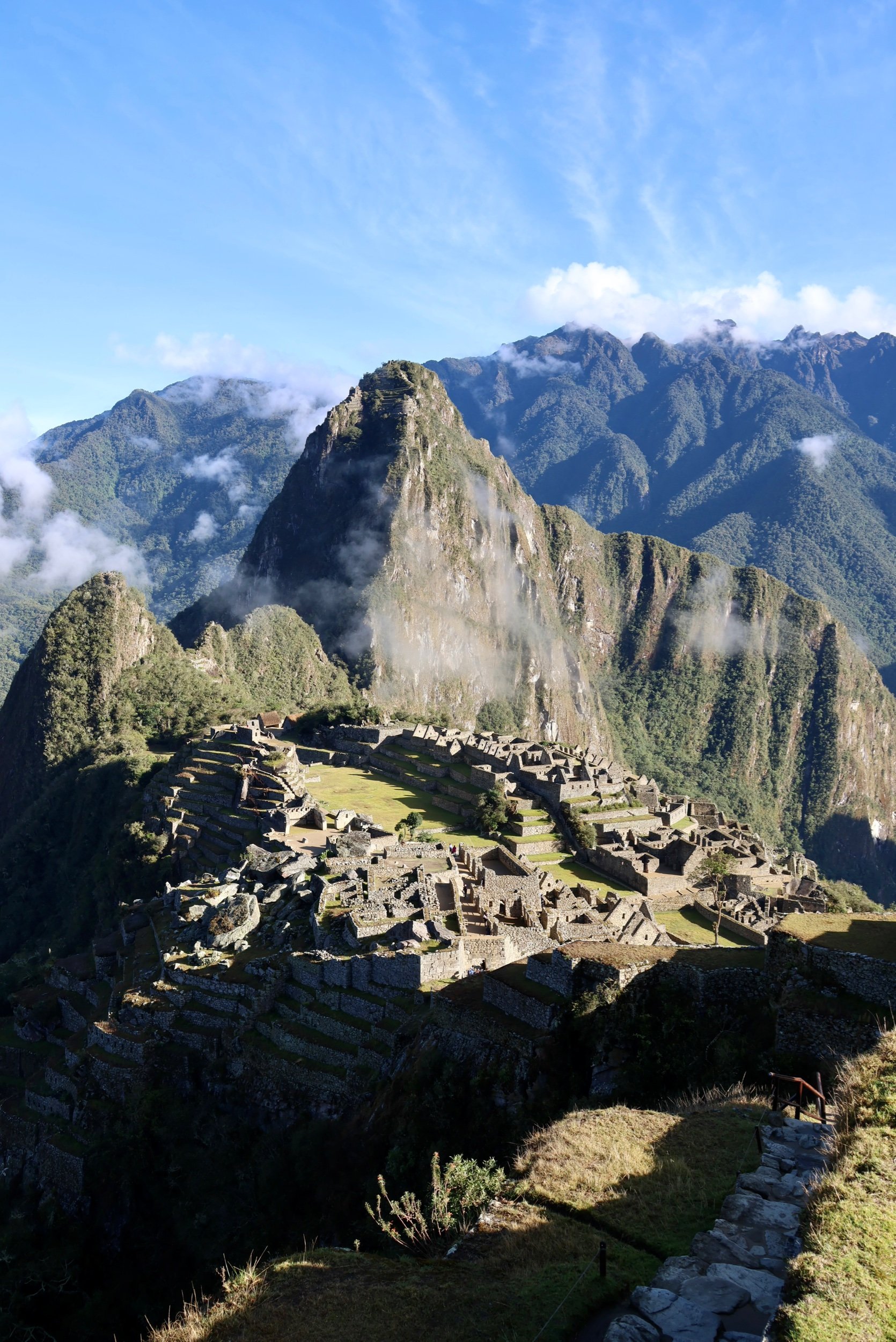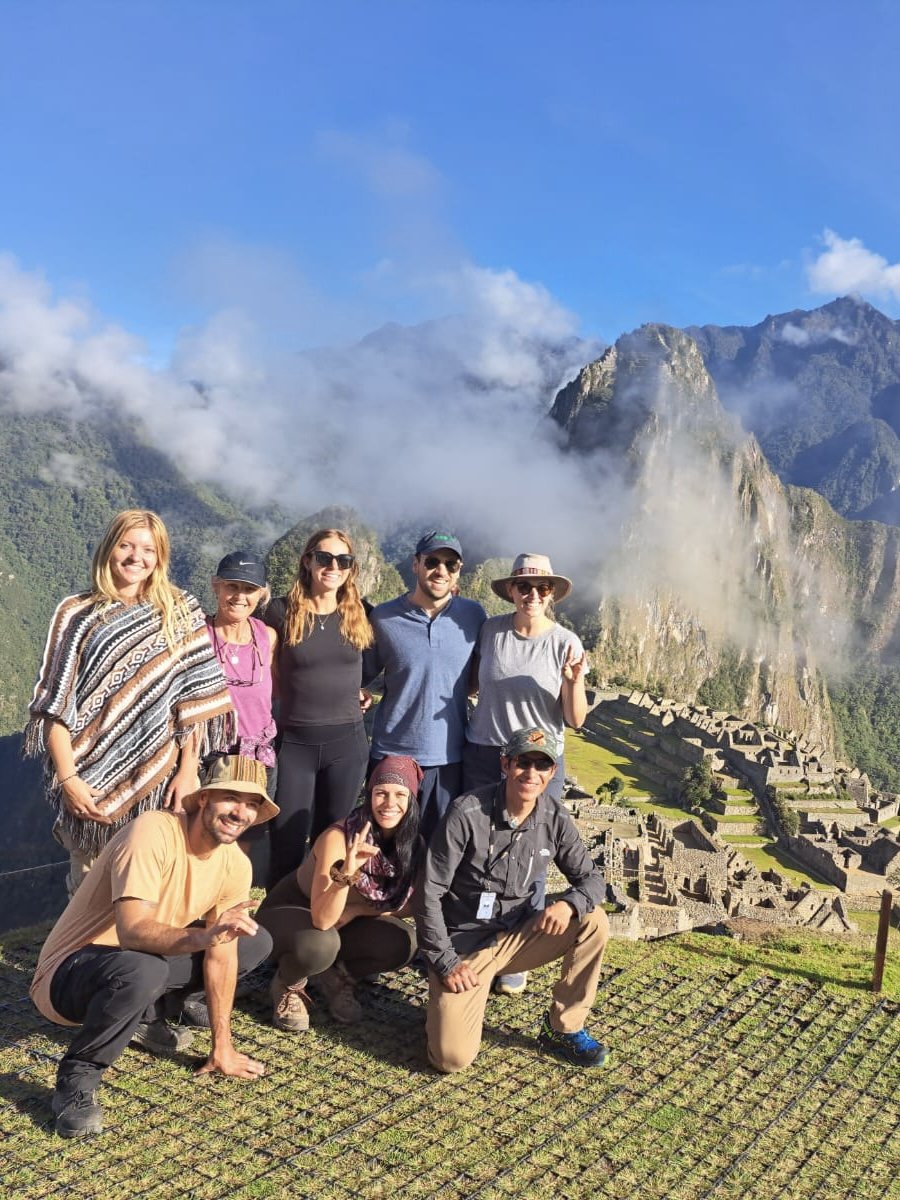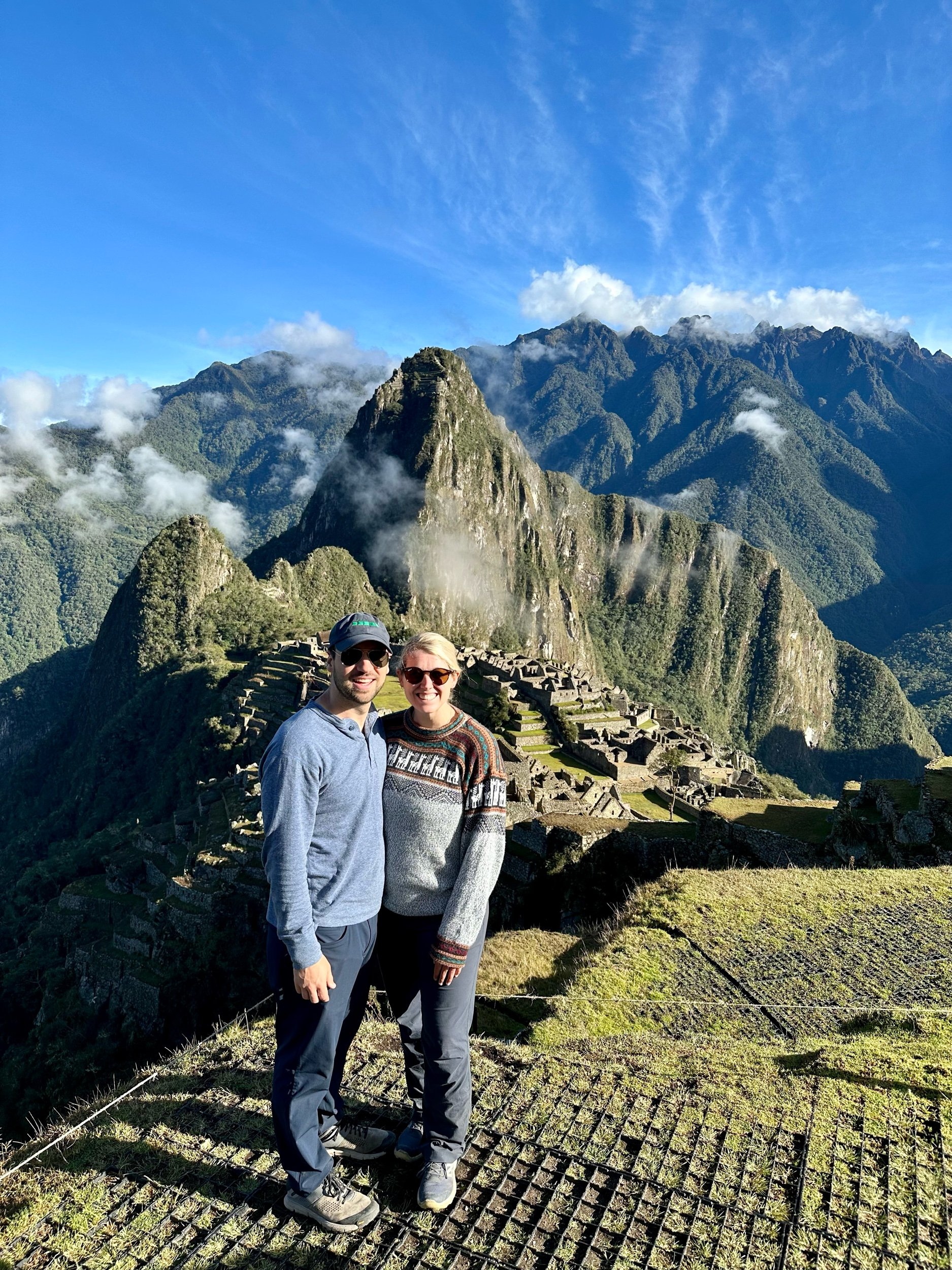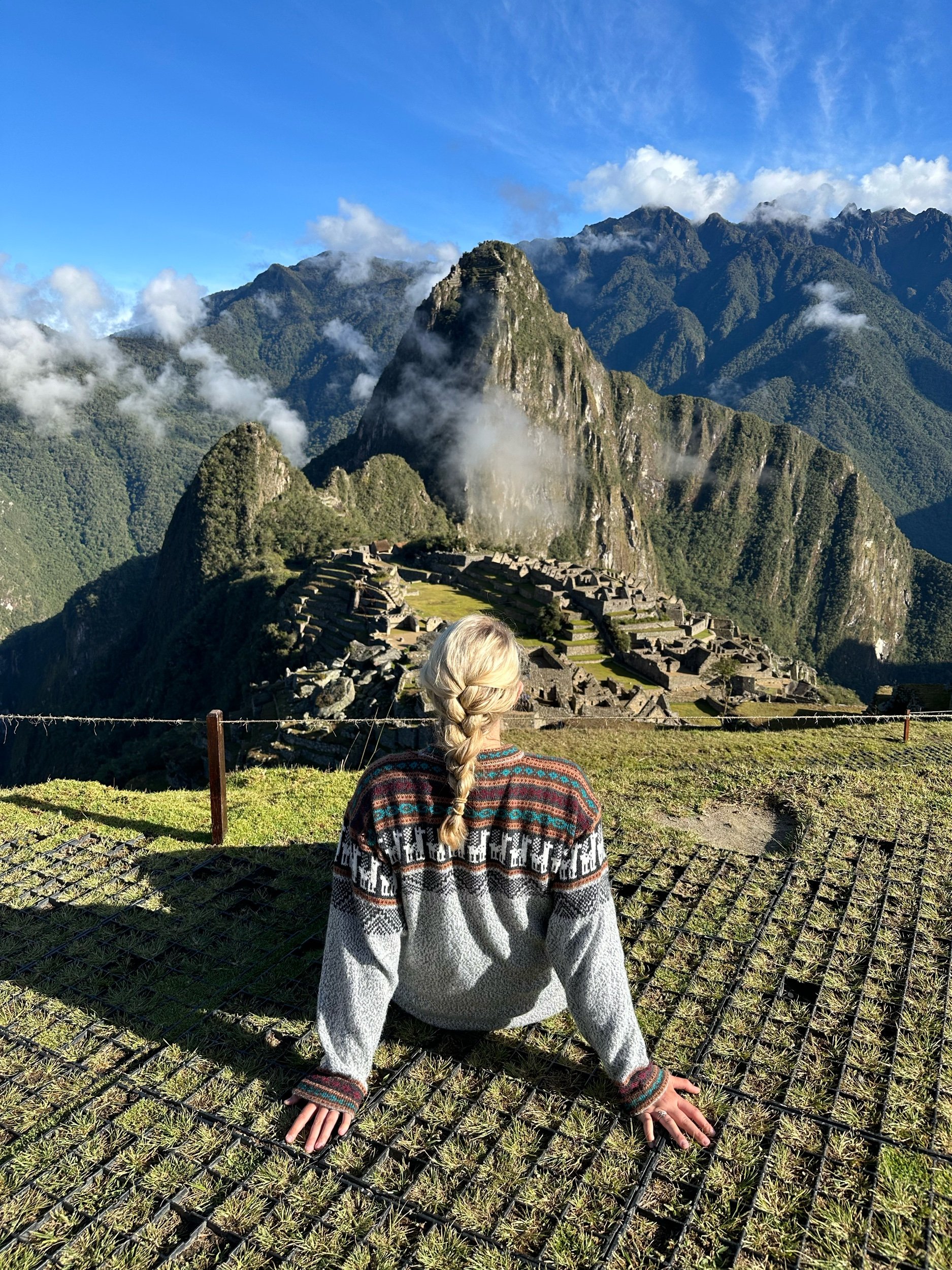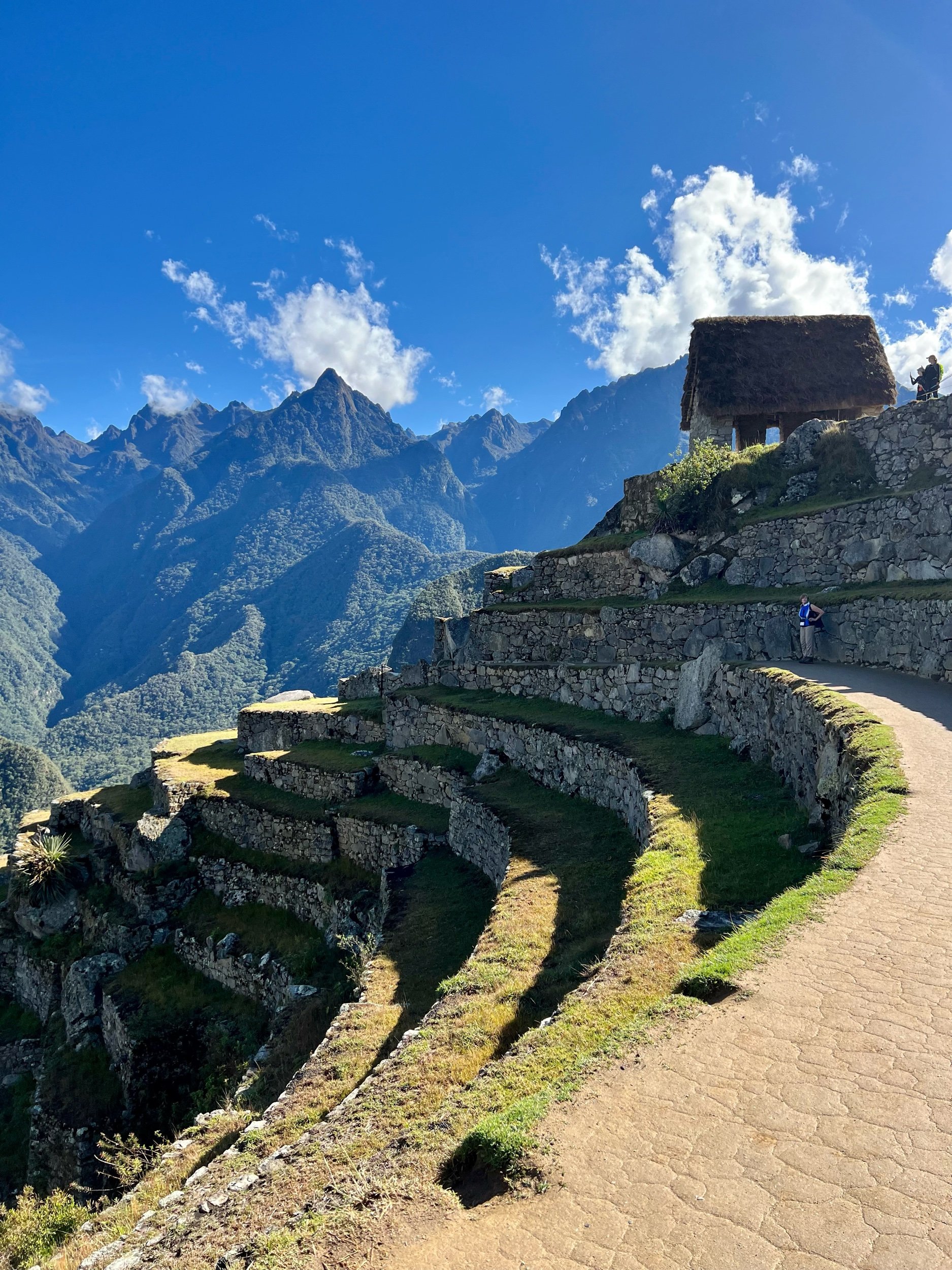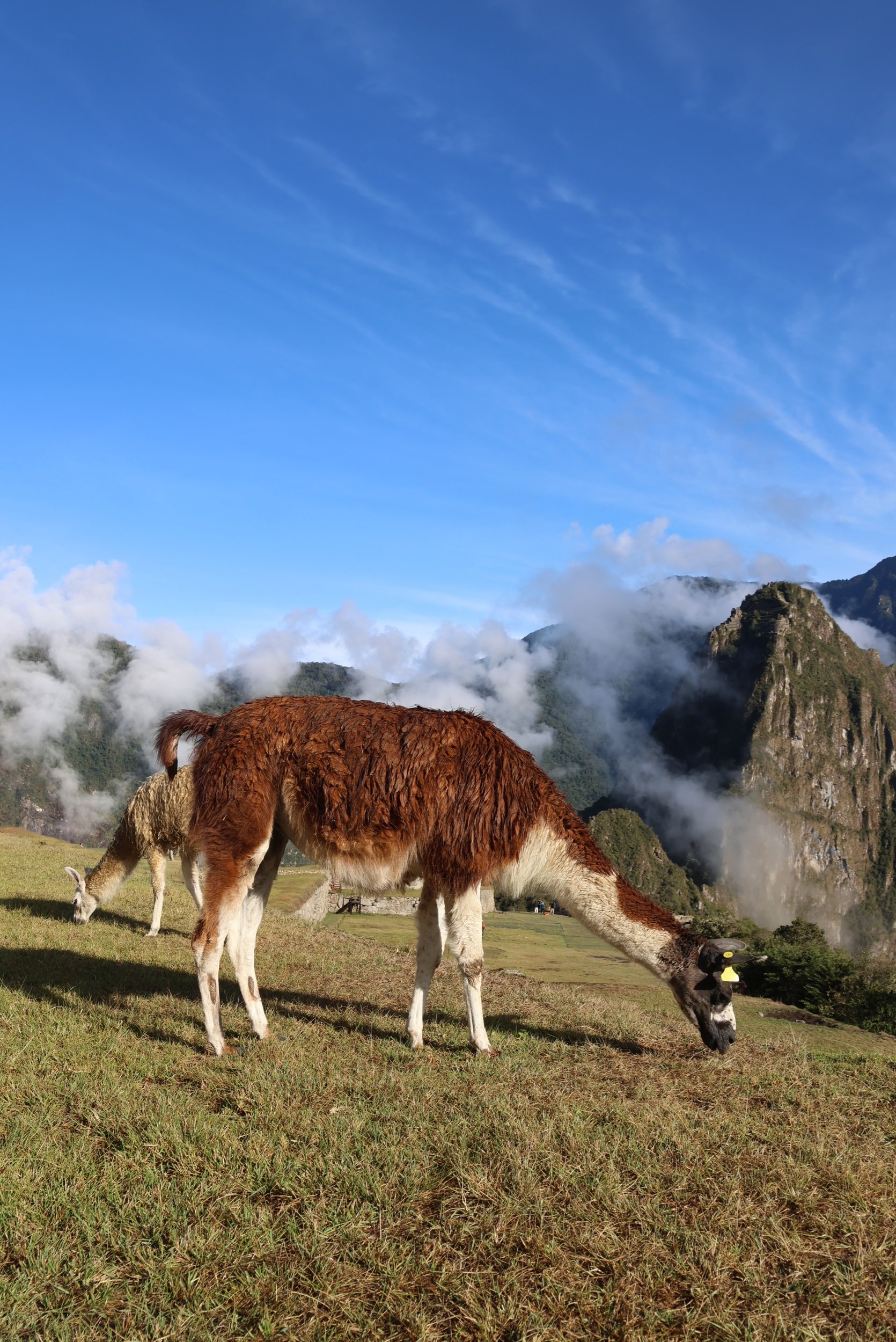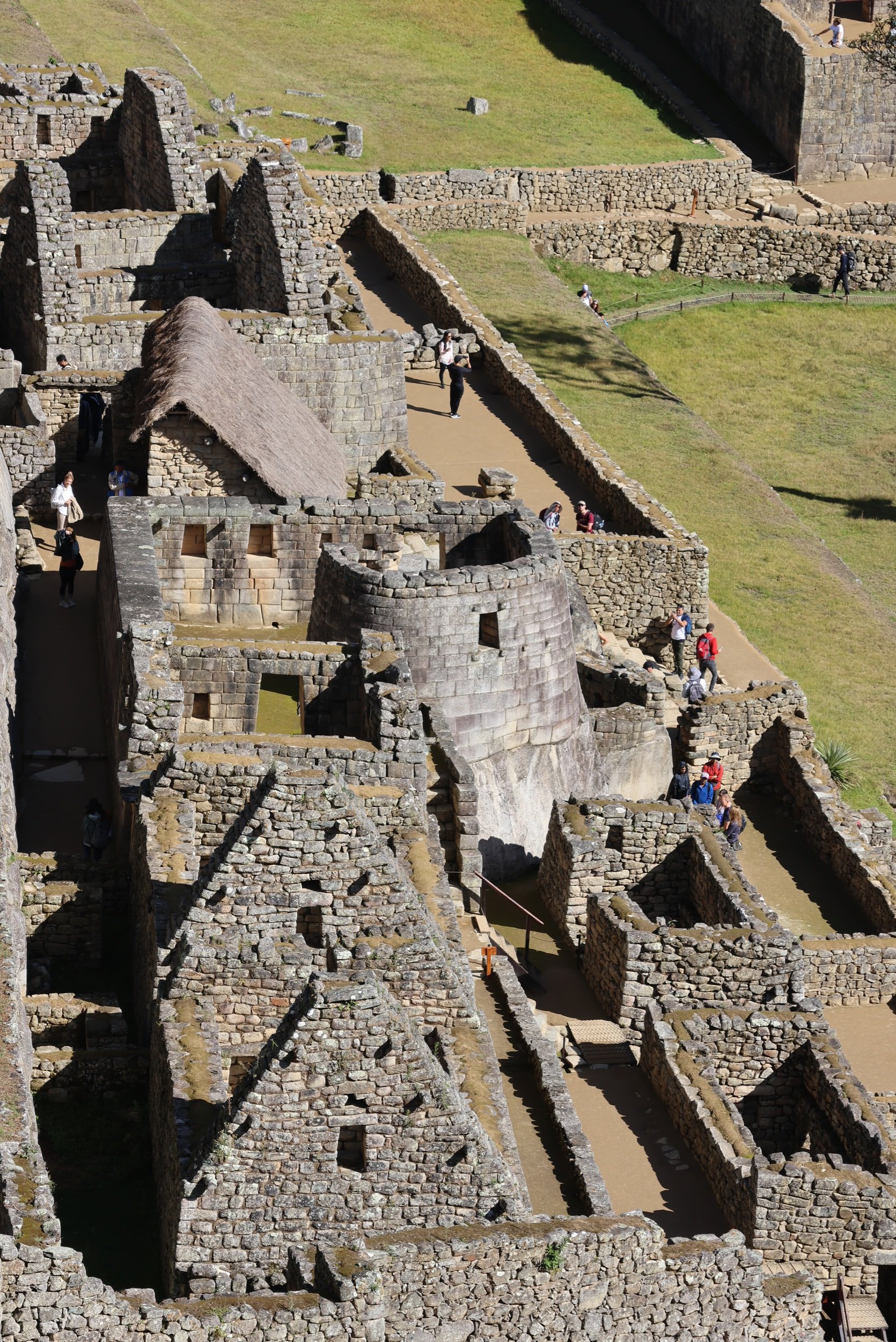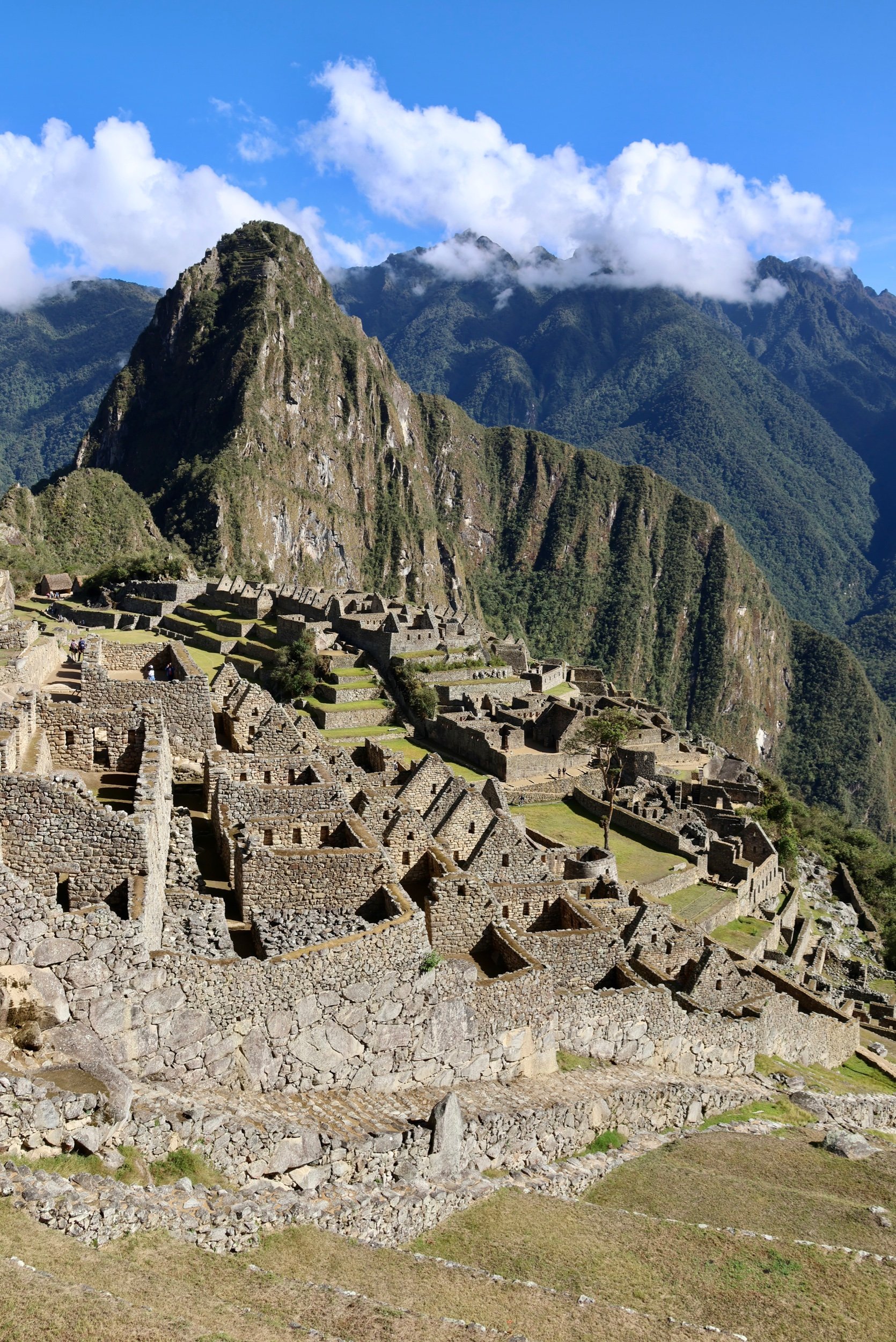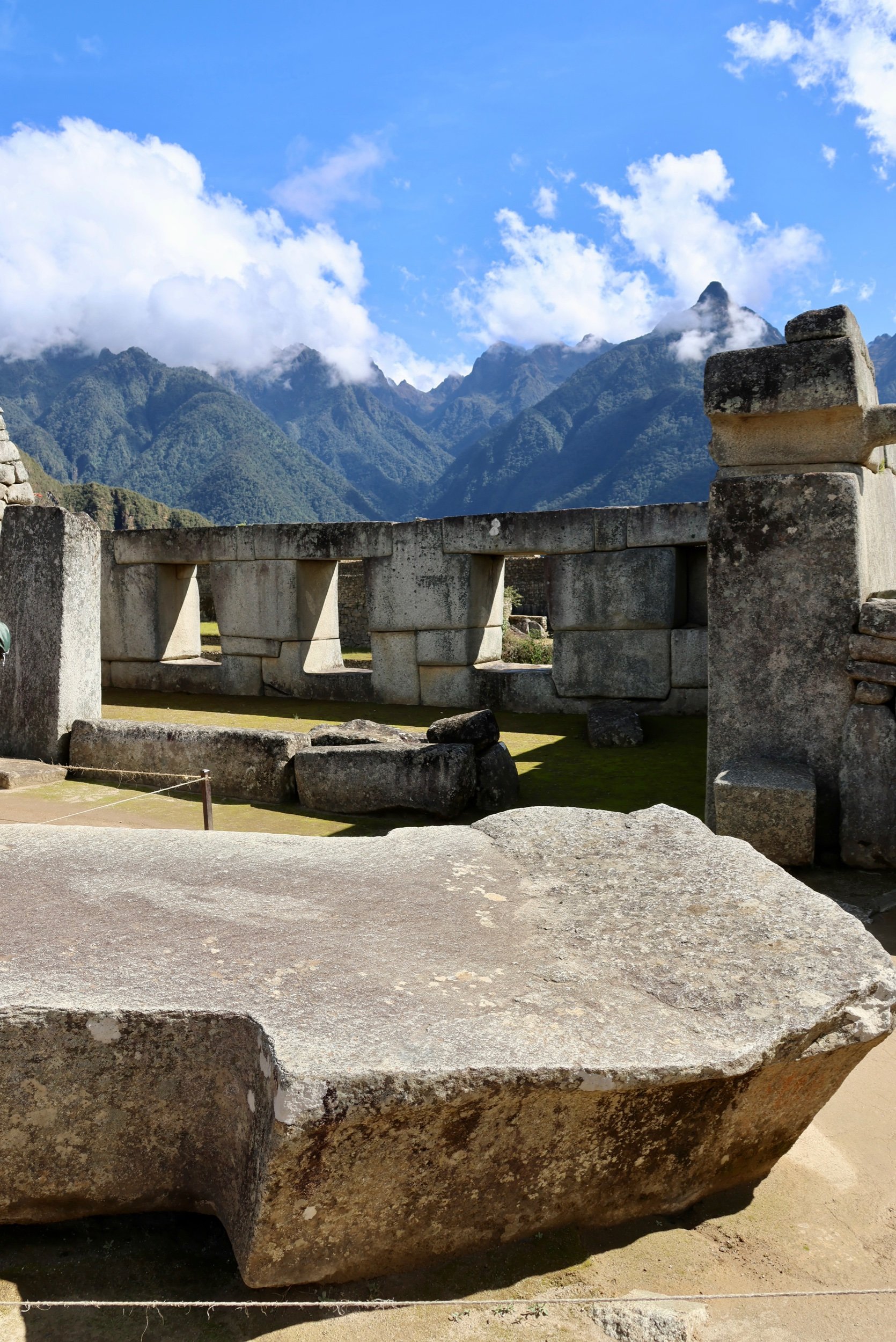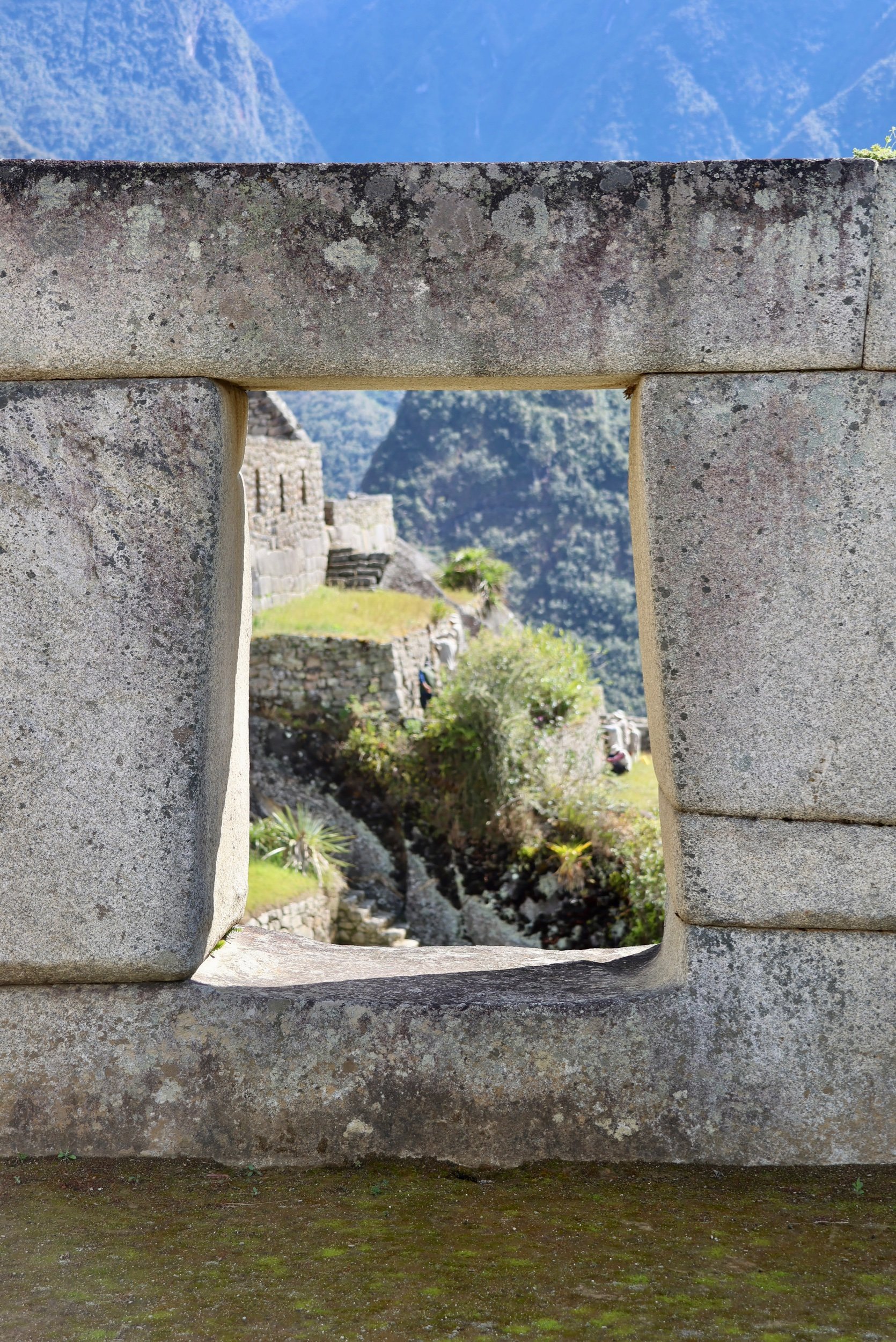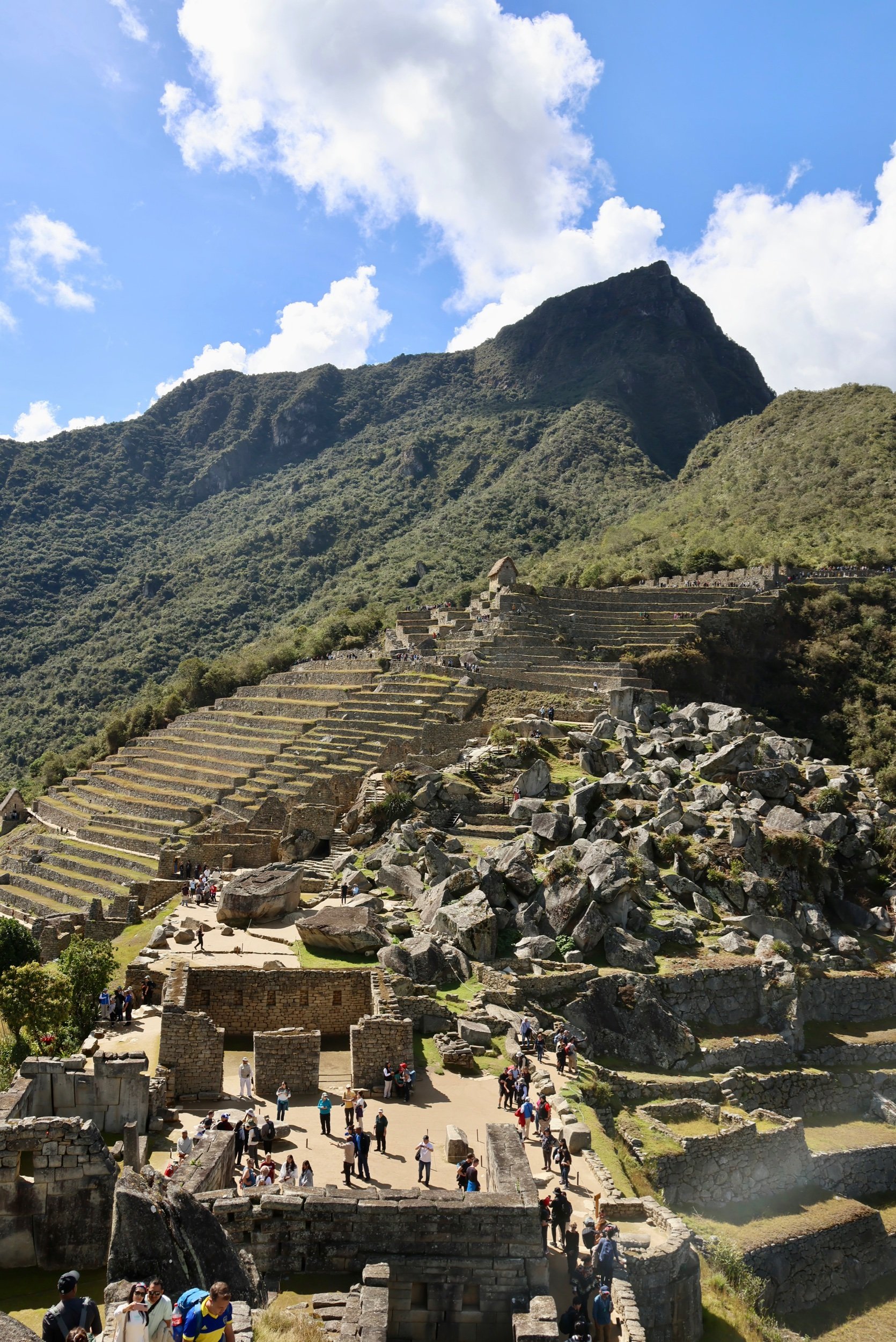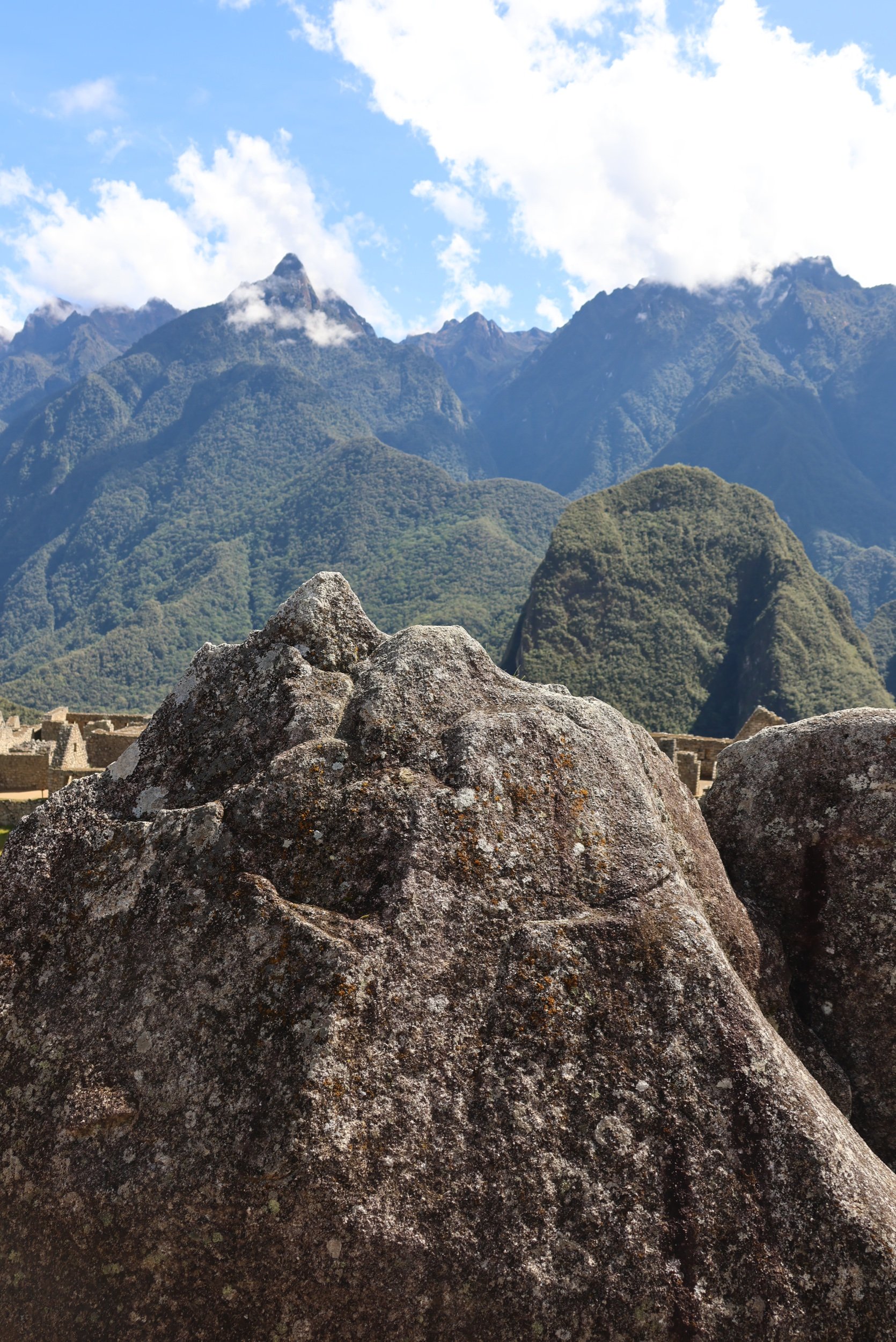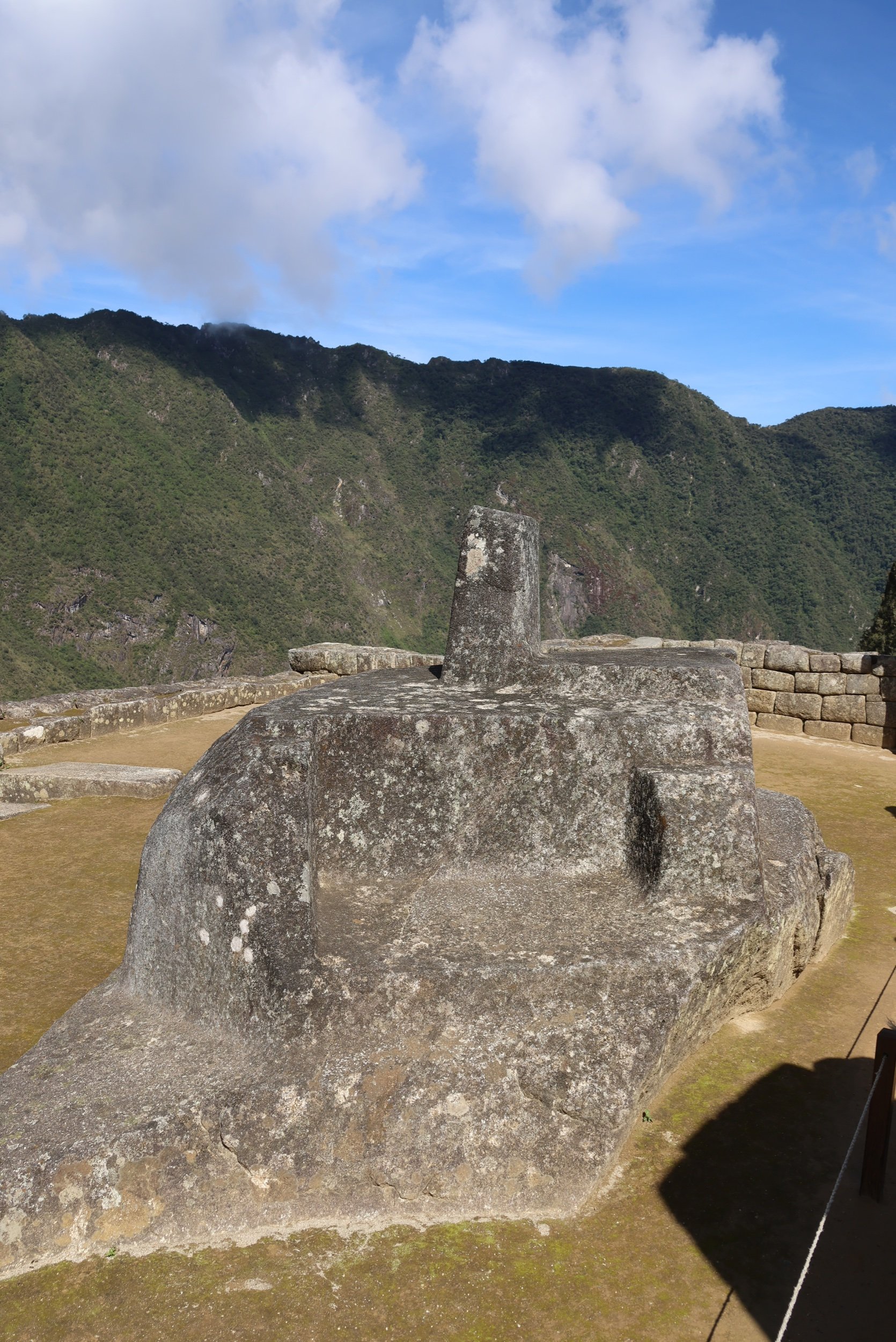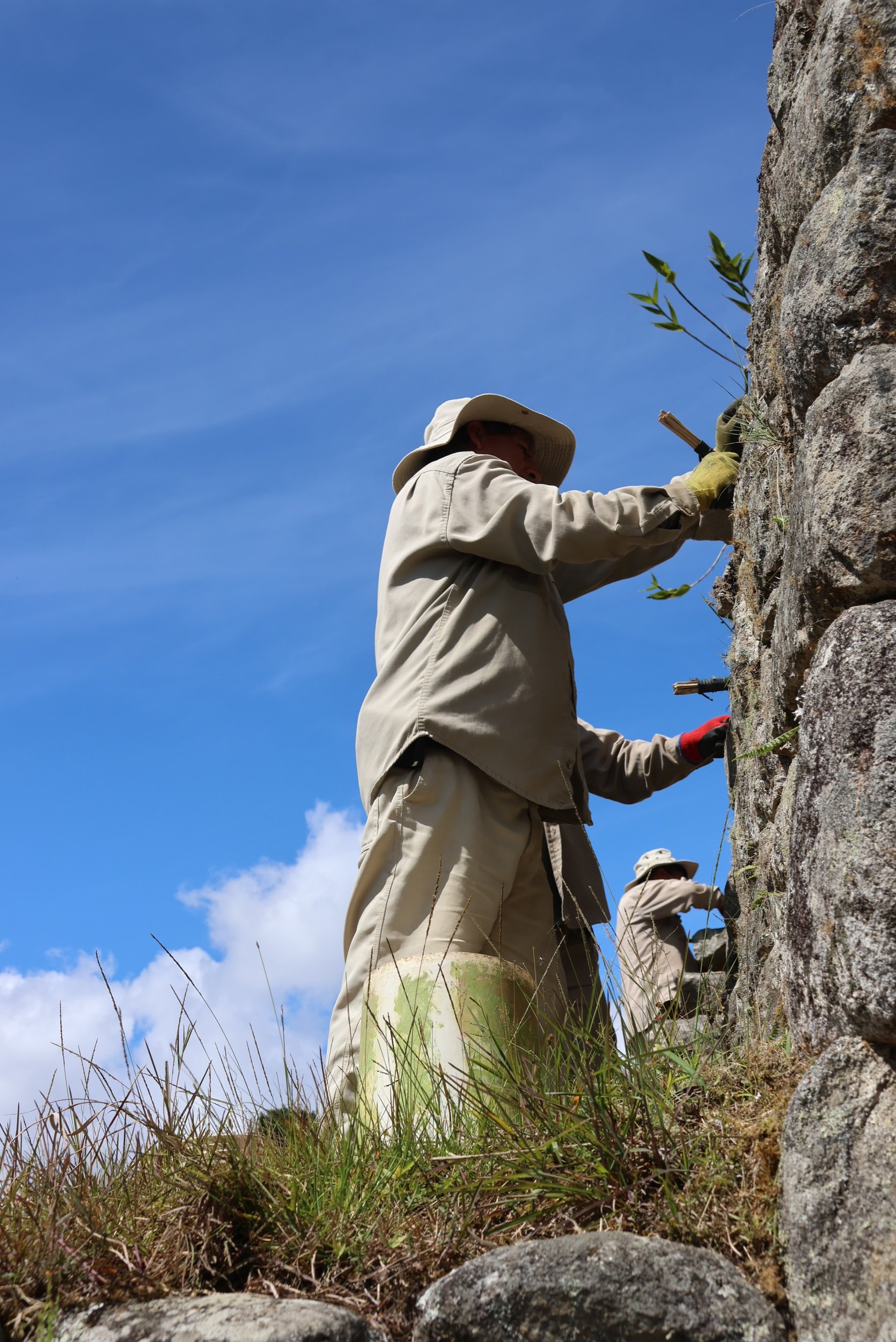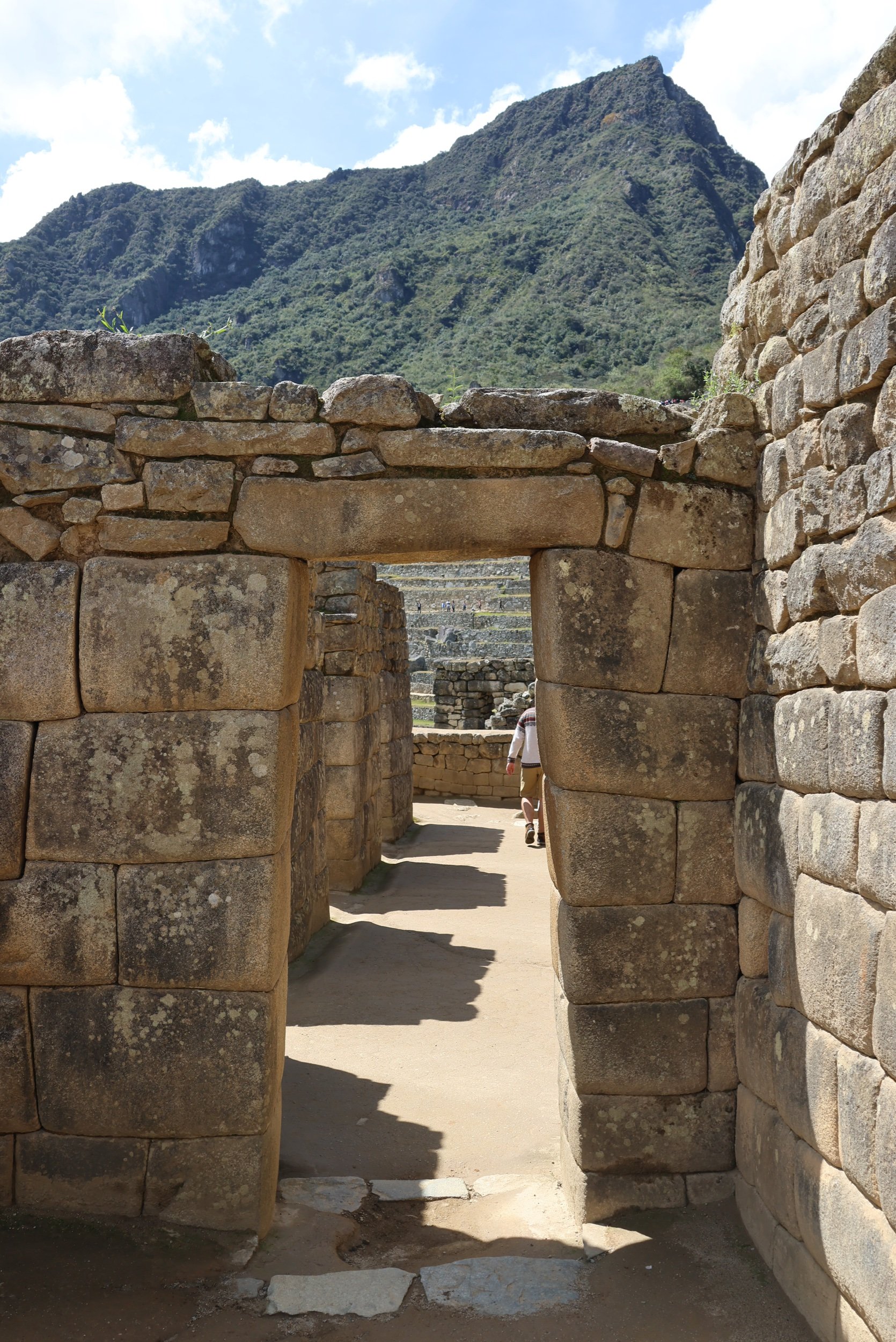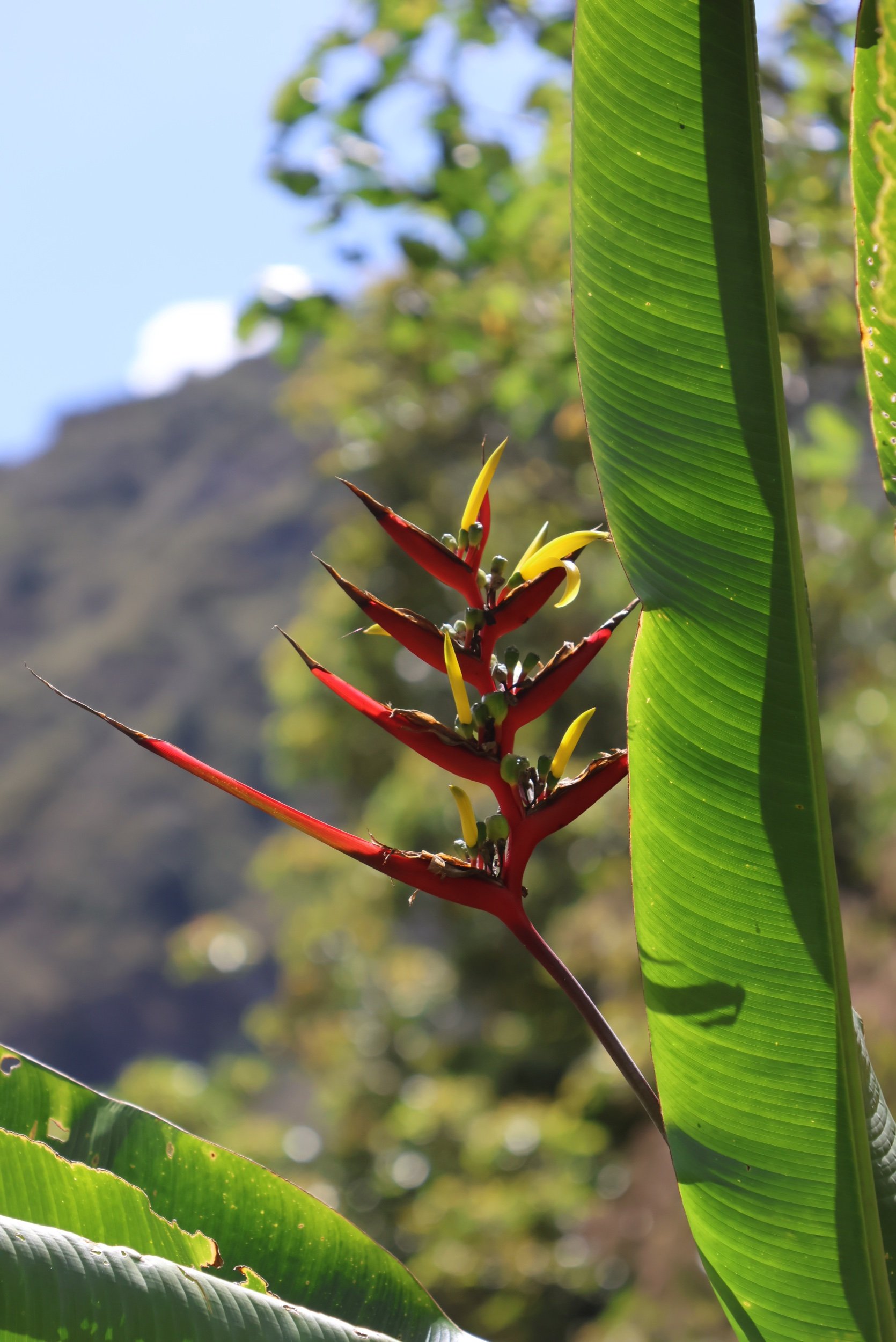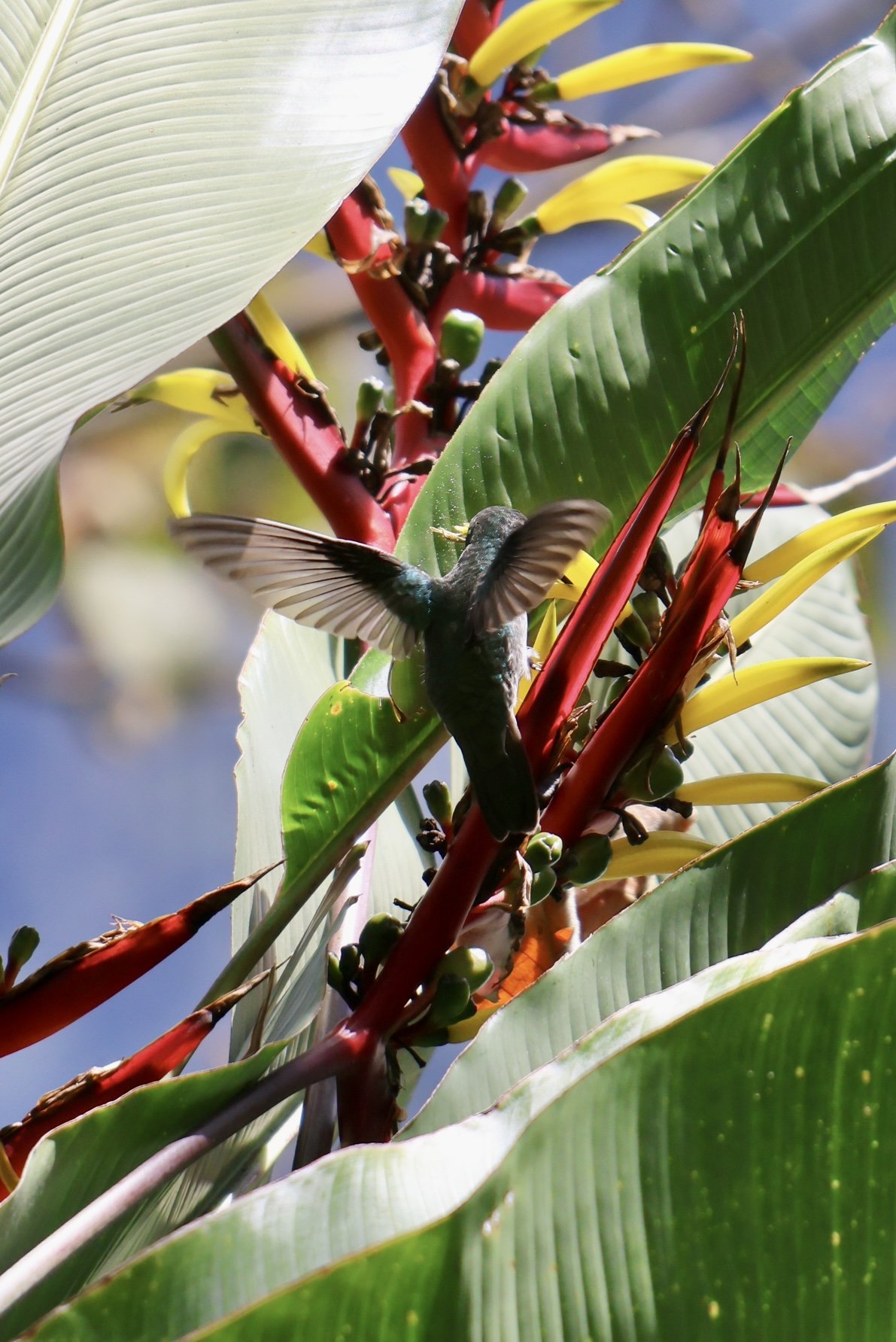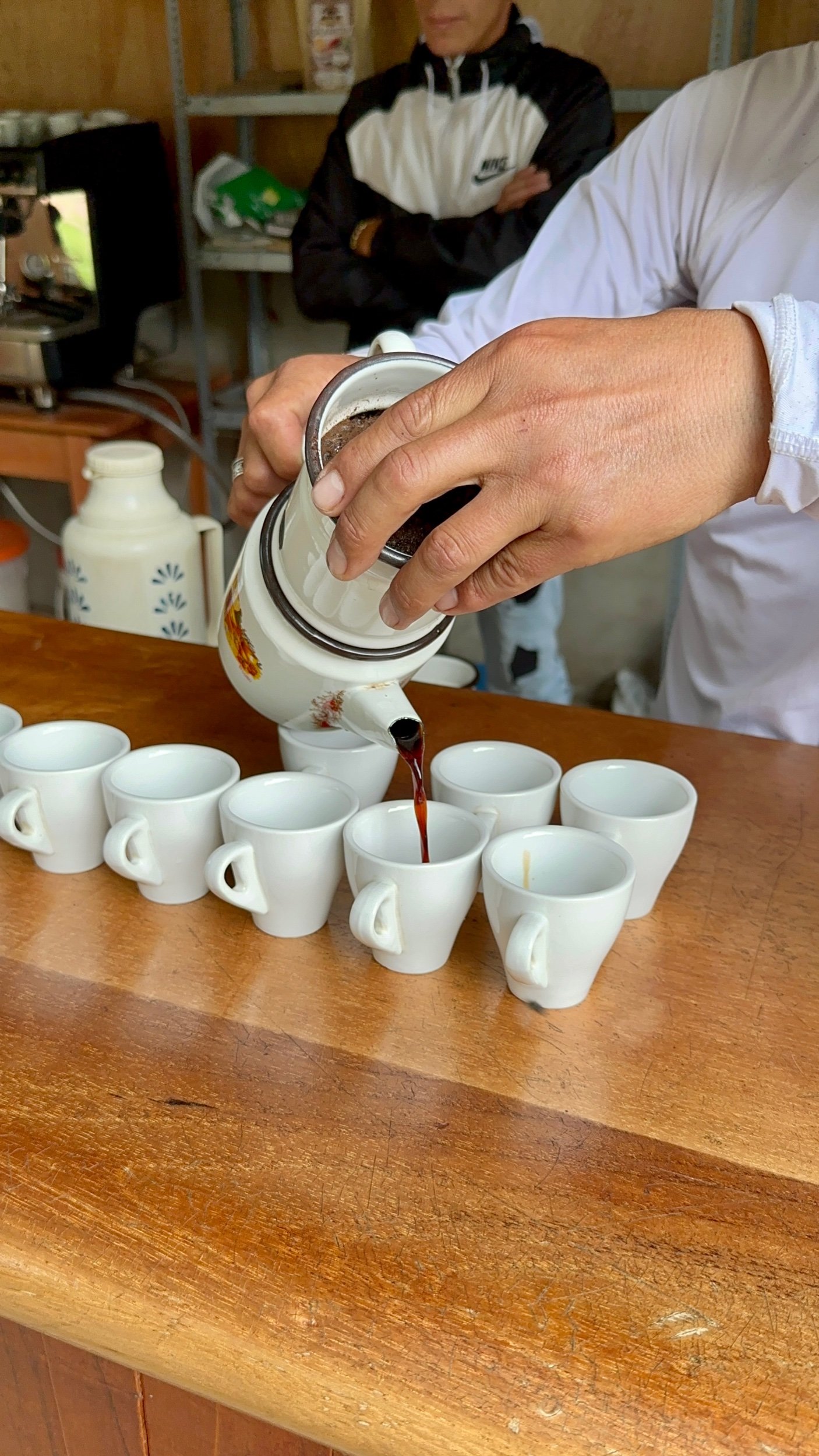Salkantay Trek to Machu Picchu
The Salkantay Trek is a 4 day hike to Machu Picchu. Many fit and active travelers choose this option to see some beautiful scenery and challenge themselves physically in the Andes Mountains. Somehow, we convinced ourselves that we were also fit and active (Narrator: they were not). The Salkantay trek covers 45 miles in 4 days, with 2 separate 16 mile days. We hiked up and over 2 mountains and threw in a nice afternoon walk to another mountain lake on one of our “easy” days. Even with all that though we can say that the Salkantay trek was one of the coolest and most rewarding experiences of our lives, and that’s without even getting to the wonder and awe of standing in the ruins of Machu Picchu.
Day one of the trek begins with a 4:15 am pickup in Cusco, so we were really starting out with our best foot forward. We joined the rest of our hiking group in a van and drove 3 hours to the start of our actual hike in a town called Challacancha. We walked for 2.5 hours along a canal towards the Humantay Mountain; the canal brings water from the glaciers on Humantay to the towns in the valleys below. We stopped for lunch at the Soraypampa Sky Camp. This is when we really learned about what our trek would be like. At the Sky Camp we stayed in igloo-looking domes made of glass so while in bed we could see the entire night sky. We had lunch before our afternoon hike. We met our chefs for the trip; Head Chef Angel and Assistant Chef Daniel. They provided incredible meals for us on our trek. Today we had Avocado Salad, Noodle Soup, Trout, Cauliflower Veggie Torte, and more. We had to stop ourselves from eating too much knowing we had a big hike ahead. For the afternoon we hiked up to the Humantay Lake. Soraypampa Sky Camp was at 3800m (12,476 ft) and the lake was another 300m (990 ft) up the mountain. The walk up was pretty steep and we passed over 100 horses grazing along the sides of the mountains. It was a very pretty emerald lake with glaciers, waterfalls and peaks in the background and we got some sunshine to light up the lake! We (barely) made it back for tea time where we warmed up with some hot tea and popcorn! Dinner was fantastic and for dessert they made Banana’s Foster with Pisco for the alcohol. The camp has electricity from 5-8pm and then it shuts off to be able to see the stars. We had partly cloudy skies and could see Jupiter, Saturn, and a few other stars! We didn’t make it much later than 8pm due to the long day. We were given sleeping bags, liners, and a warm water bottle since this would be our coldest night but we slept quite easily.
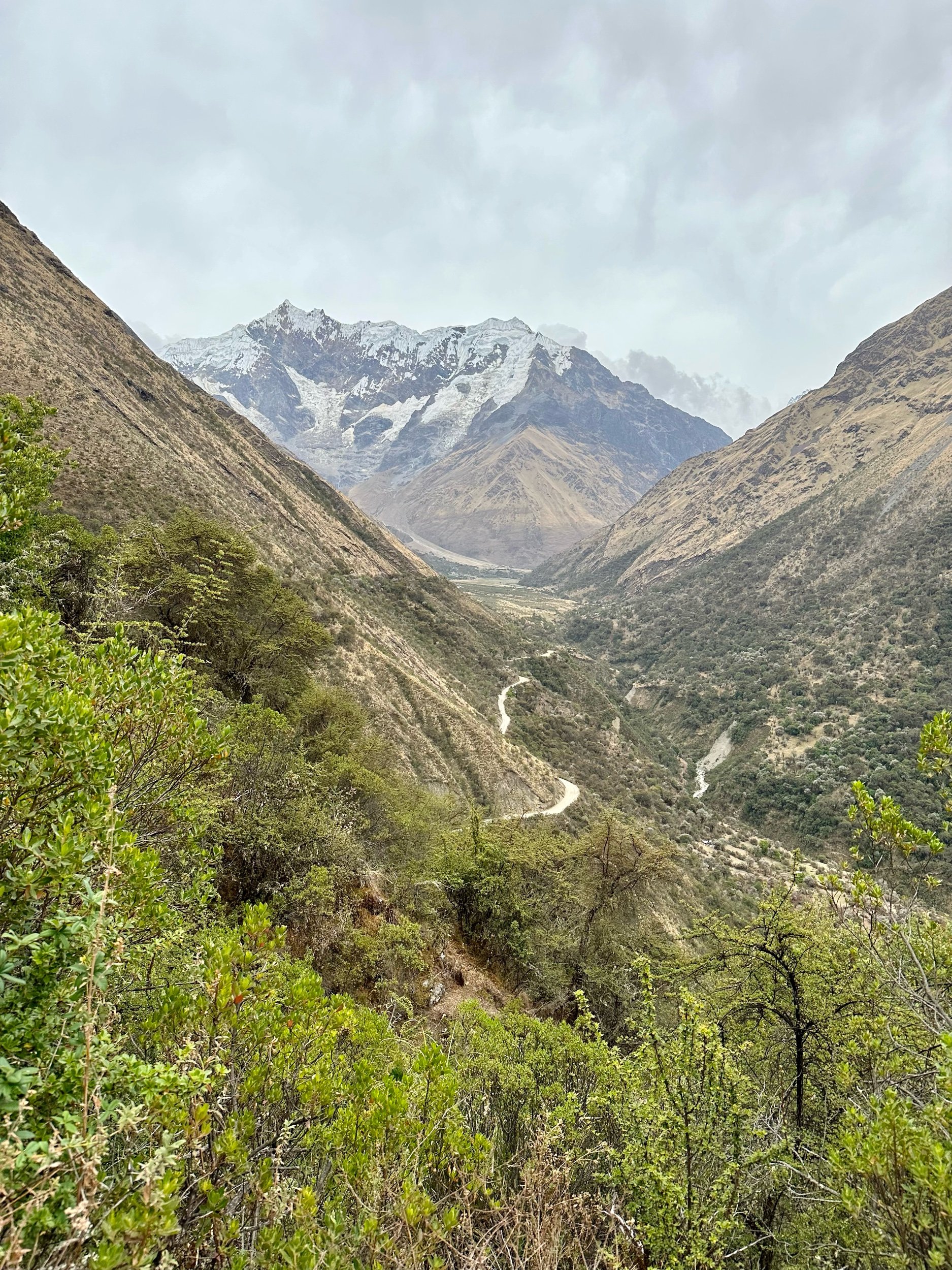
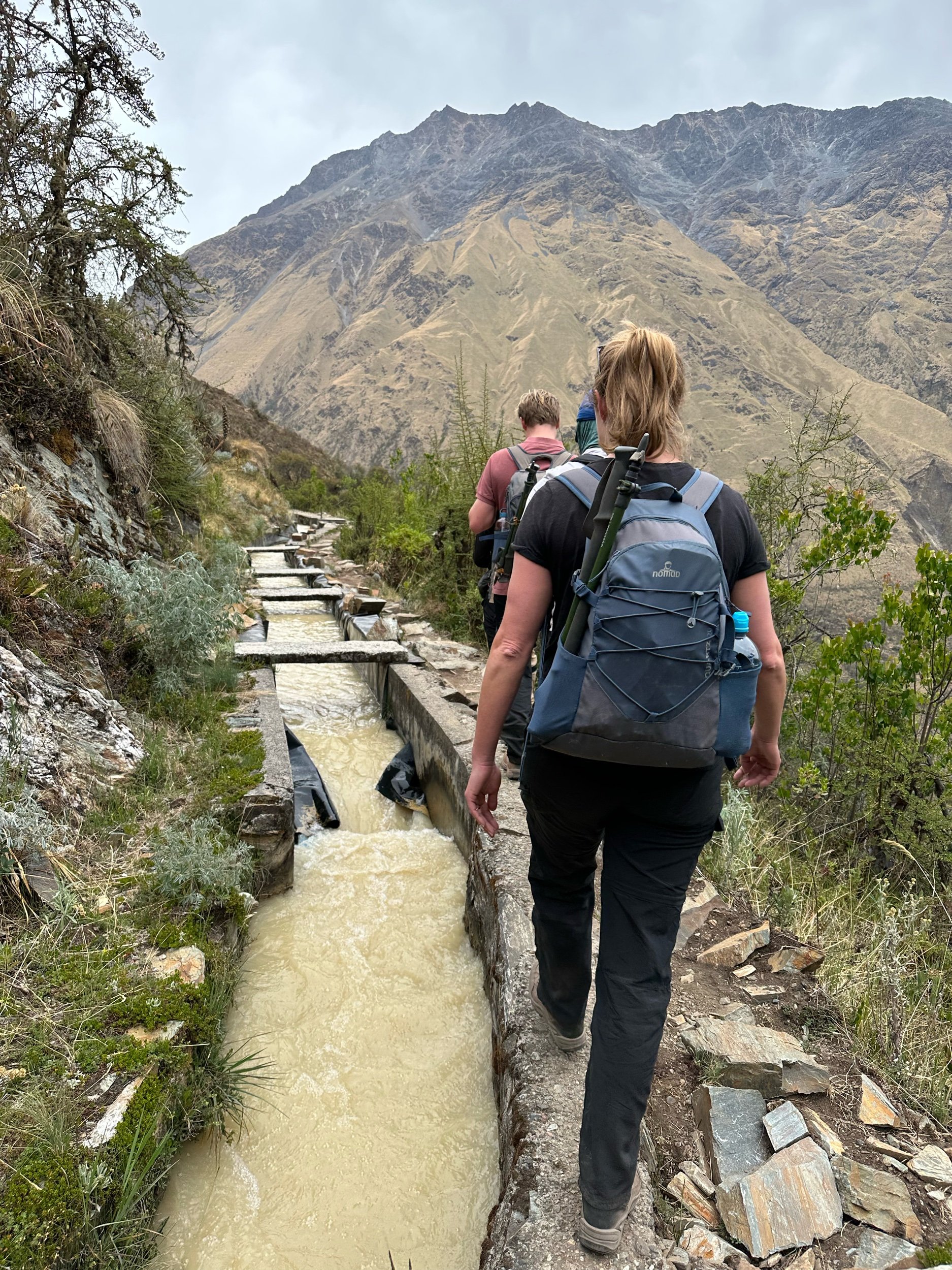


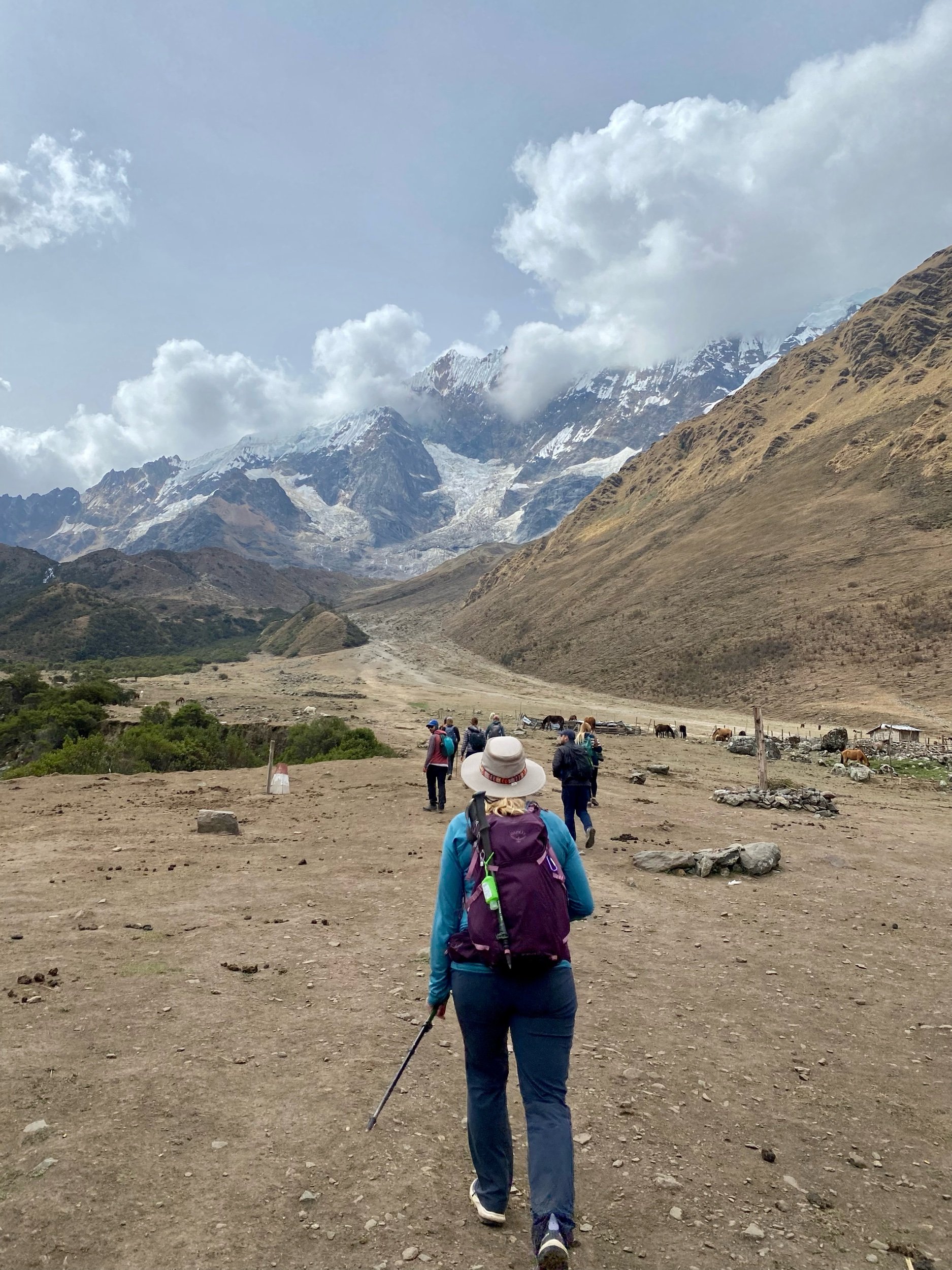

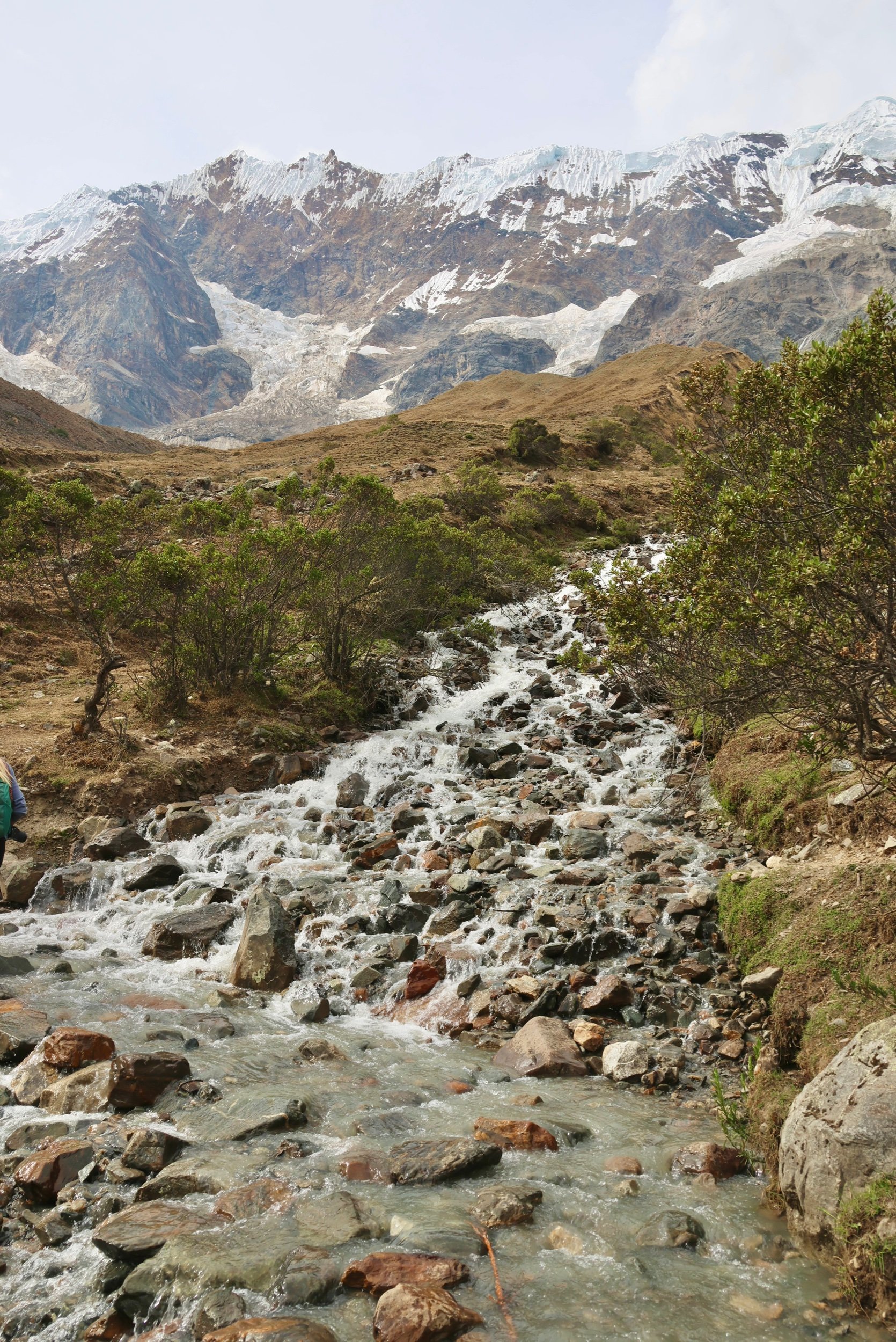




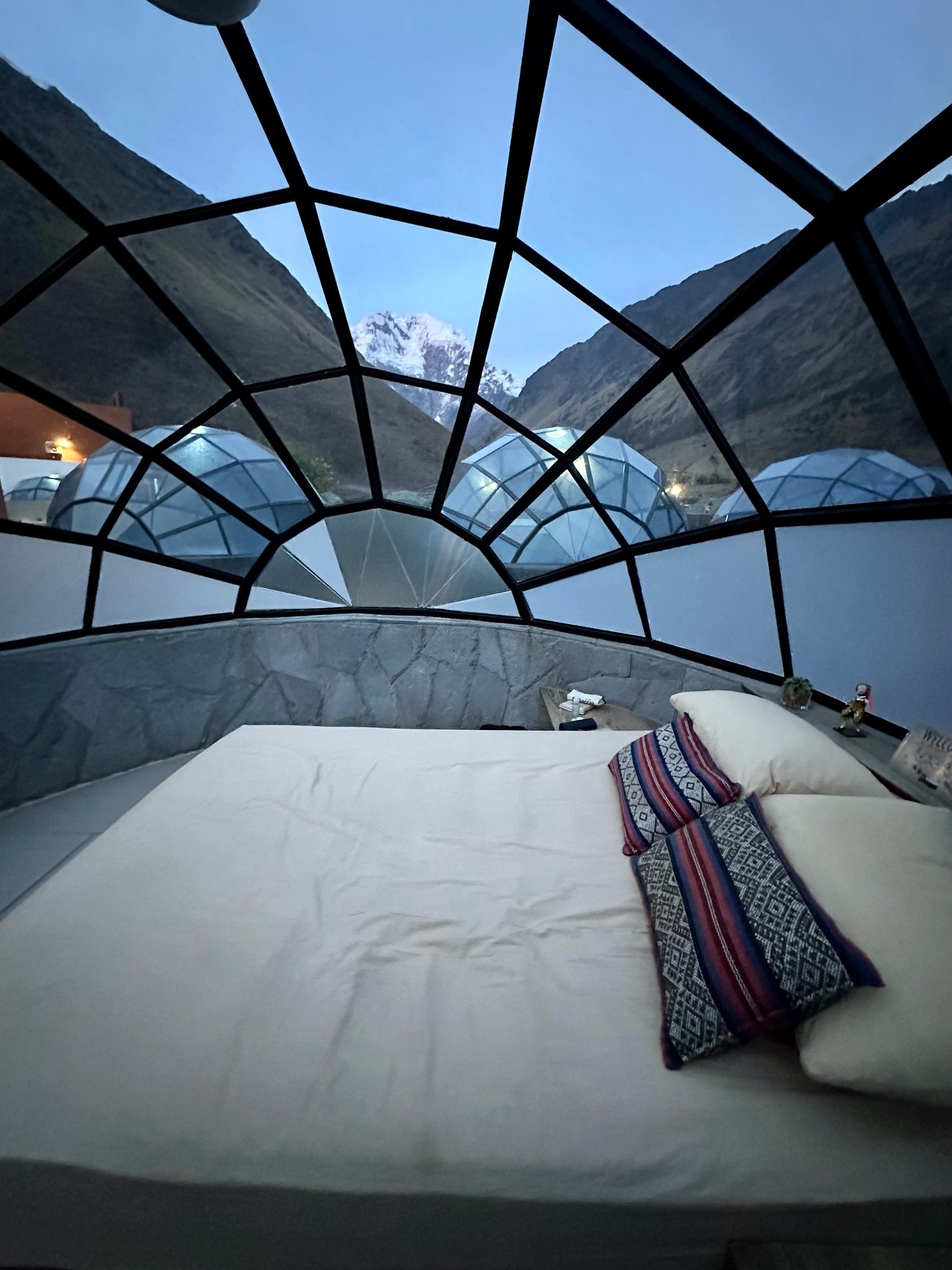
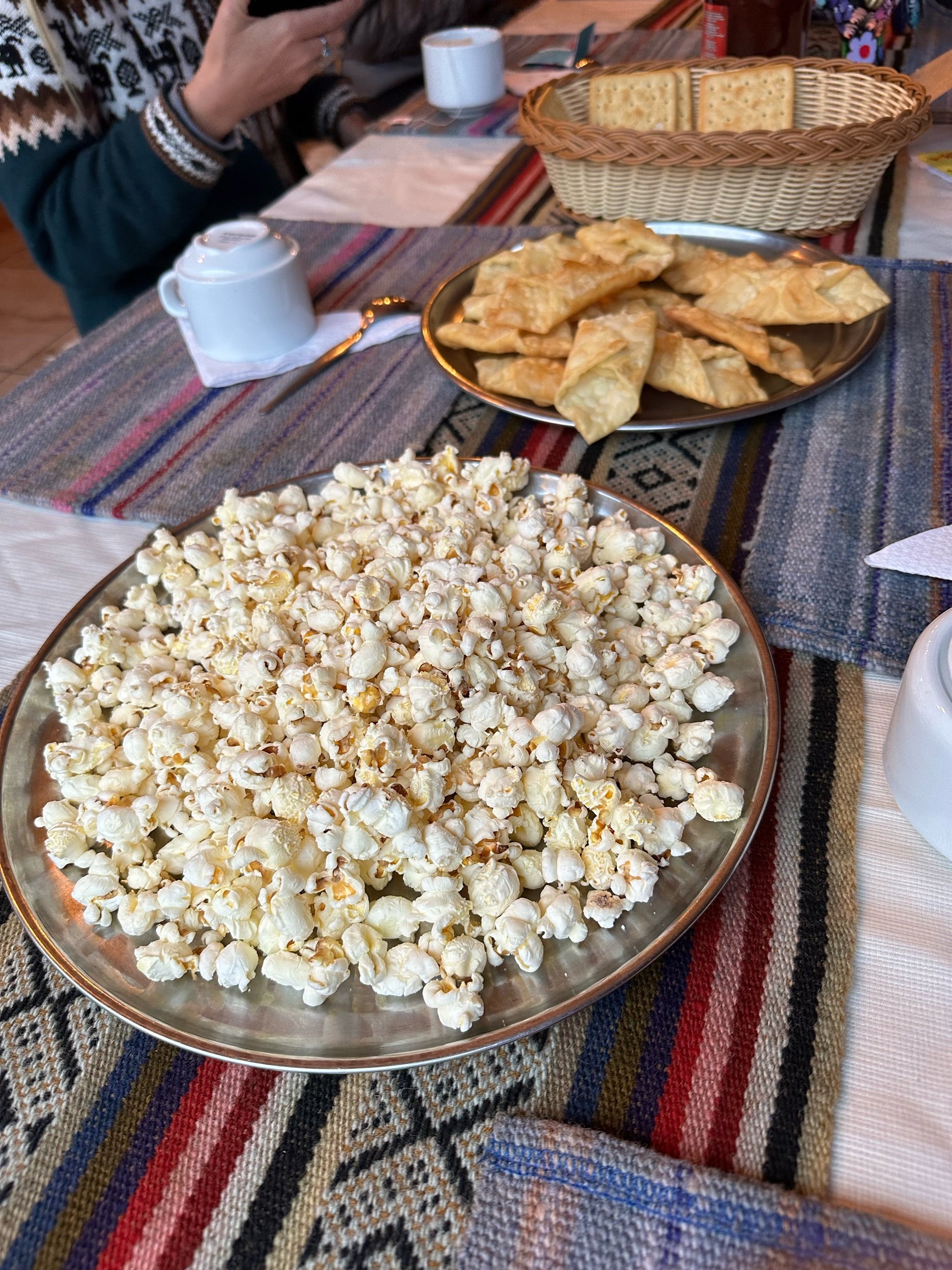
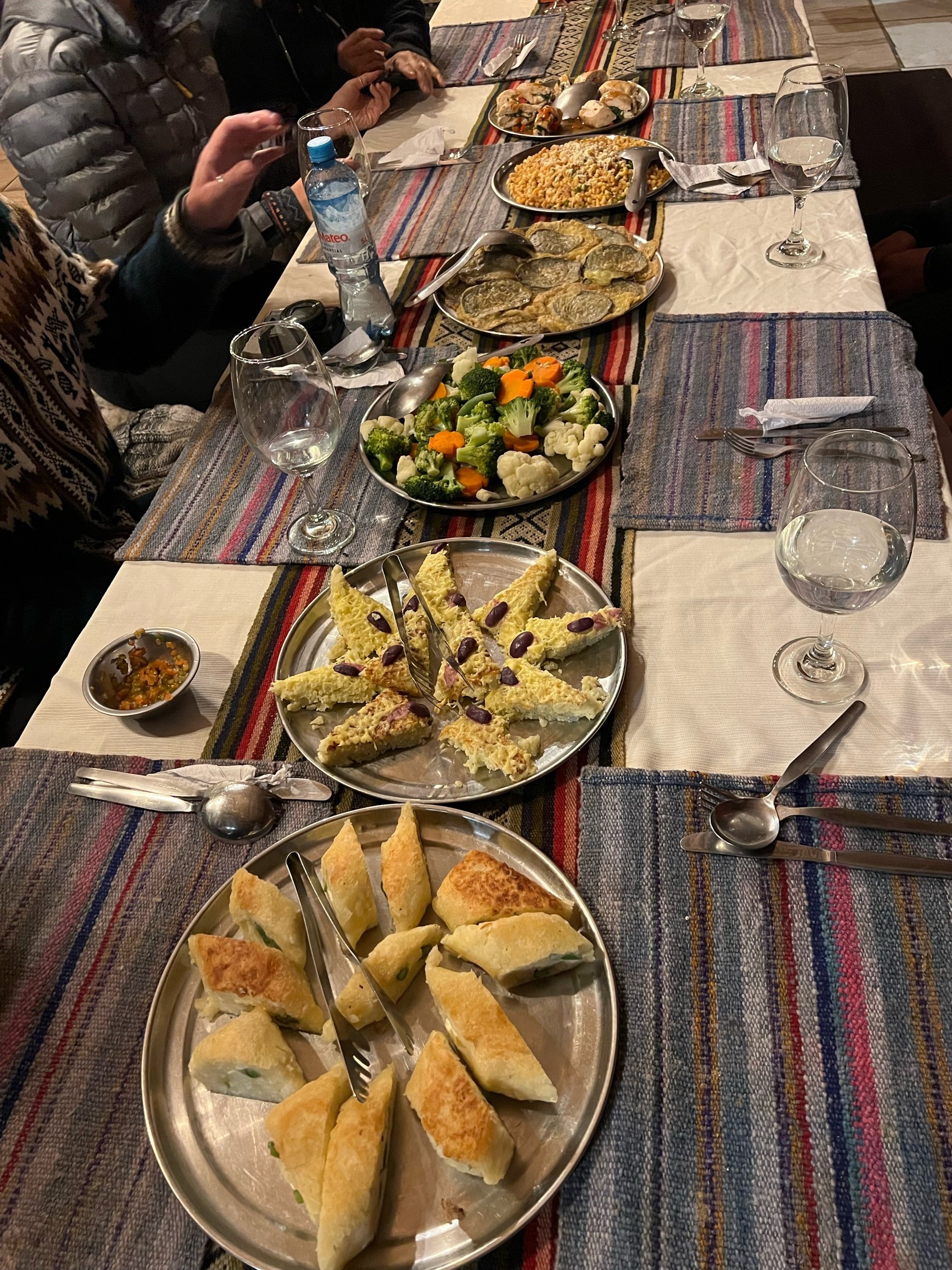
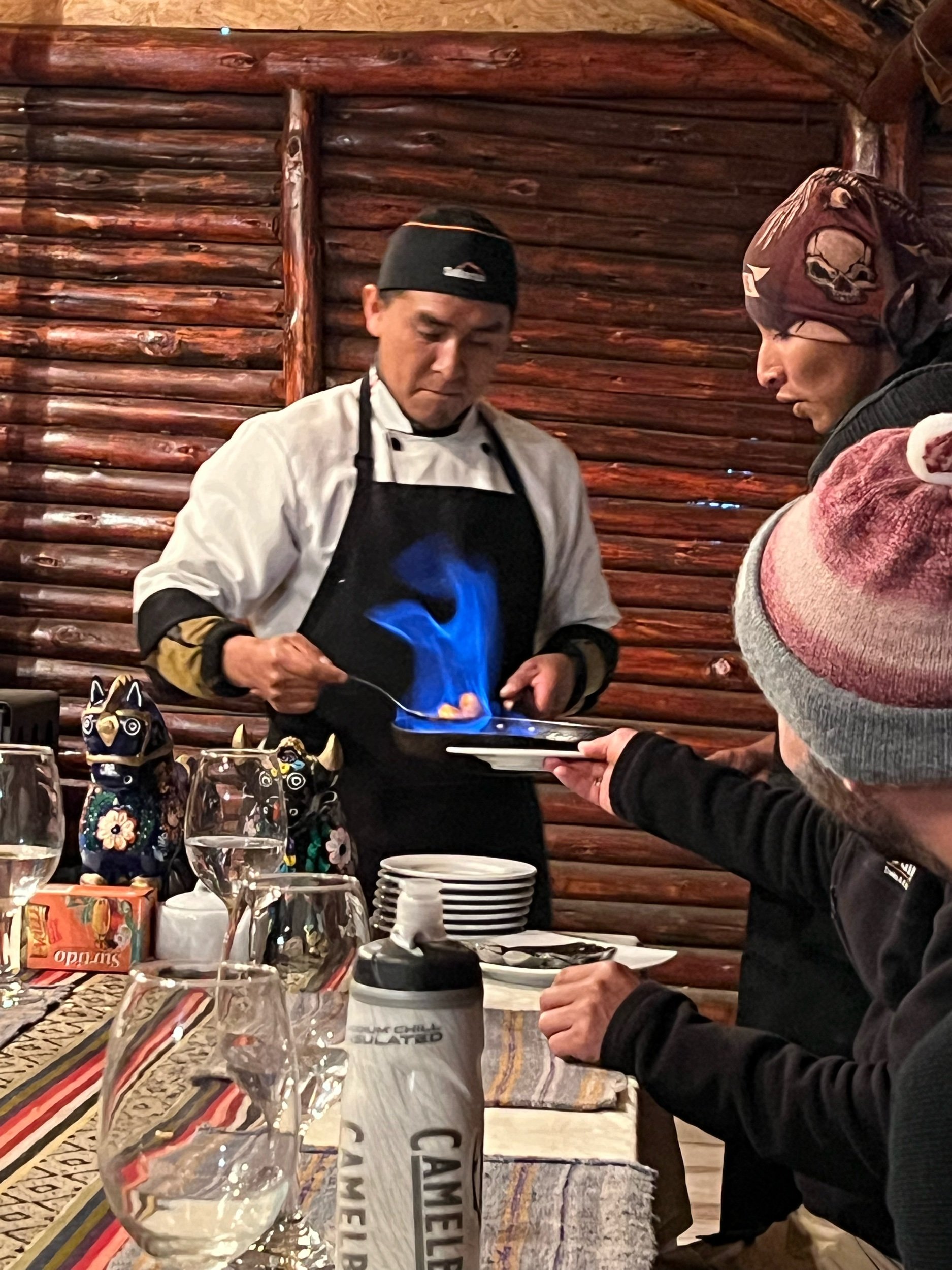
We started day 2 with another early morning at 4:50am but at least our guide, Erik (who was fantastic!!), brought coca tea to our door to wake us up. We had pancakes, eggs, and fruit for breakfast. Our hike today was up and over the Salktantay Pass. We had to do 800m (2740 ft) of elevation rise in just 7km (4.4 miles) of distance to get to the top of the pass, and then walk the remaining 18km (11.25 miles) slowly down the mountain to our lodge that night. The Salkantay Pass itself is over 15,000ft above sea level, so we were in for quite a day. The walk up was pretty intense in terms of steepness and the clouds rolled in once we were near the top so we couldn’t see much beyond the valley we were walking in. There were a ton of donkeys and horses on this trail that the mountain communities use to carry supplies from the larger towns. Also that’s how our bags and food were transported to our next stop! Roads? Where we’re going we don’t need roads! As we neared the top of the pass, our Chefs passed us while carrying up a large thermos to provide coca tea for our group once we made it to the top (just to give you an idea of how skilled our guides were). The coca tea was wonderful when we reached the top of the pass! Our guide also showed us how to build a stone tower with coca leaves as thanks to Pachamama (Mother Earth) and to ask for good favor. It was very cold up top so we took a shot of some liquor and began our descent quickly. The descent was steep and through rocky, foggy, Mars-type terrain. We were following a large landslide that occurred in 2019 and killed many people in a town we were headed towards. There were tons of huge boulders along the river and there was no soil, it was all gravel and rocks. It started to rain right as we stopped for lunch. Our guides had not only made breakfast, cleaned up, run up the mountain with coca tea, but also beat us to lunch and cooked a fantastic meal in the middle of the valley! We continued down the canyon/valley and finally started leaving the clouds behind. There were still incredible glaciers and waterfalls along the peaks while we started to descend into more forested areas and soon enough we were walking in a jungle.



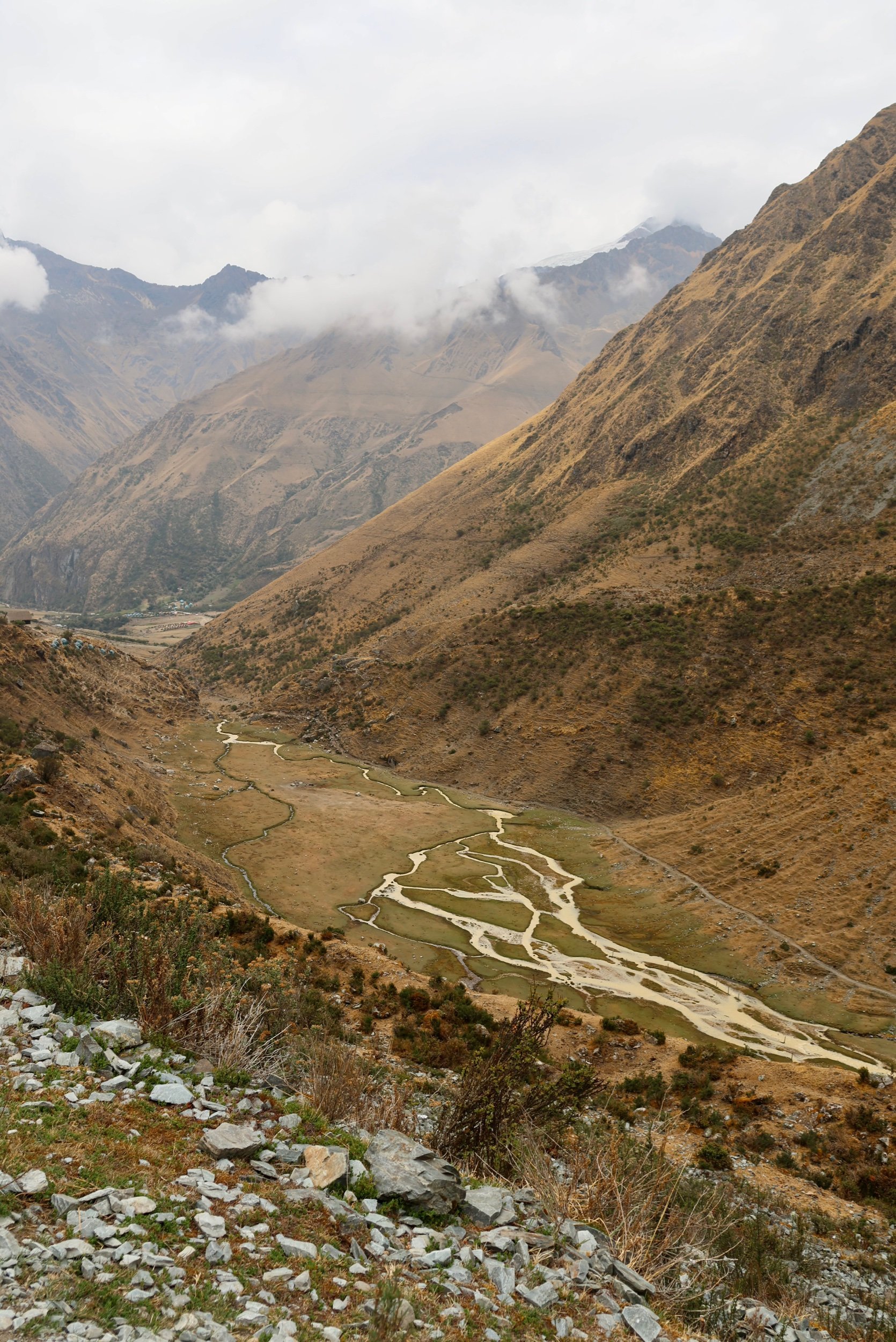
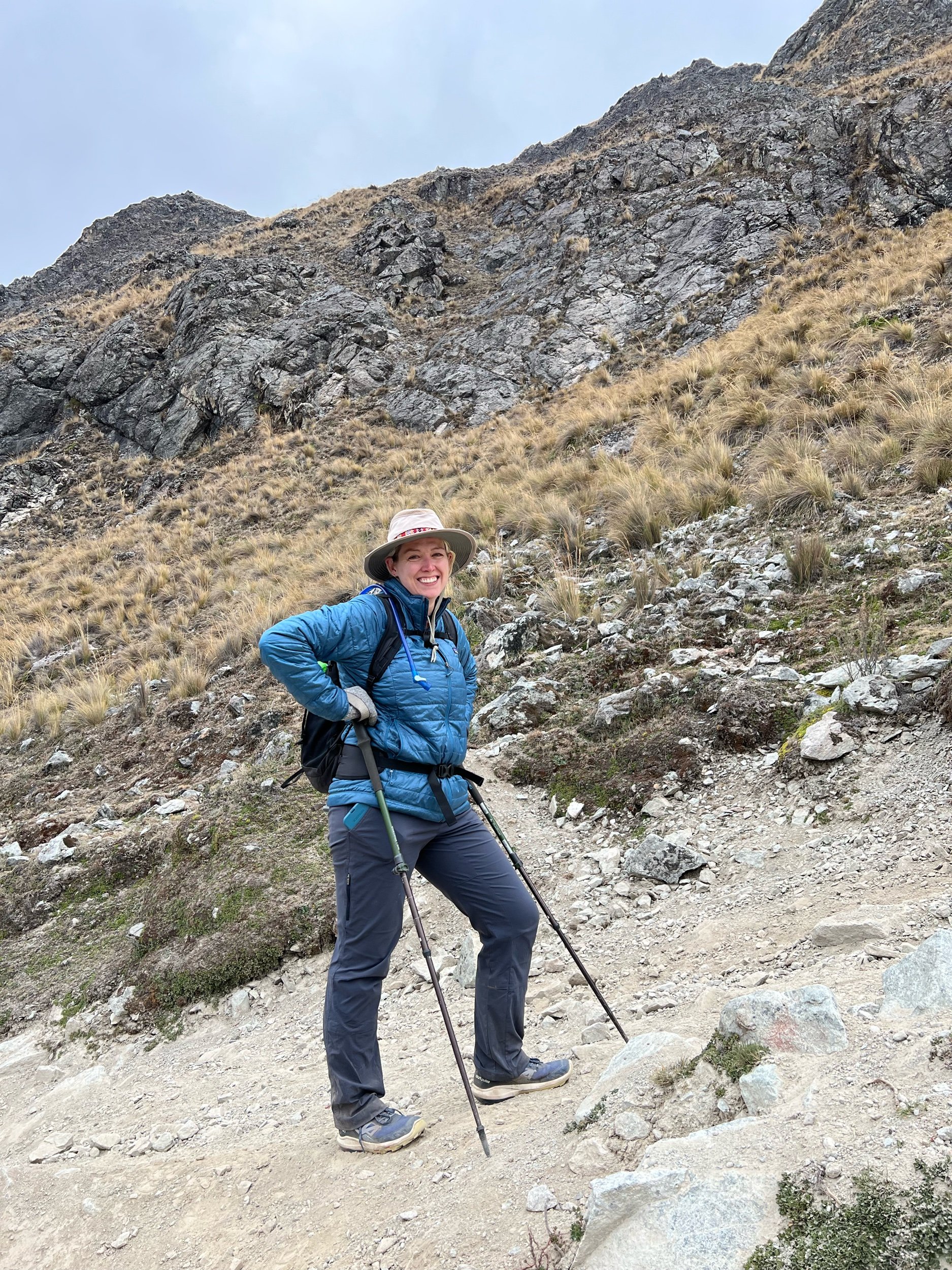

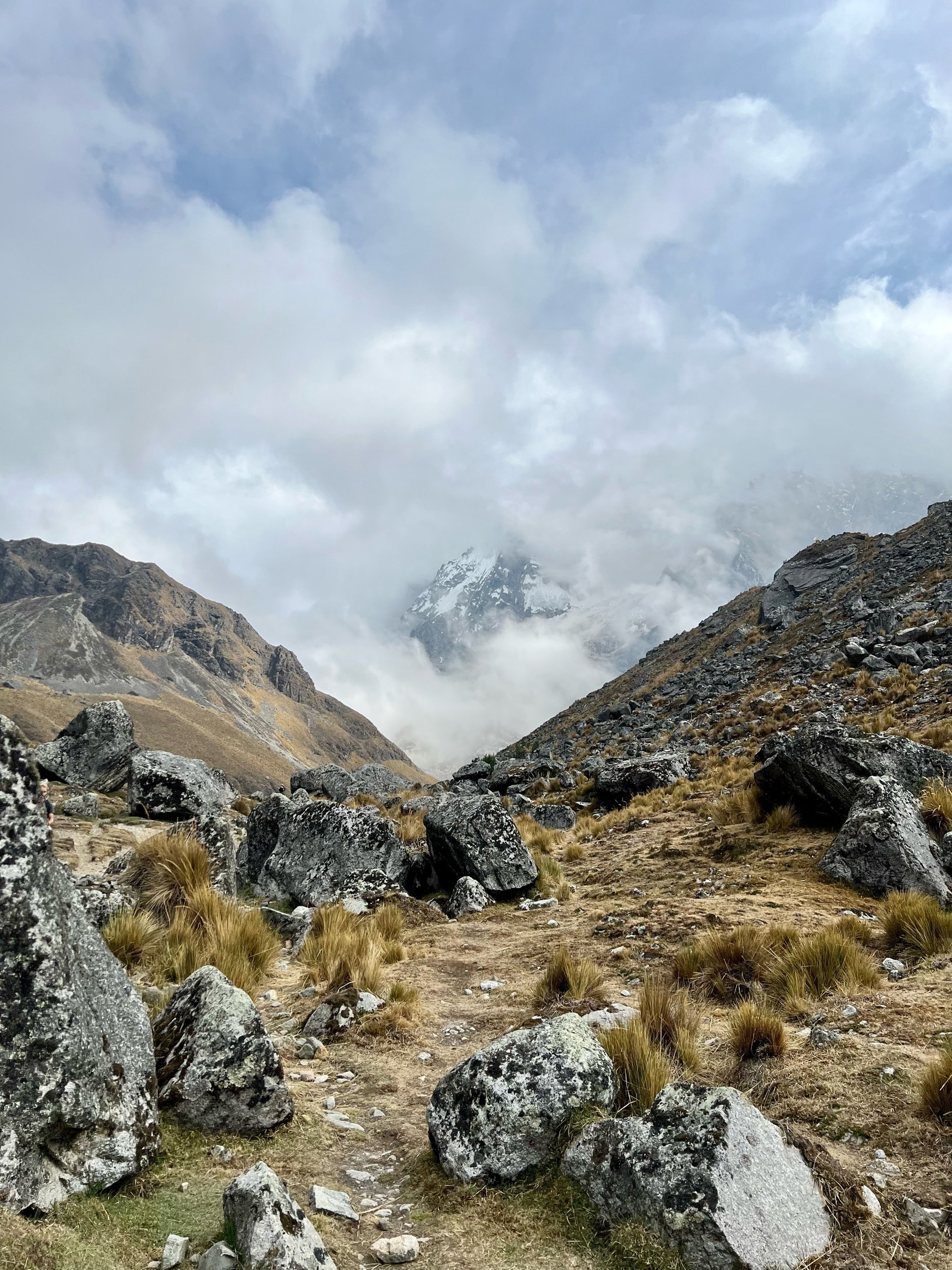
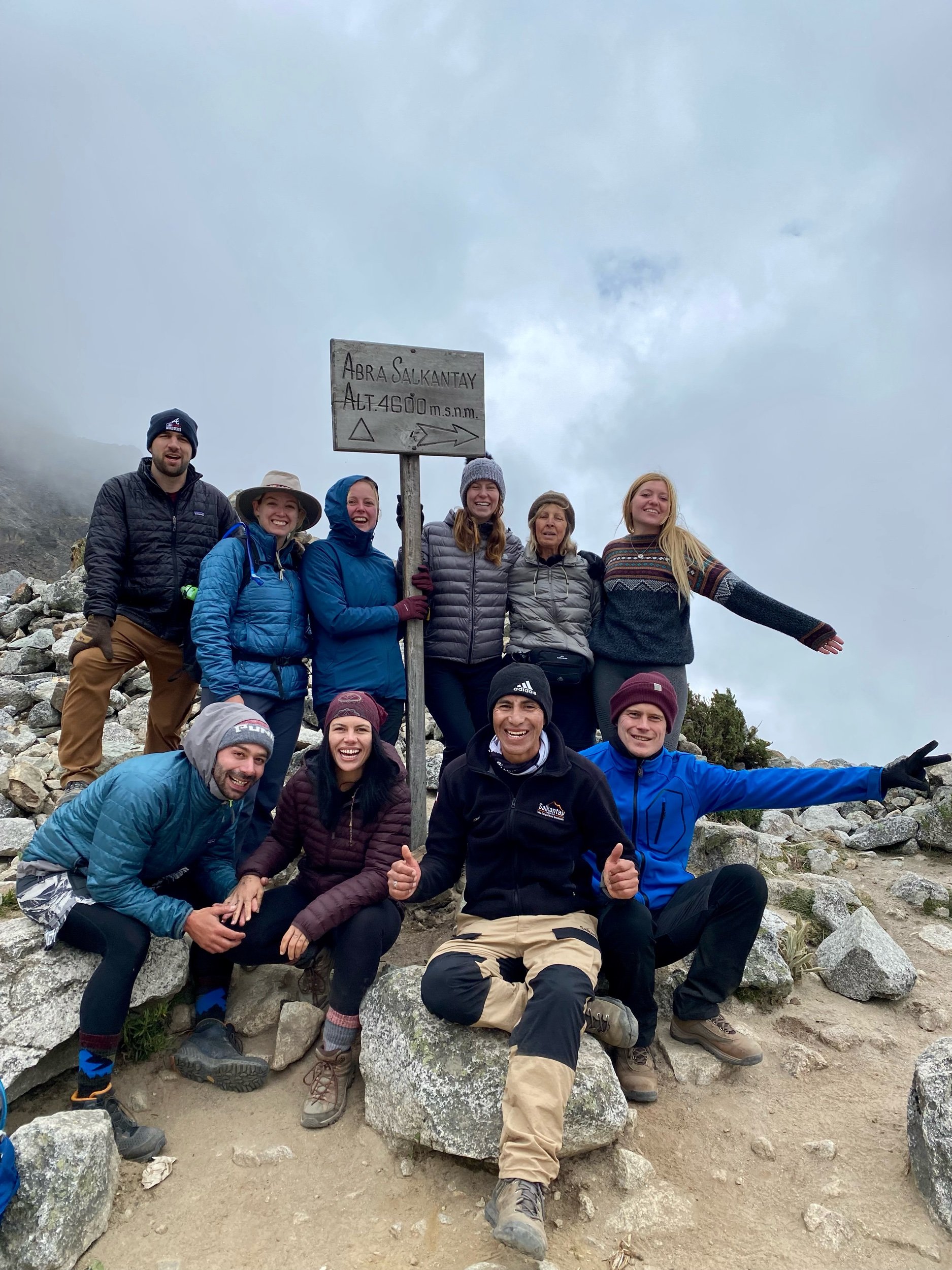


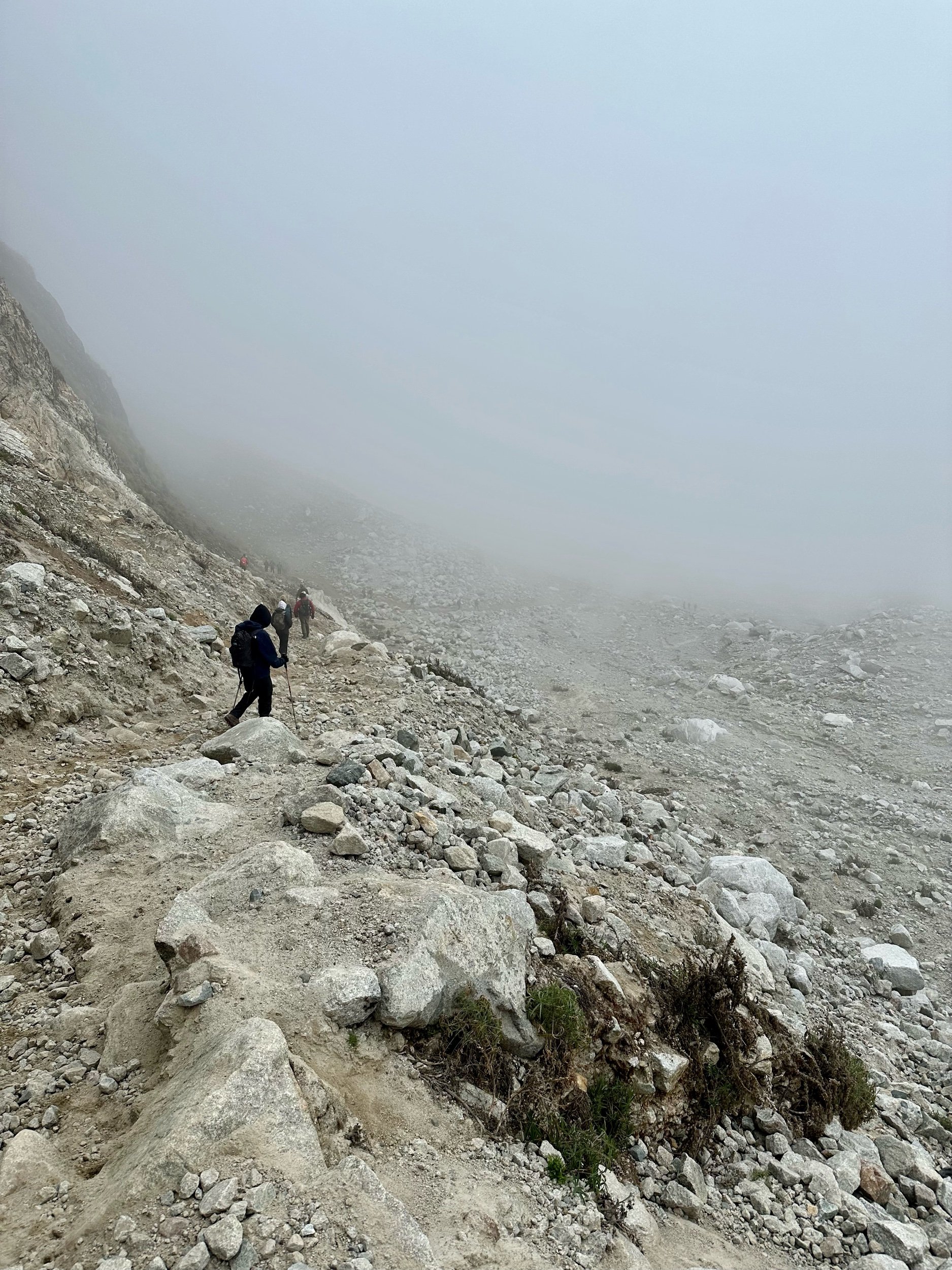
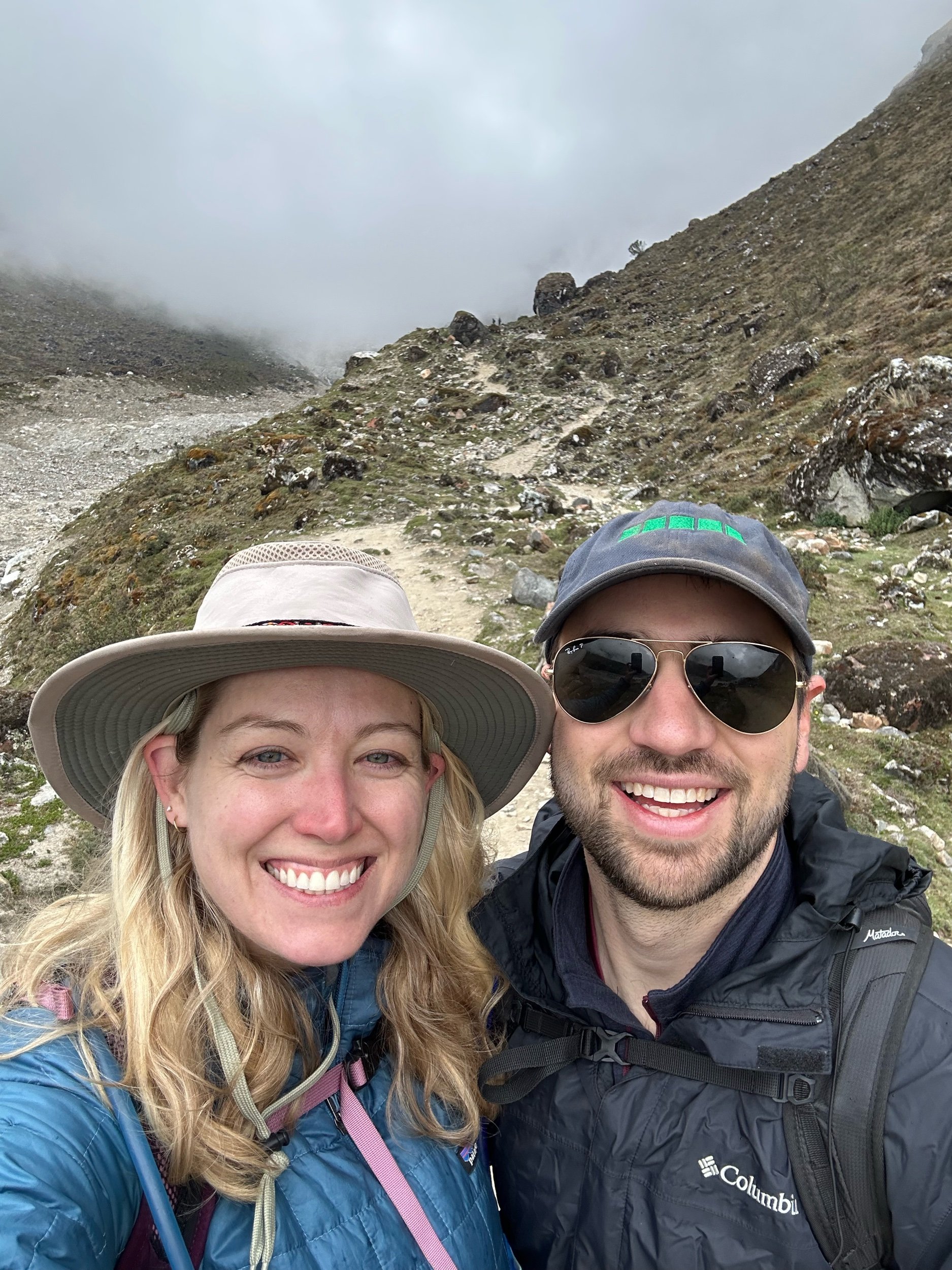

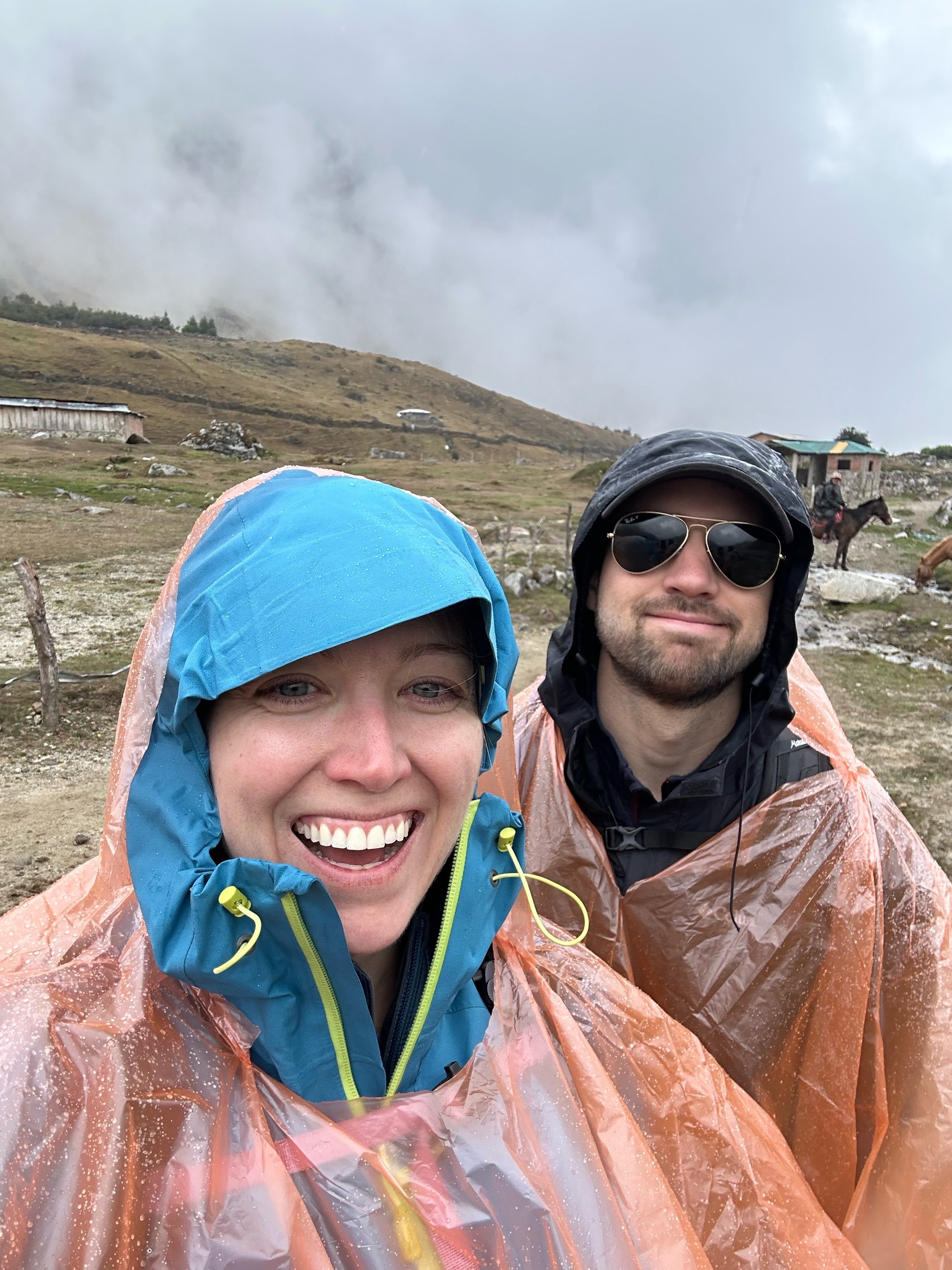

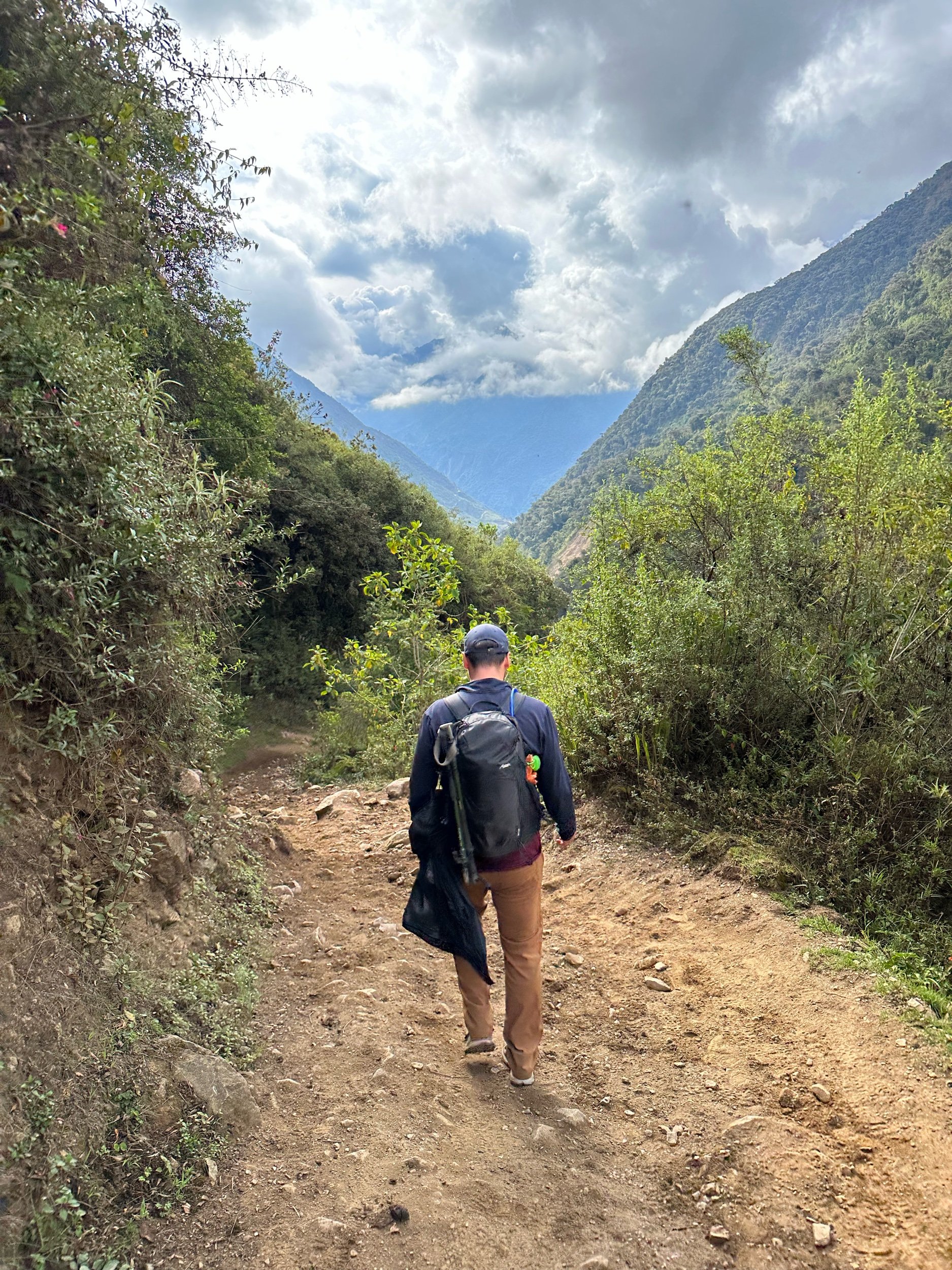
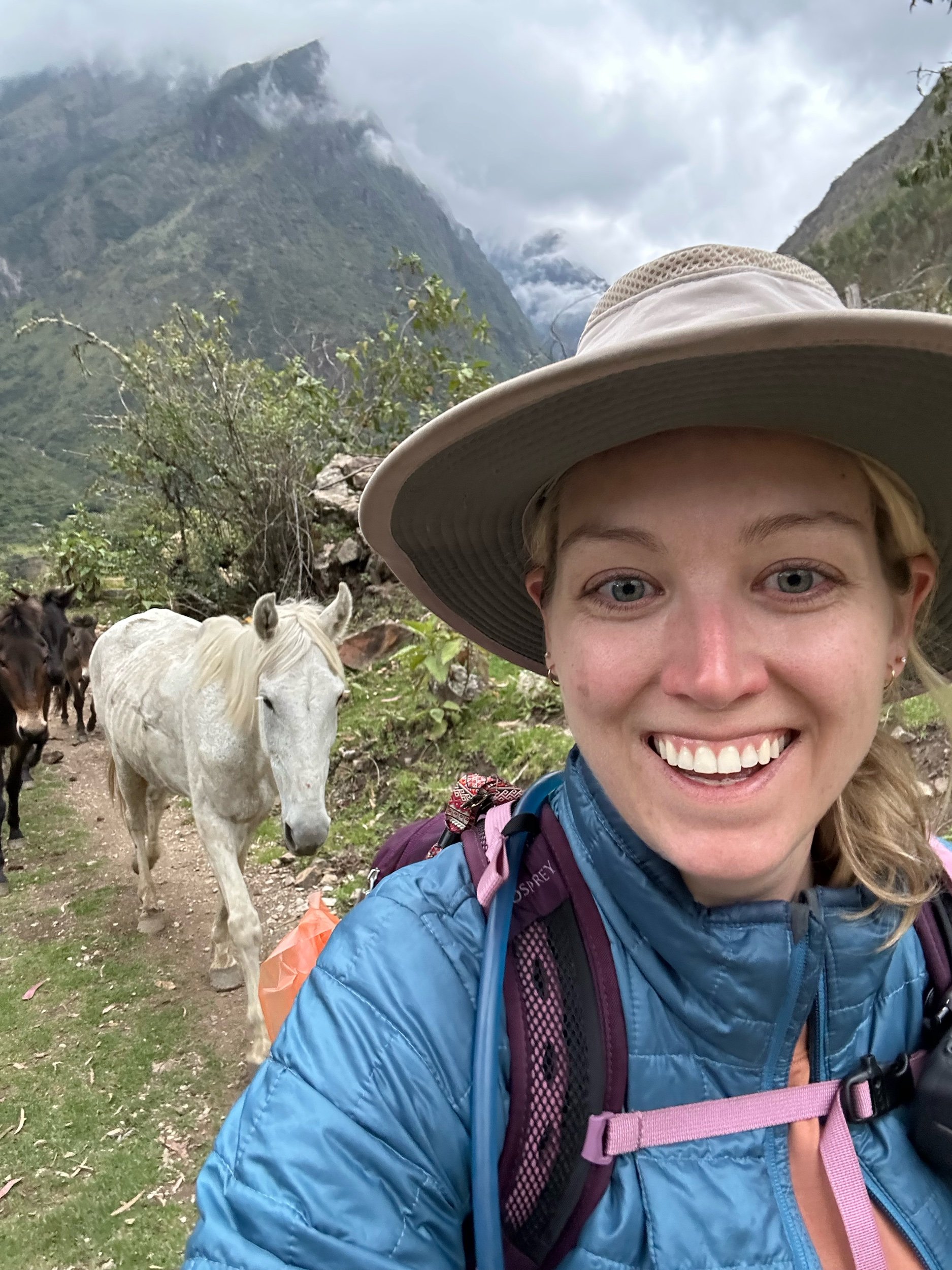
We made it to Chaullay, a tiny village at the intersection of three glacial rivers, and hiked to our Mountain Sky View Glass Huts at Collpapampa Camp. These were Salkantay Trekking’s newest, luxury digs that you have to pay extra for. However, no one was using them the night we were there and our guide won a bet with the other tour guides so we were able to stay there! They each had their own showers and bathrooms (no need to walk outside in the dark at midnight to go pee!) and a 180 degree view of the river valley. The food was once again amazing and we celebrated being done with (what we thought to be) our hardest day by having some cervezas and vino! Don’t worry, we were still in bed by 8 pm.
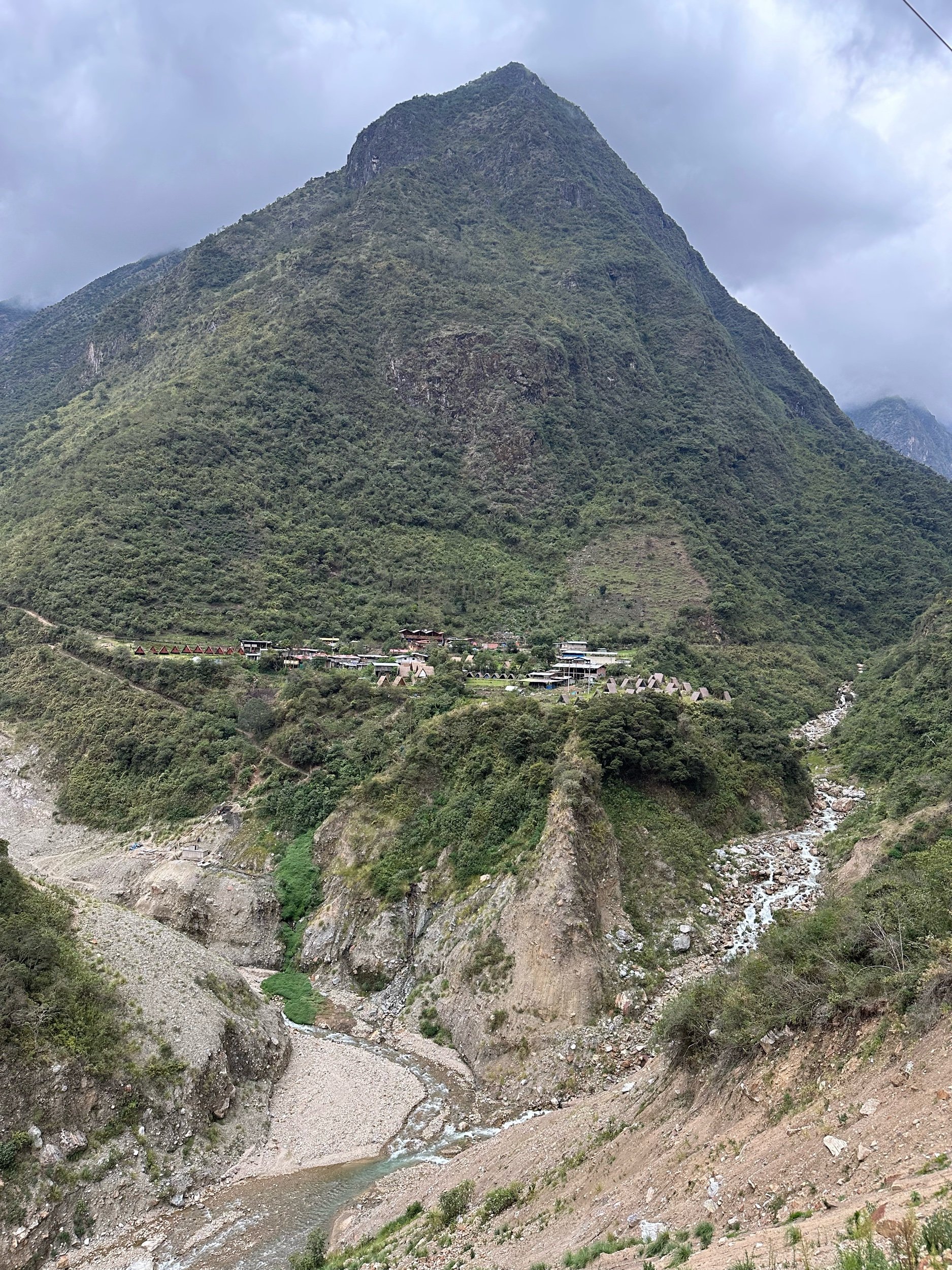
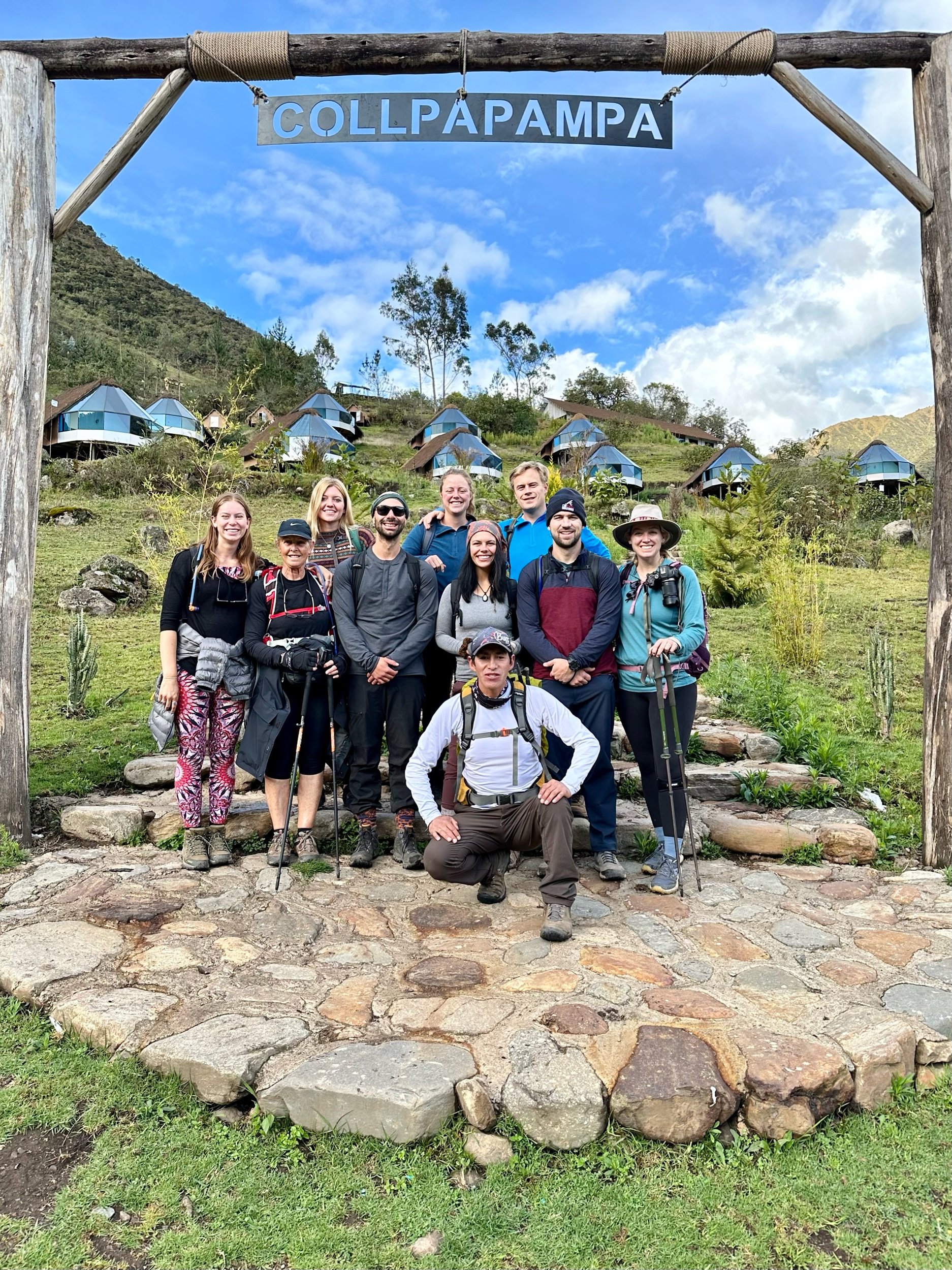
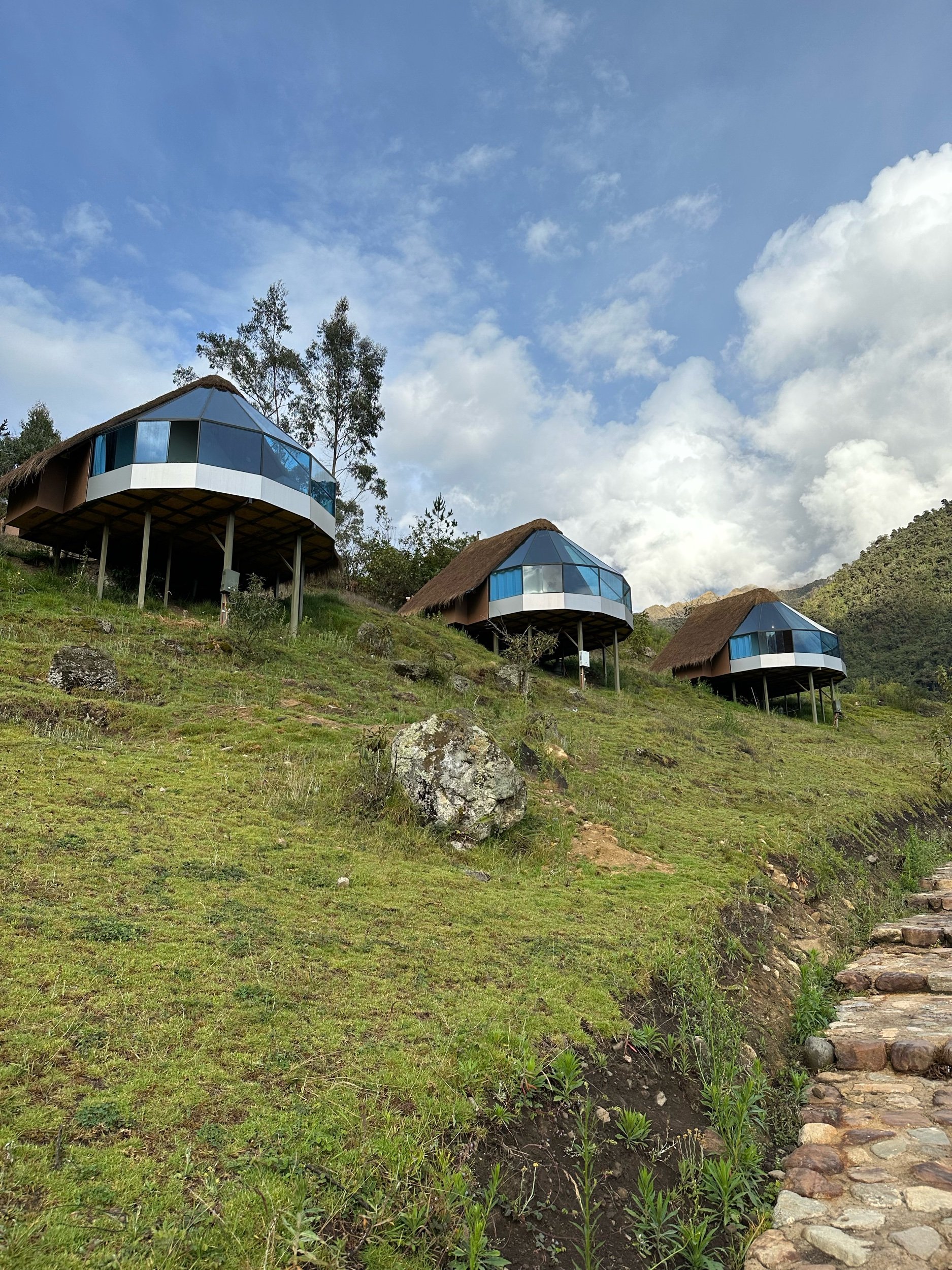

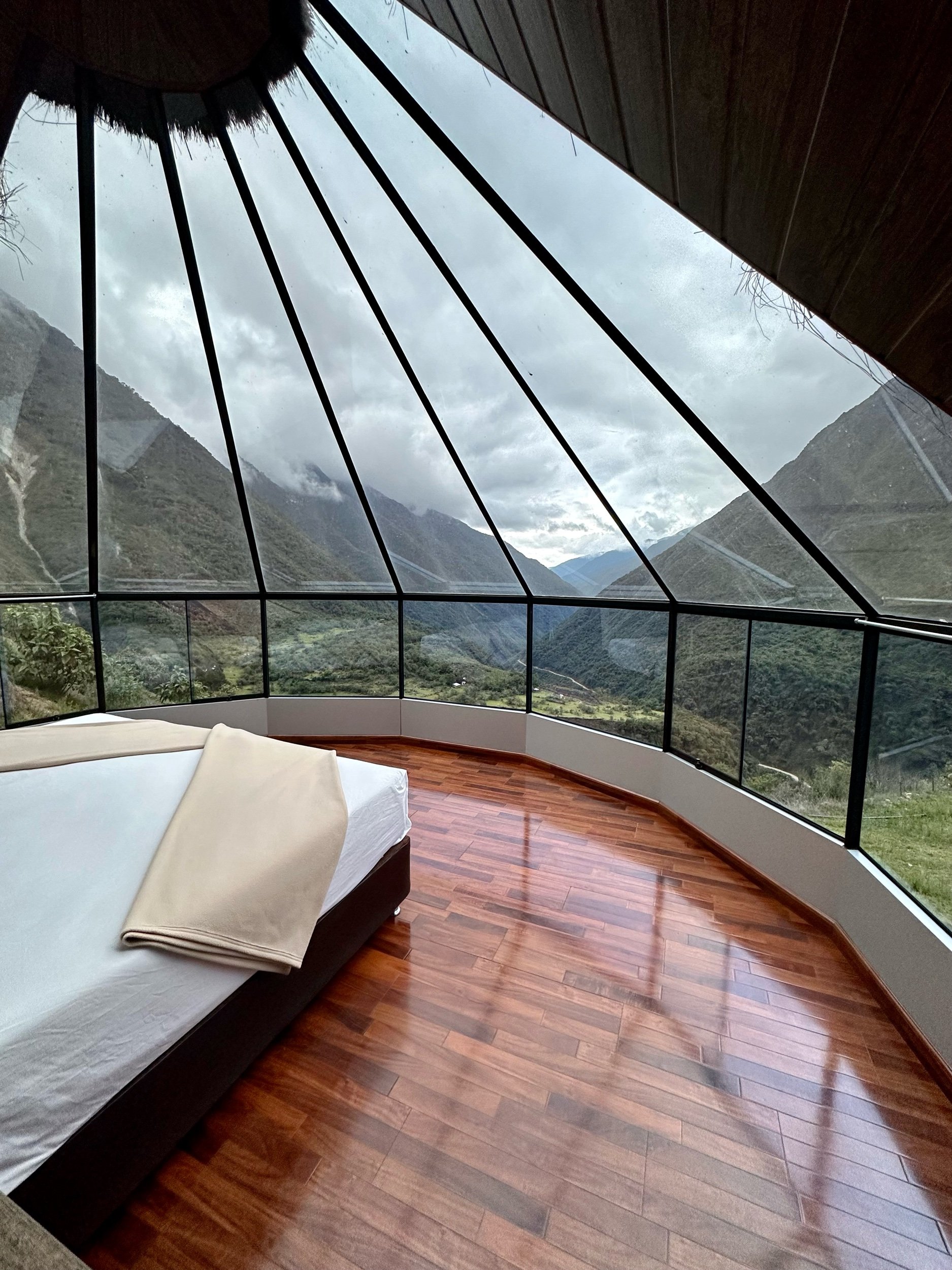
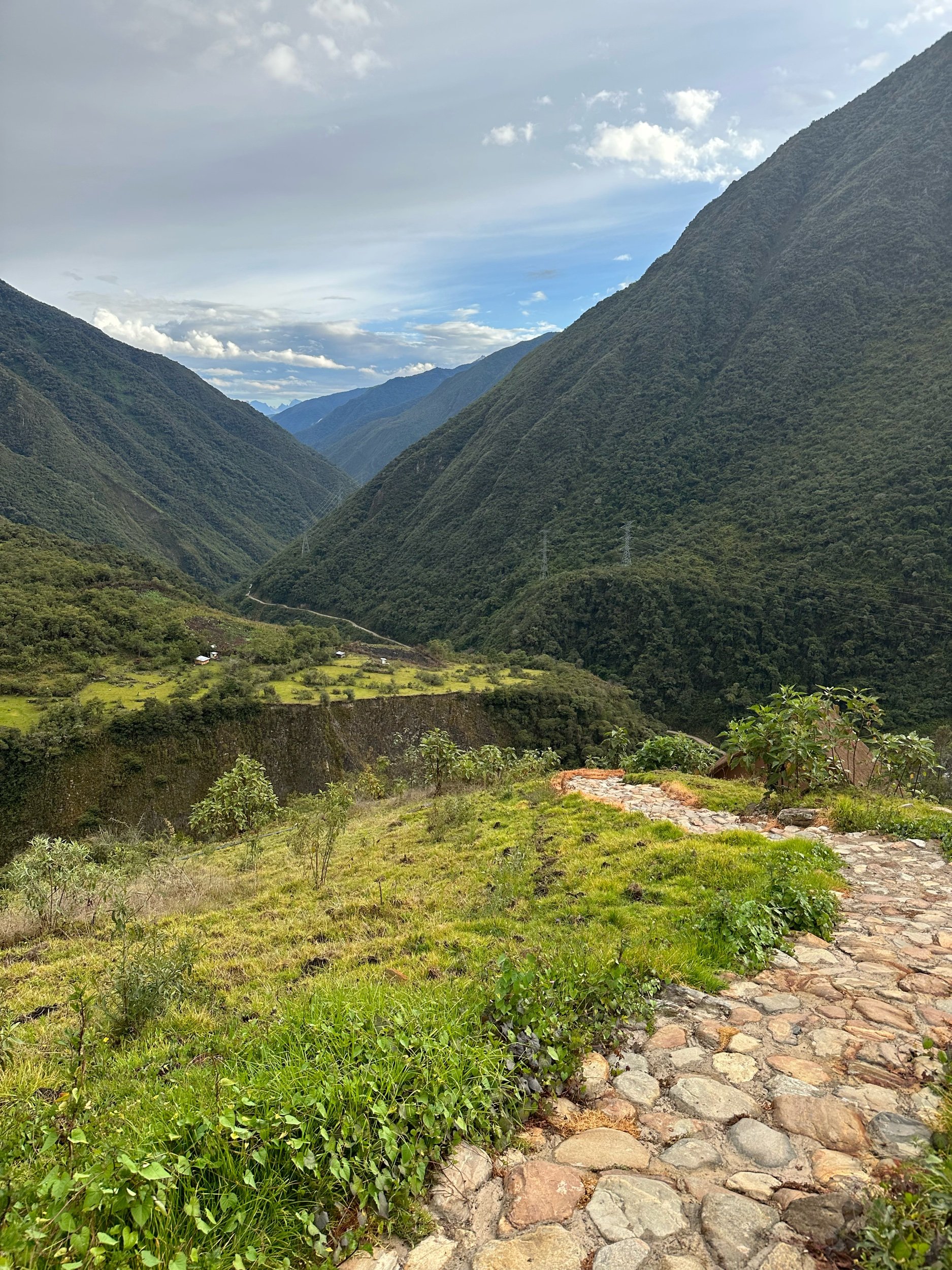
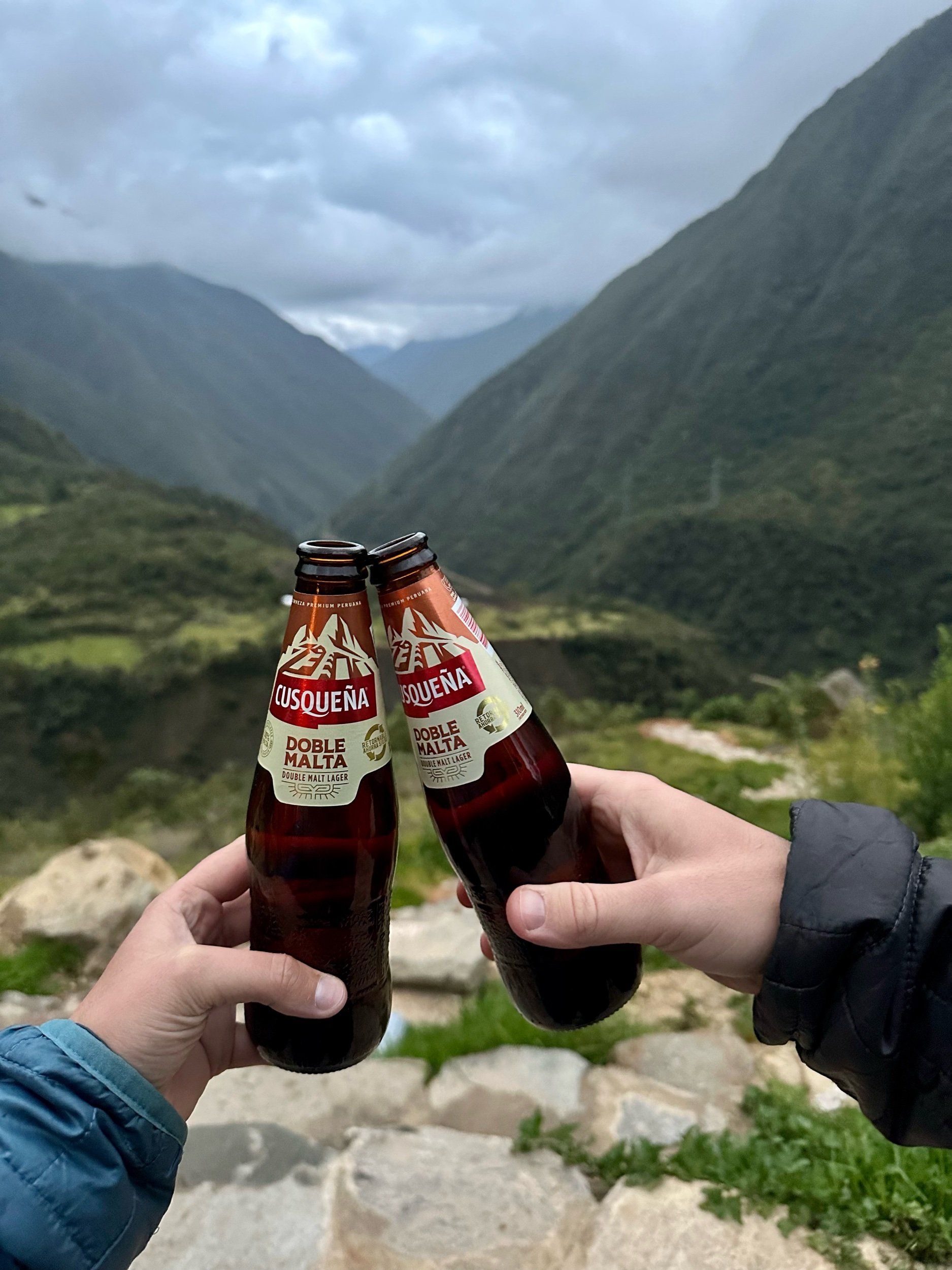
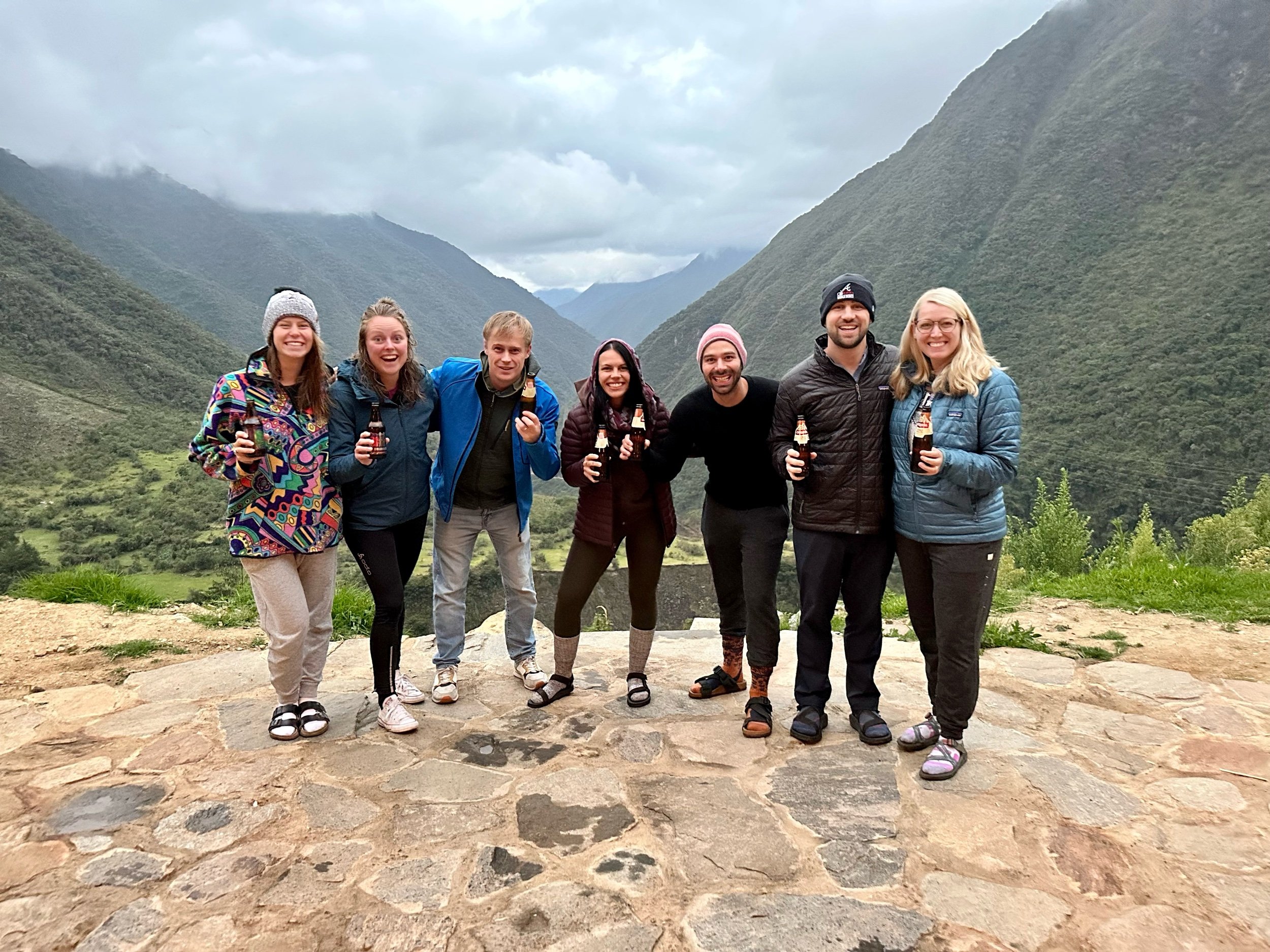
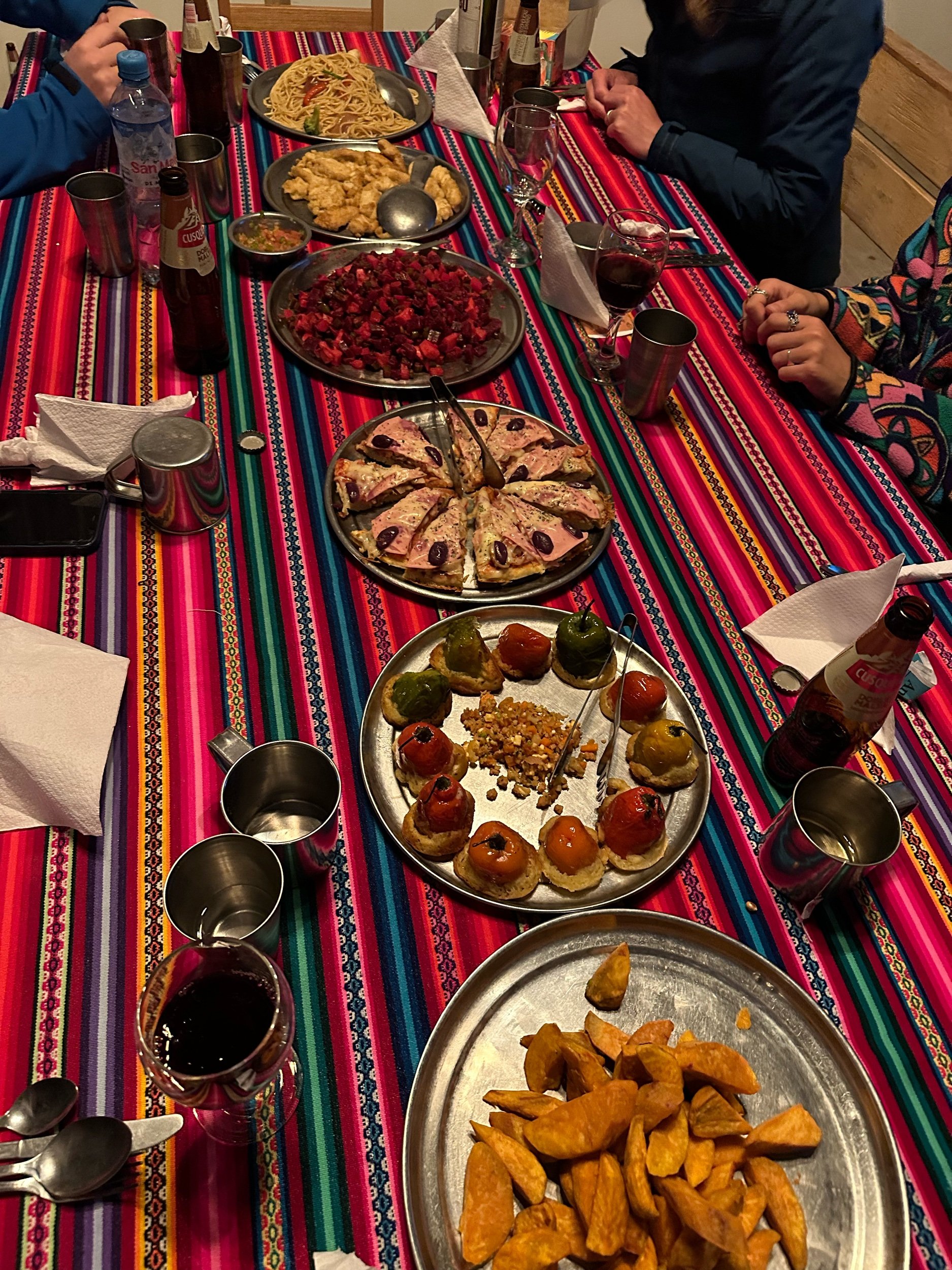
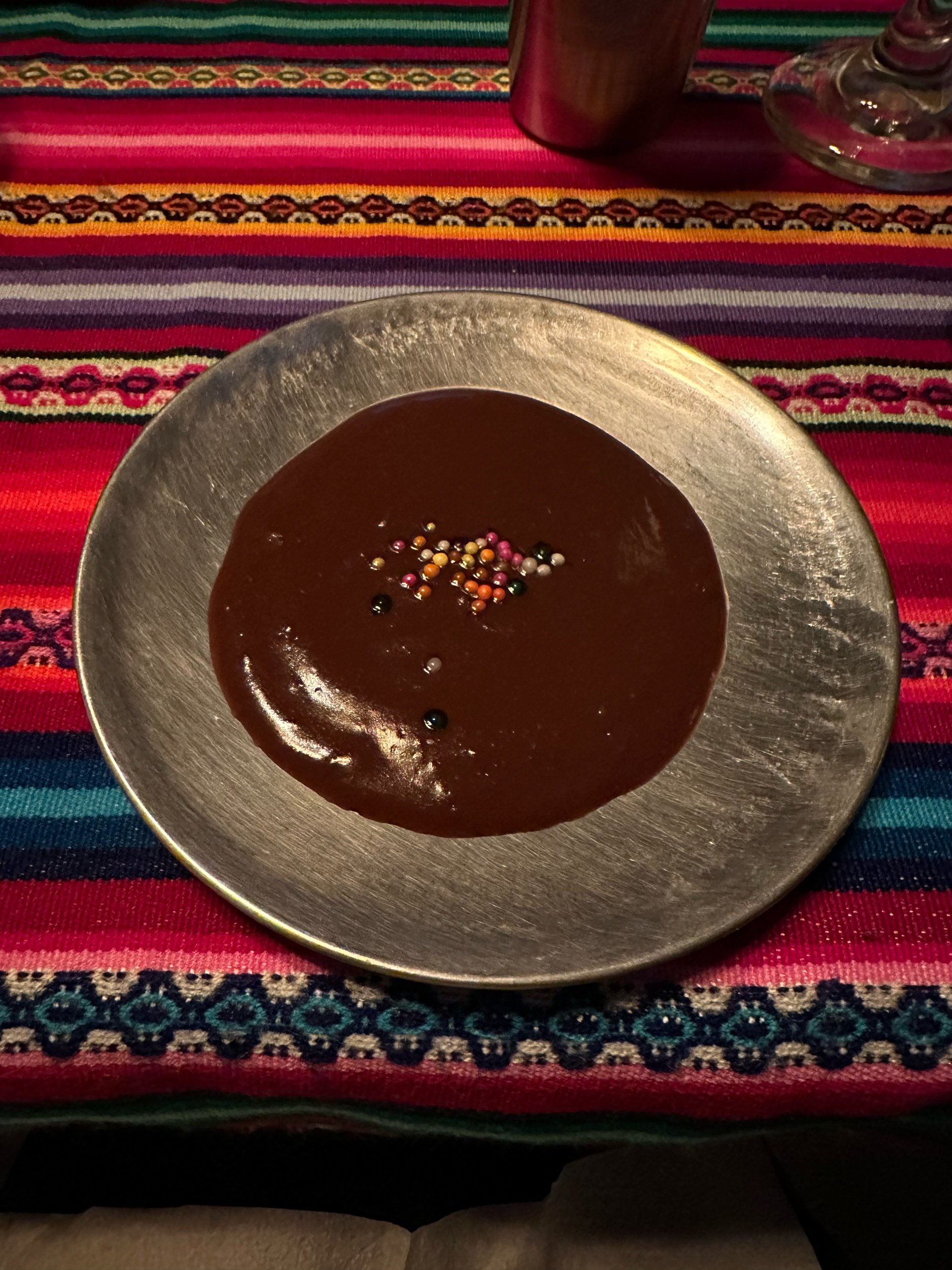
Day 3 began with another early morning at 5:00 am with coca tea. We had an “easy” day ahead of us; 11.25 miles of downhill walking. We saw a ton of vegetation along this route as we got lower into the tropical climates of the mountains. We tasted natural strawberries (so tiny!), a sour, grape-like fruit, and saw many larger plants like papayas, bananas, granadilla, avocado, and of course plenty of coffee beans.
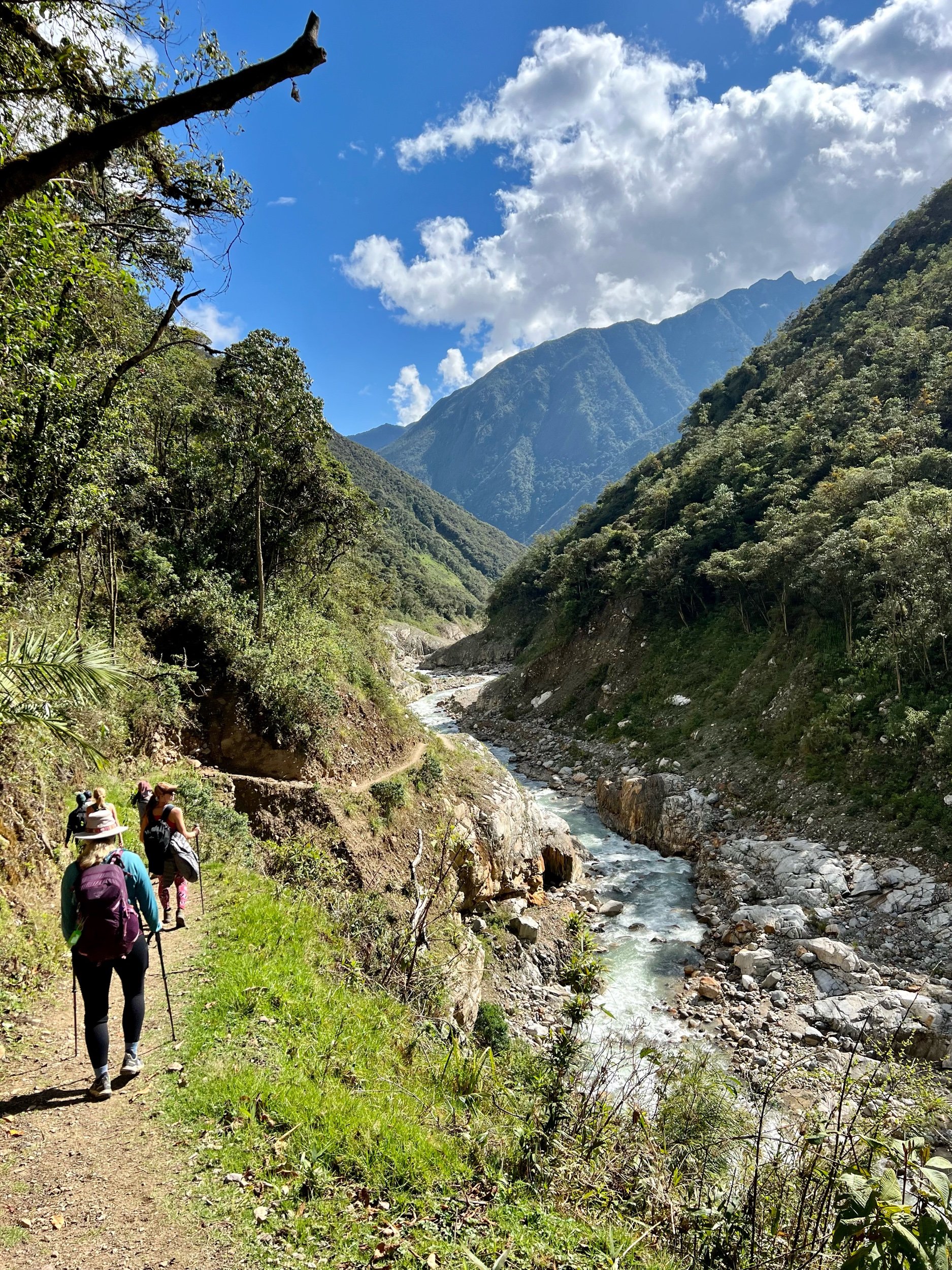
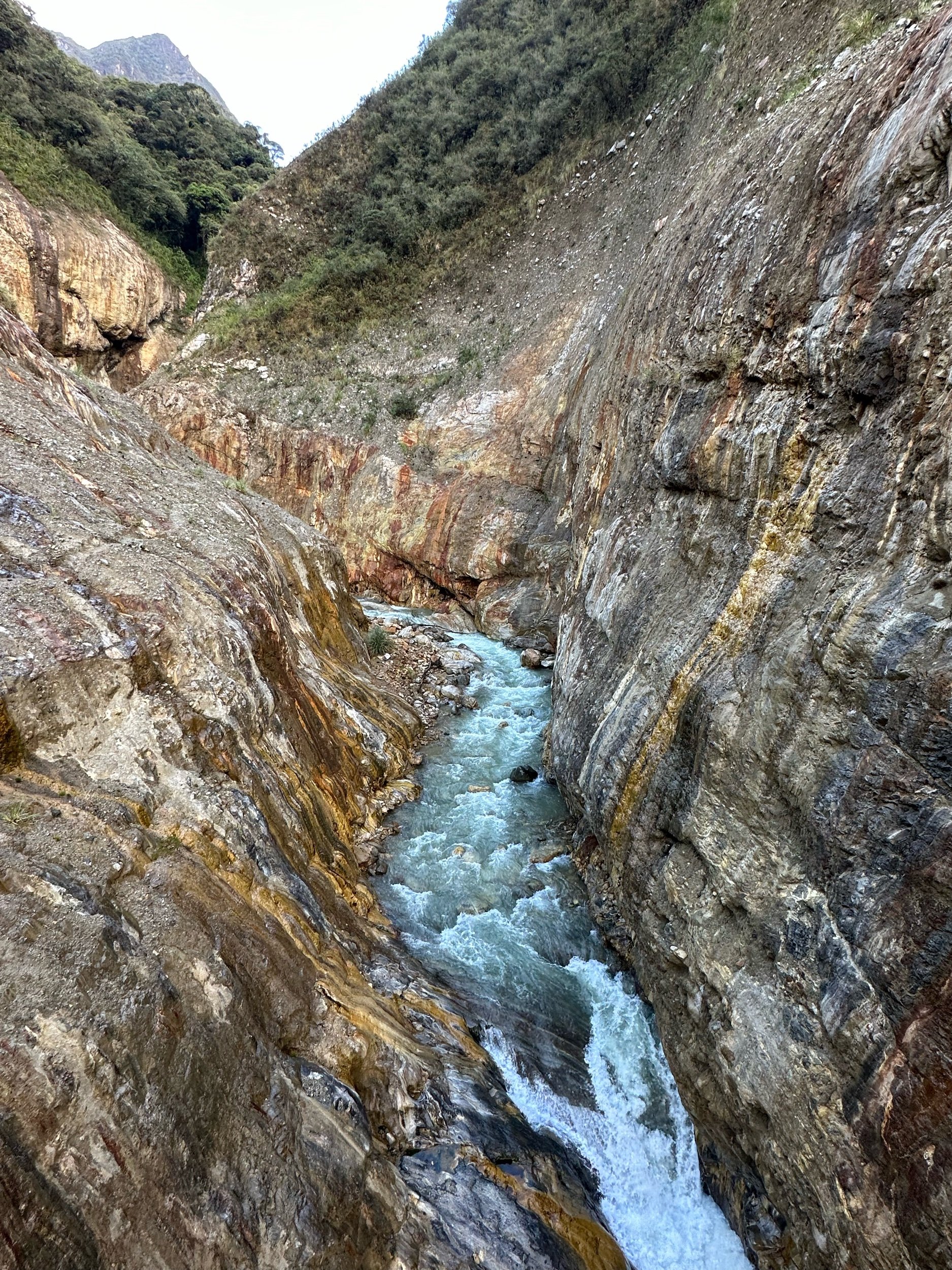

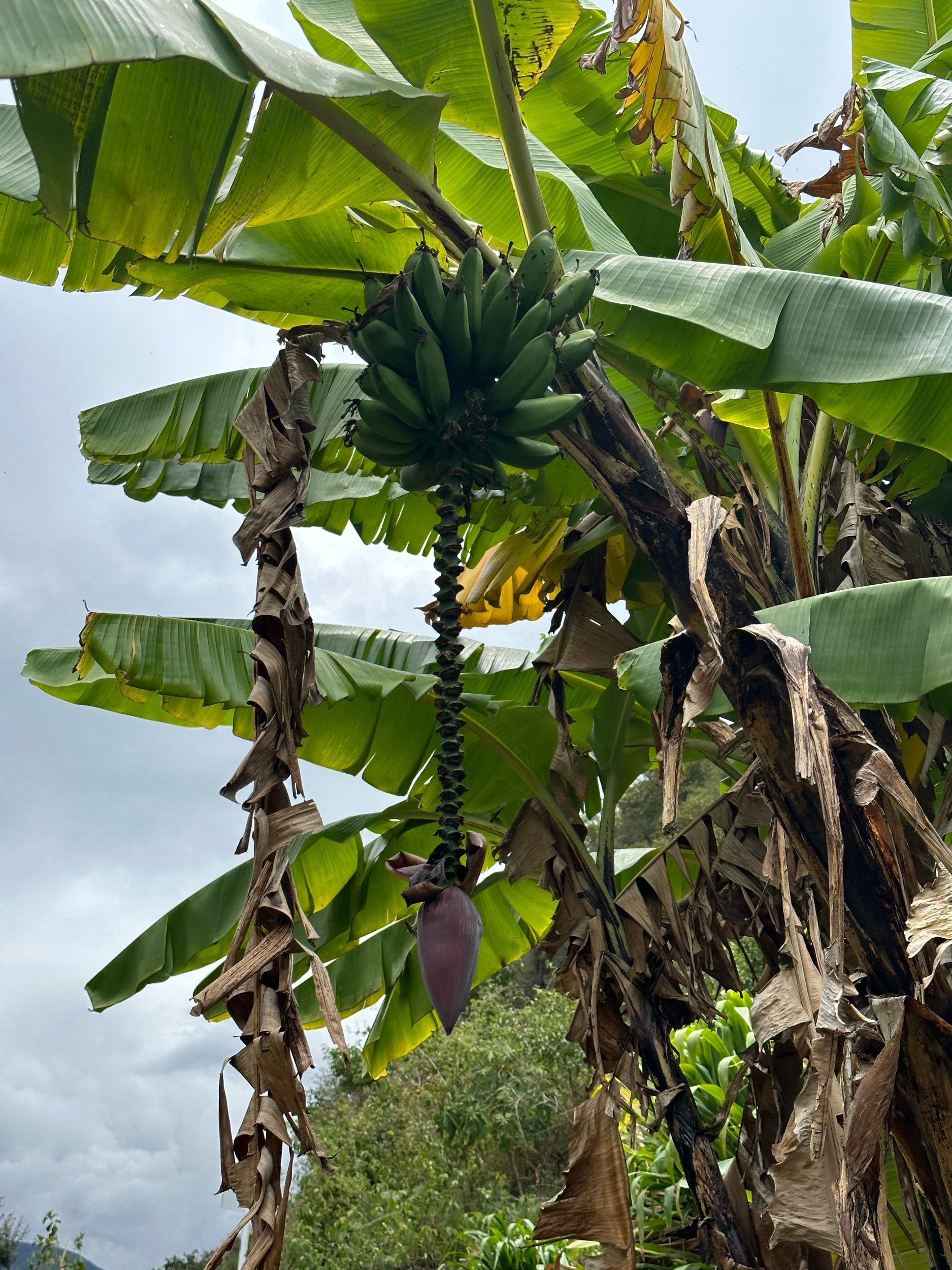

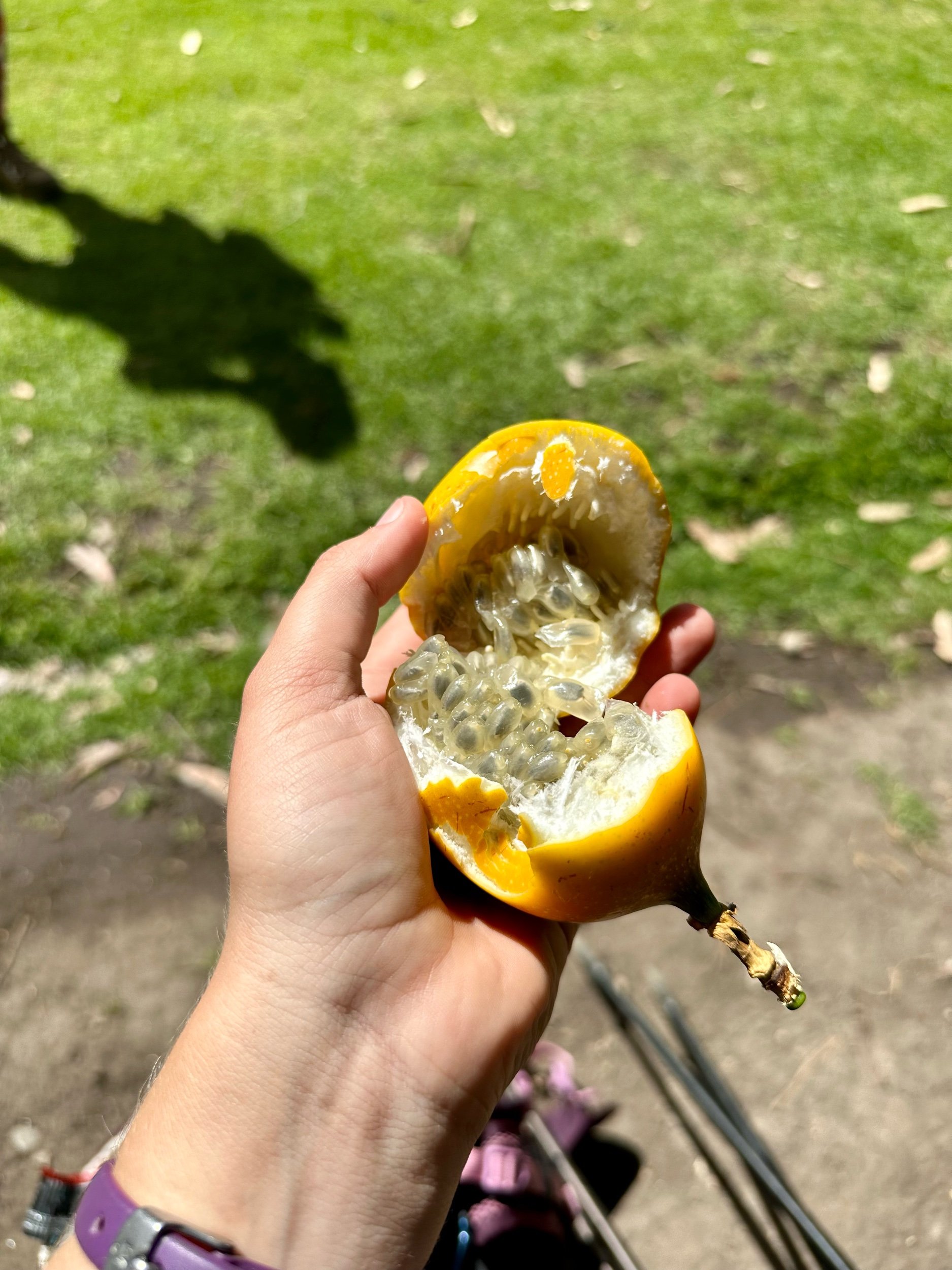
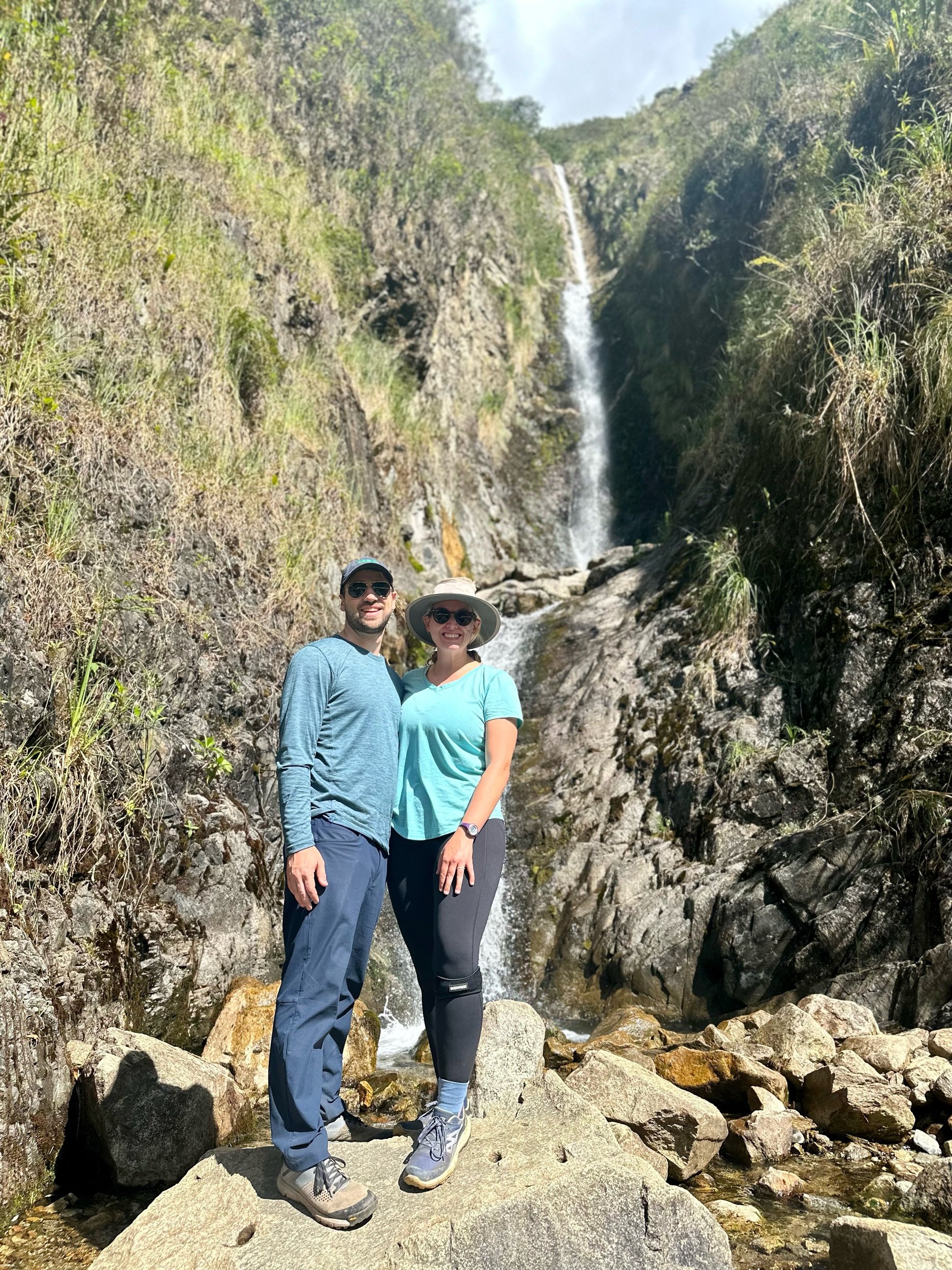

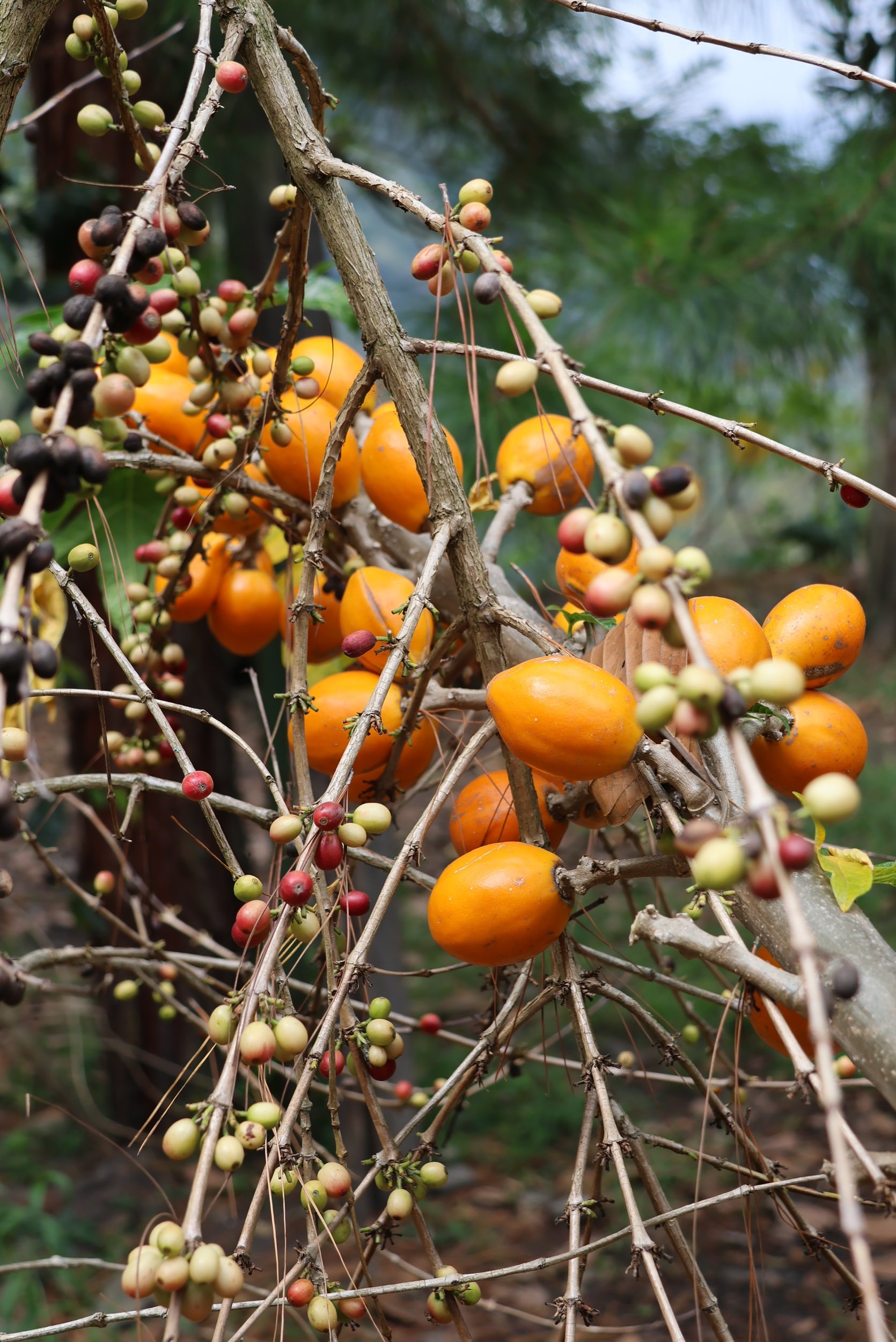


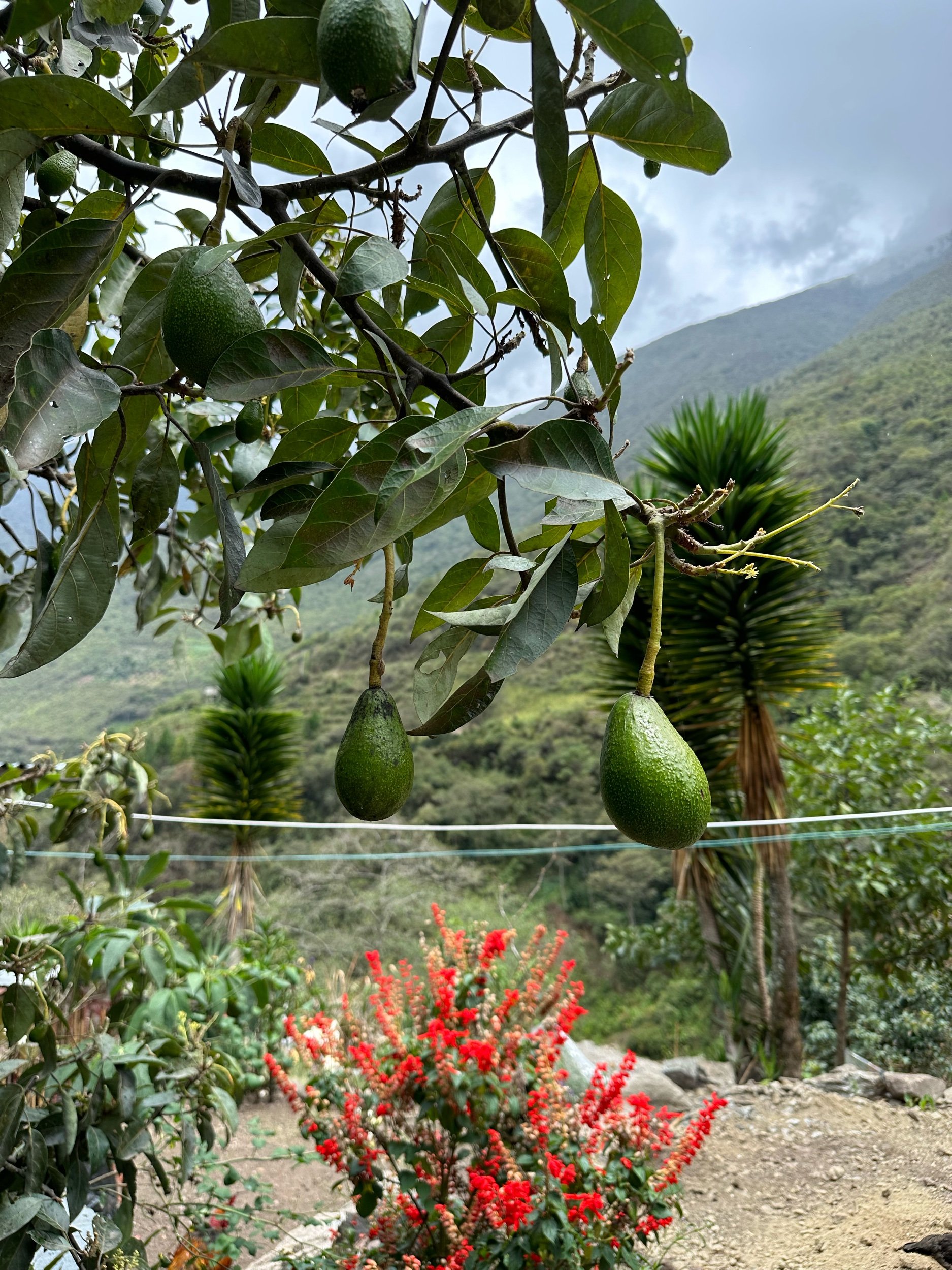
We made it to the main village of Lucmabamba and stopped for a lesson on how coffee is made! They showed us how the beans are harvested, how they are peeled to remove the shells, we roasted the beans in a pot ourselves, ground the beans, and had fresh-from-the-tree espresso! Matt still hated it (seriously, coffee is disgusting, what are the rest of y’all doing drinking it??) but Susan also said it was actually bad (bitter/burnt)! So, iffy on the coffee itself, but it was still a great experience.




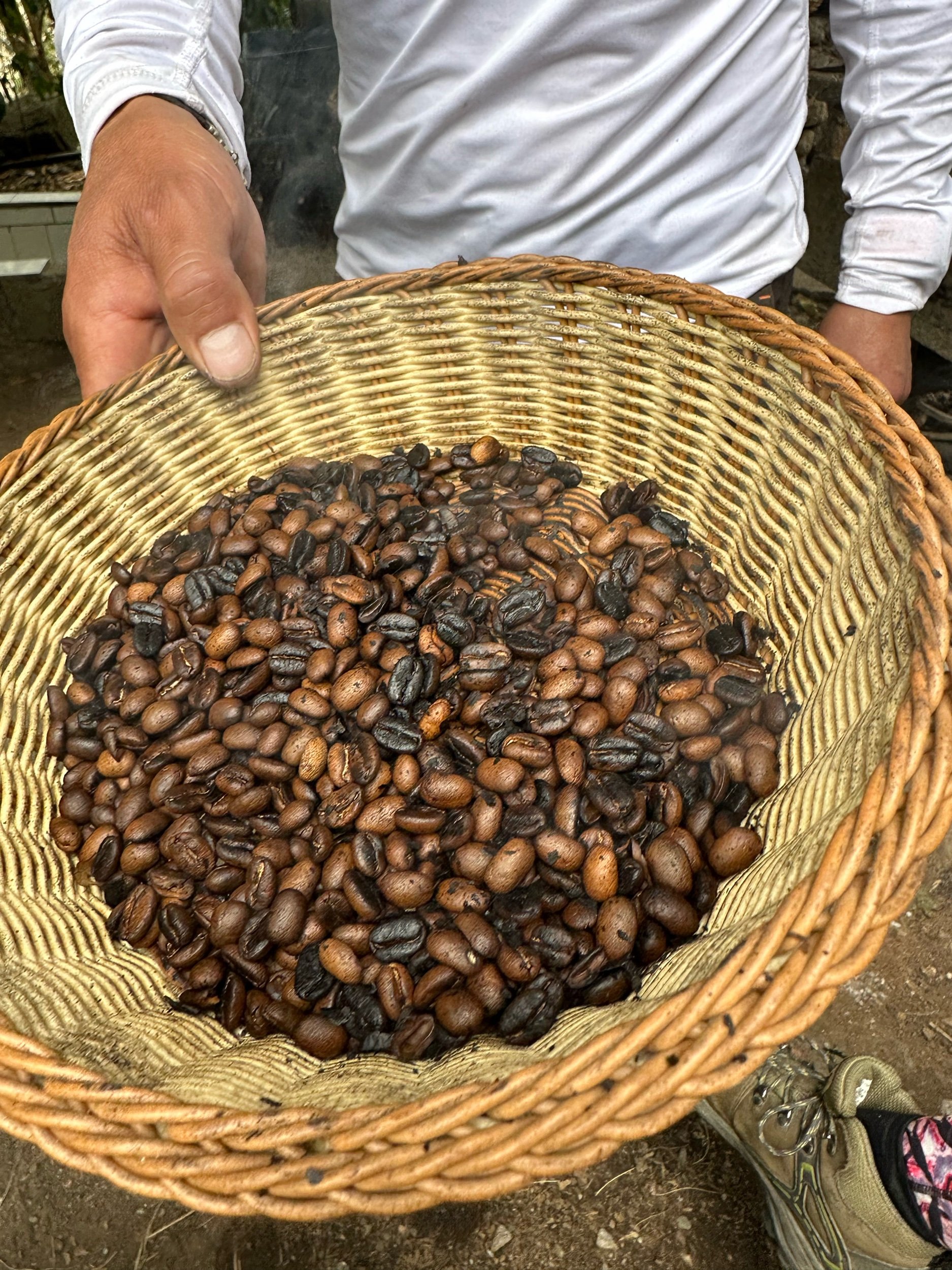
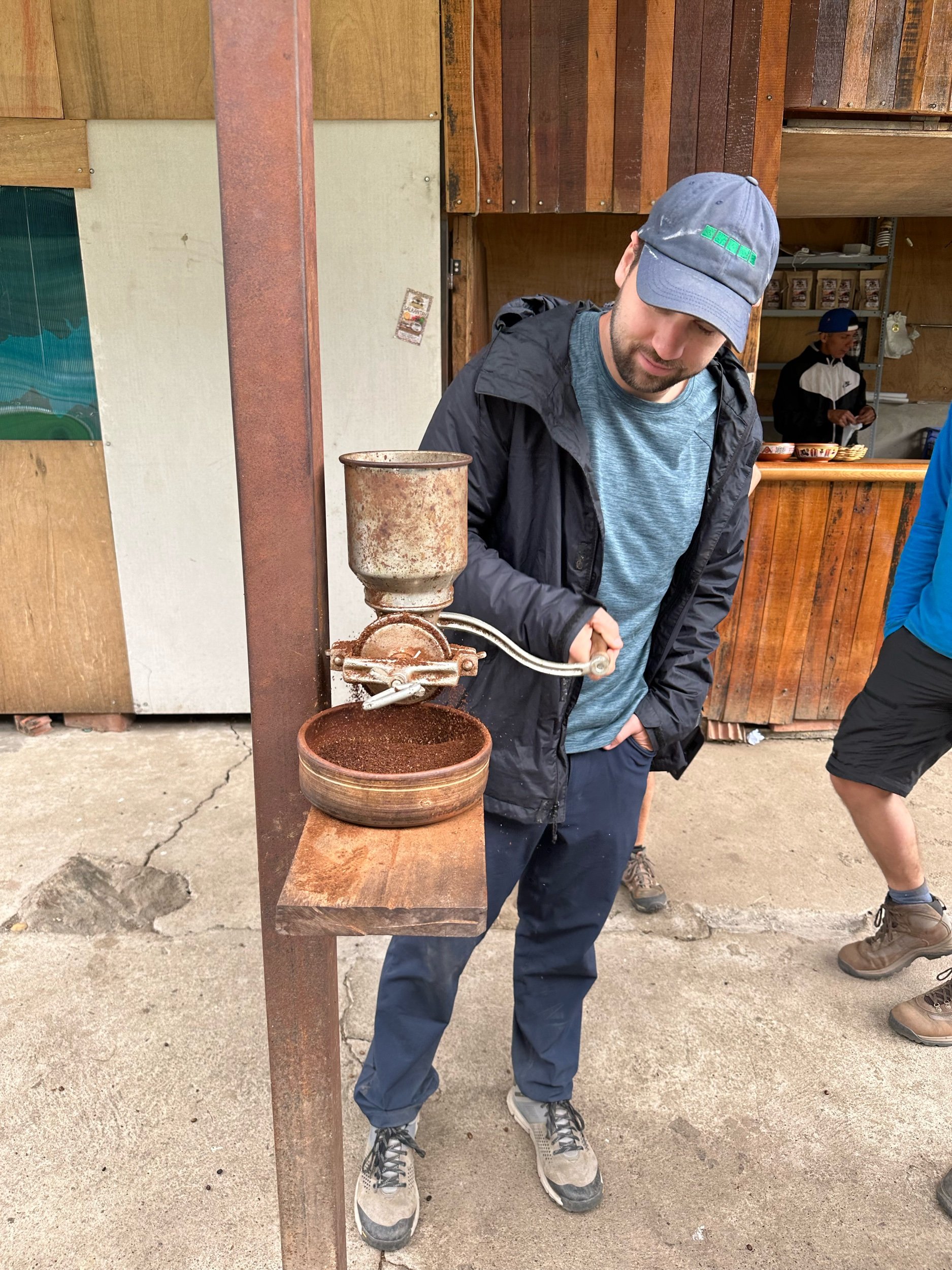
We then arrived at our Jungle Domes at the edge of the village. Today is actually Thanksgiving back home and our chefs made us a Thanksgiving themed lunch! They made a pineapple chicken kebab Turkey for the group to enjoy! After lunch we had the afternoon off from hiking and we went to the hot springs. These were pools in the nearby town of Santa Teresa that were heated by natural spring water that was warm; we wouldn’t call it hot. The mosquitos were insane here so we just stayed in the water for about an hour and then left. We got back for another fantastic dinner and then straight to bed, by 8pm.
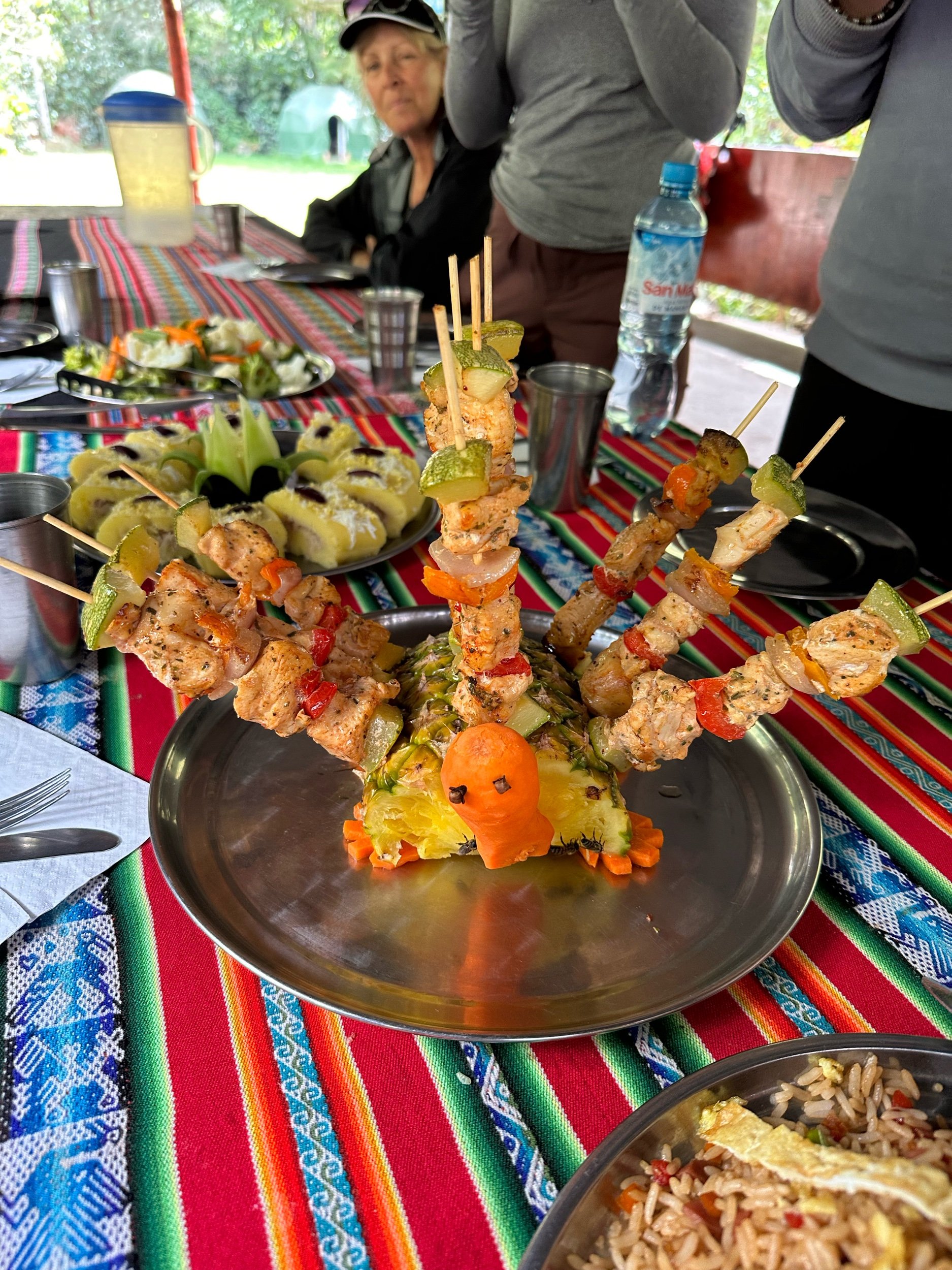
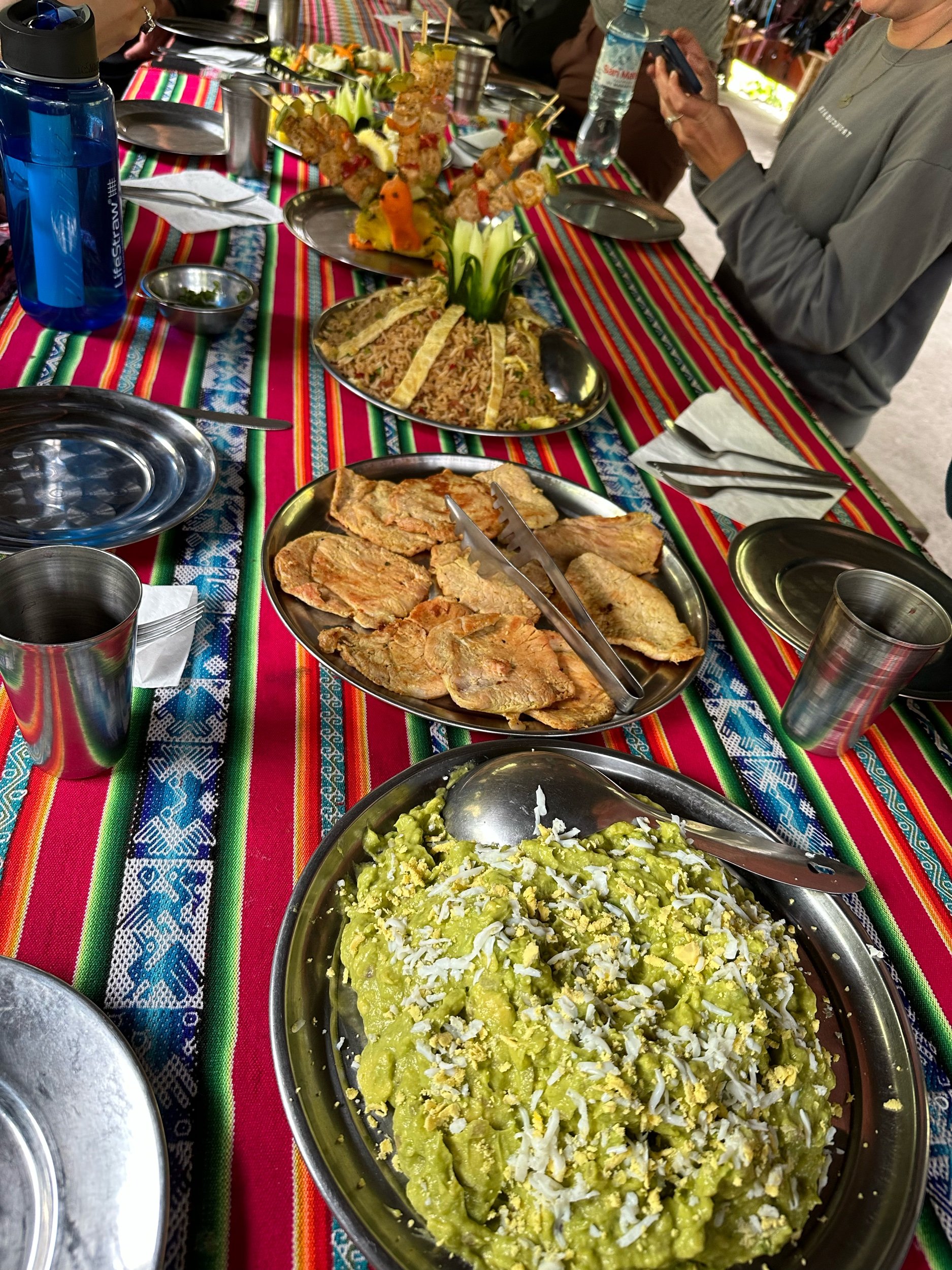


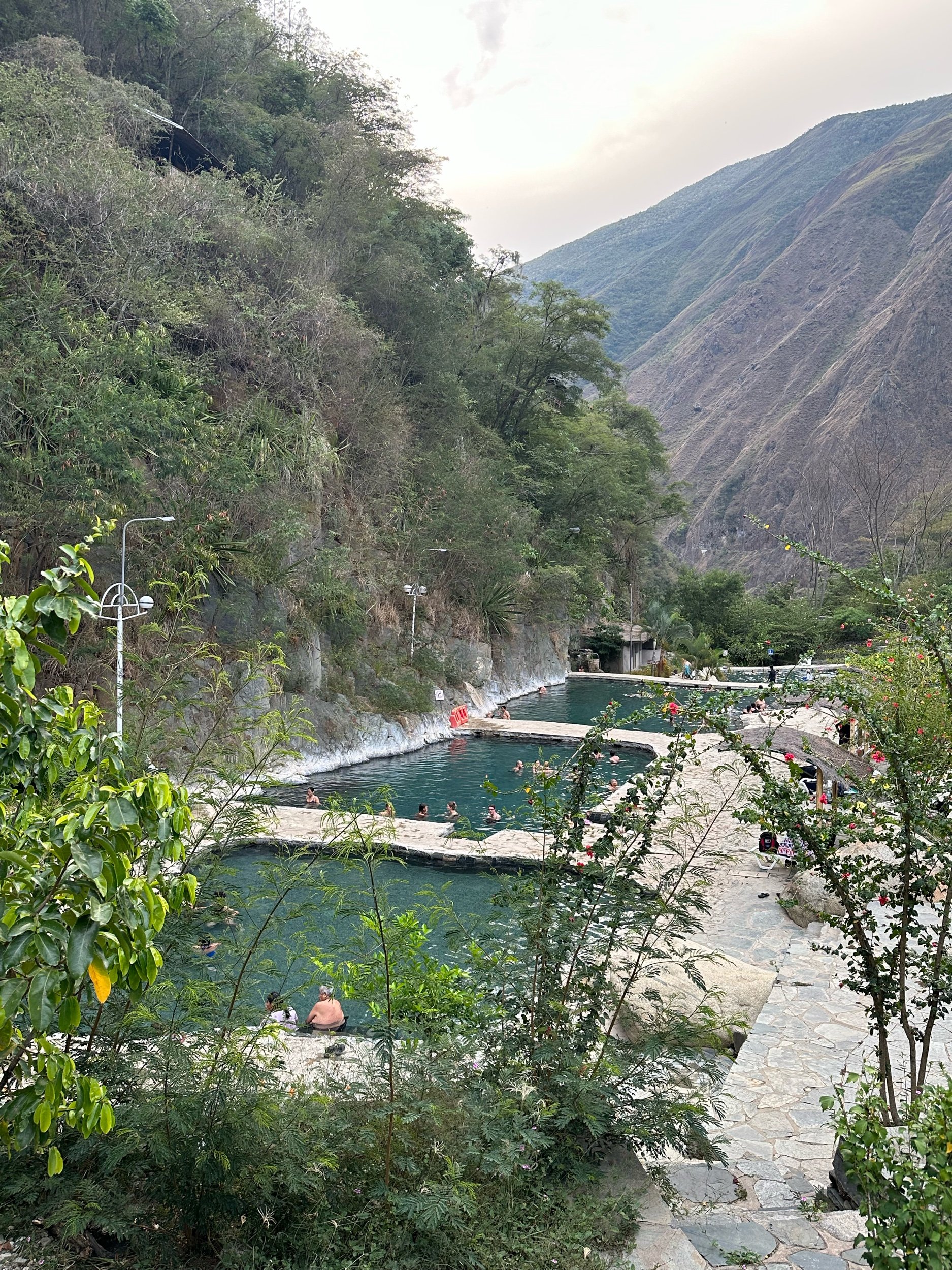

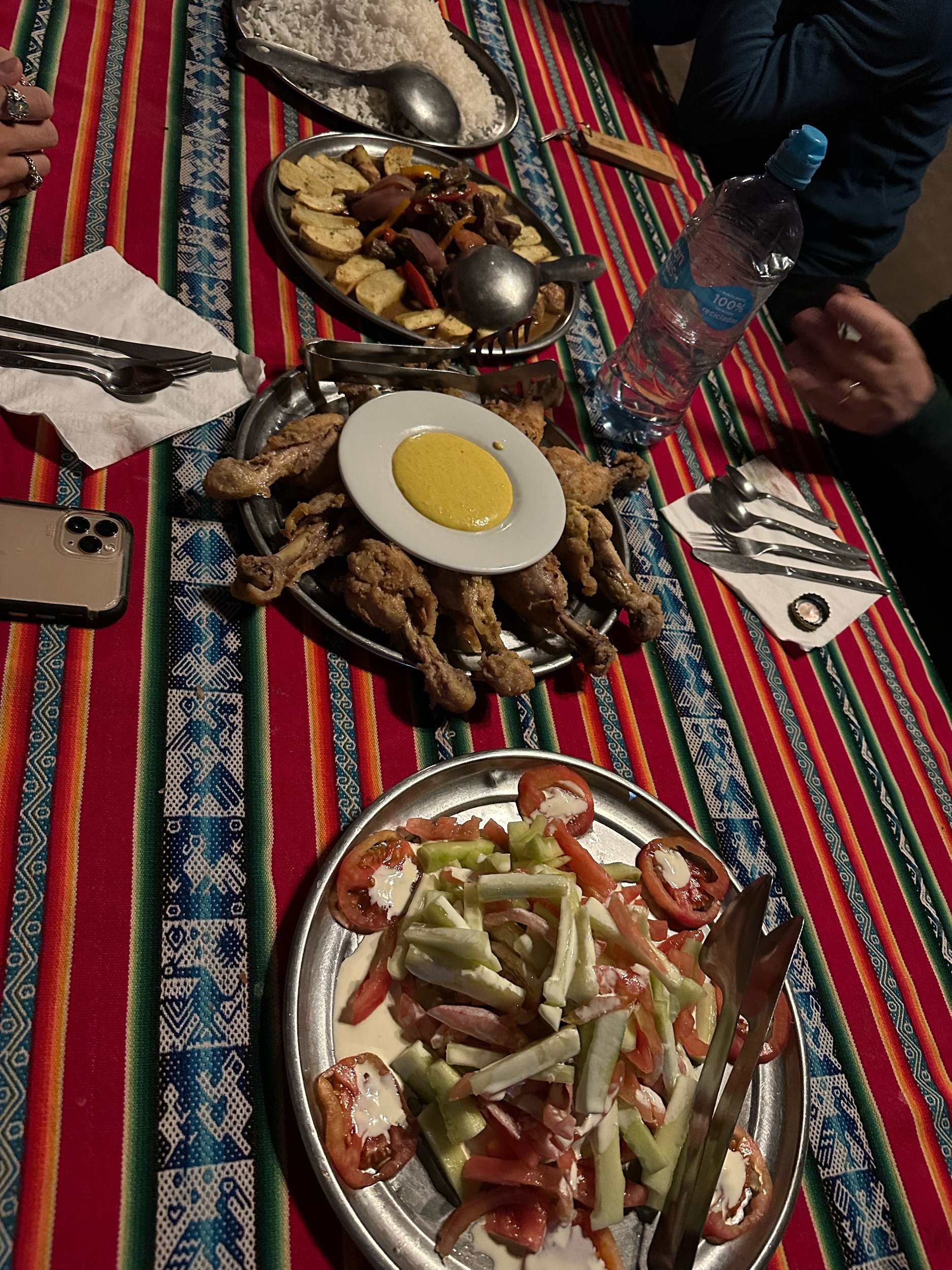
Guess what? On day 4, our last day of hiking to get to Machu Picchu, we had to wake up at 4:50am again. By this point we were ready for our next chance to sleep in just a little bit. We had breakfast and then set out for our last day of hiking. This hike was pretty intense. Our hiking route today took us up over a mountain and then down to the Urubamba river where we had a long “gringo flat” walk to Aguas Caliente, the town outside of Machu Picchu where everyone stays and the busses take you up to Machu Picchu. We started up the mountain to get to Llactapata pass which is another 800m (2640 ft) elevation gain up in only 3 hours of hiking. The view at the top was incredible and totally worth it though, we could even see Machu Picchu! We were very lucky with the weather to get such clear views of the surrounding mountains. You could already feel the intense spiritual and natural energy of Machu Picchu just from being in the same mountain range. The peaks, valleys, clouds, and rivers that you could see combined to create an out-of-this-world feeling and location. We then descended down the other side of the mountain which was very steep; it was tougher going down than going up! We stopped for lunch at a cafe/family’s home near the bottom of the mountain. They had hammocks for us and every person in our group took a siesta after lunch.
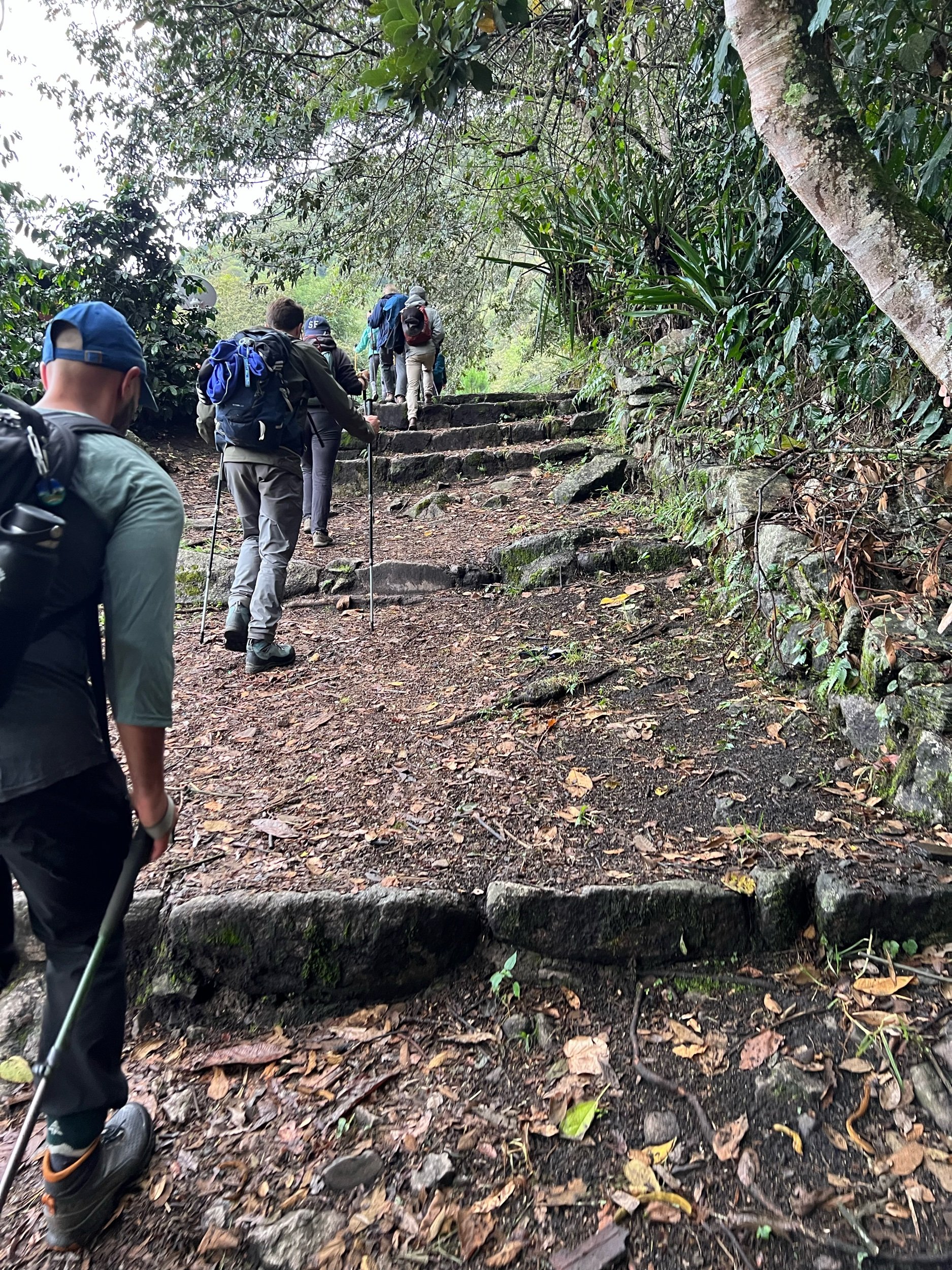

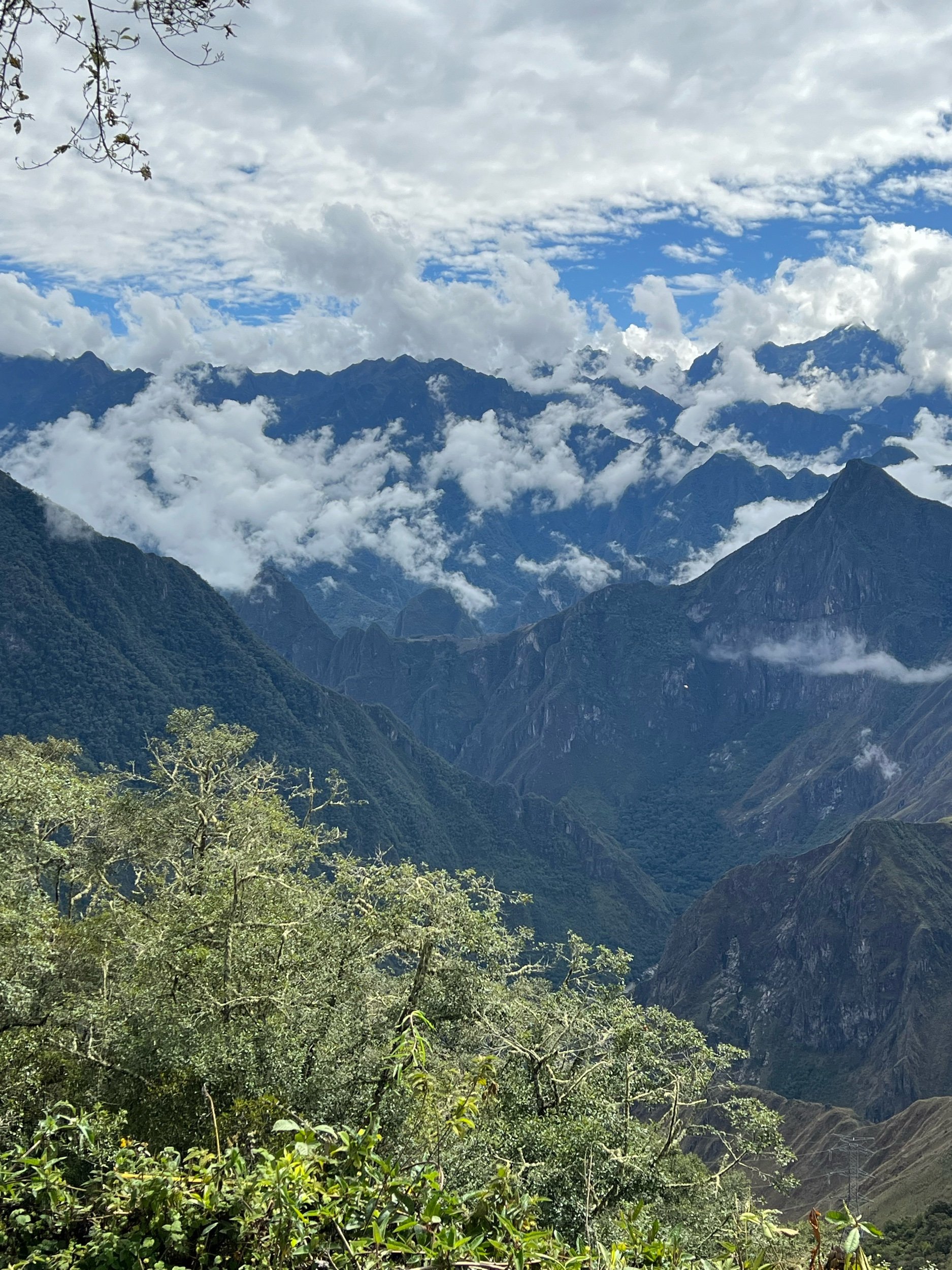
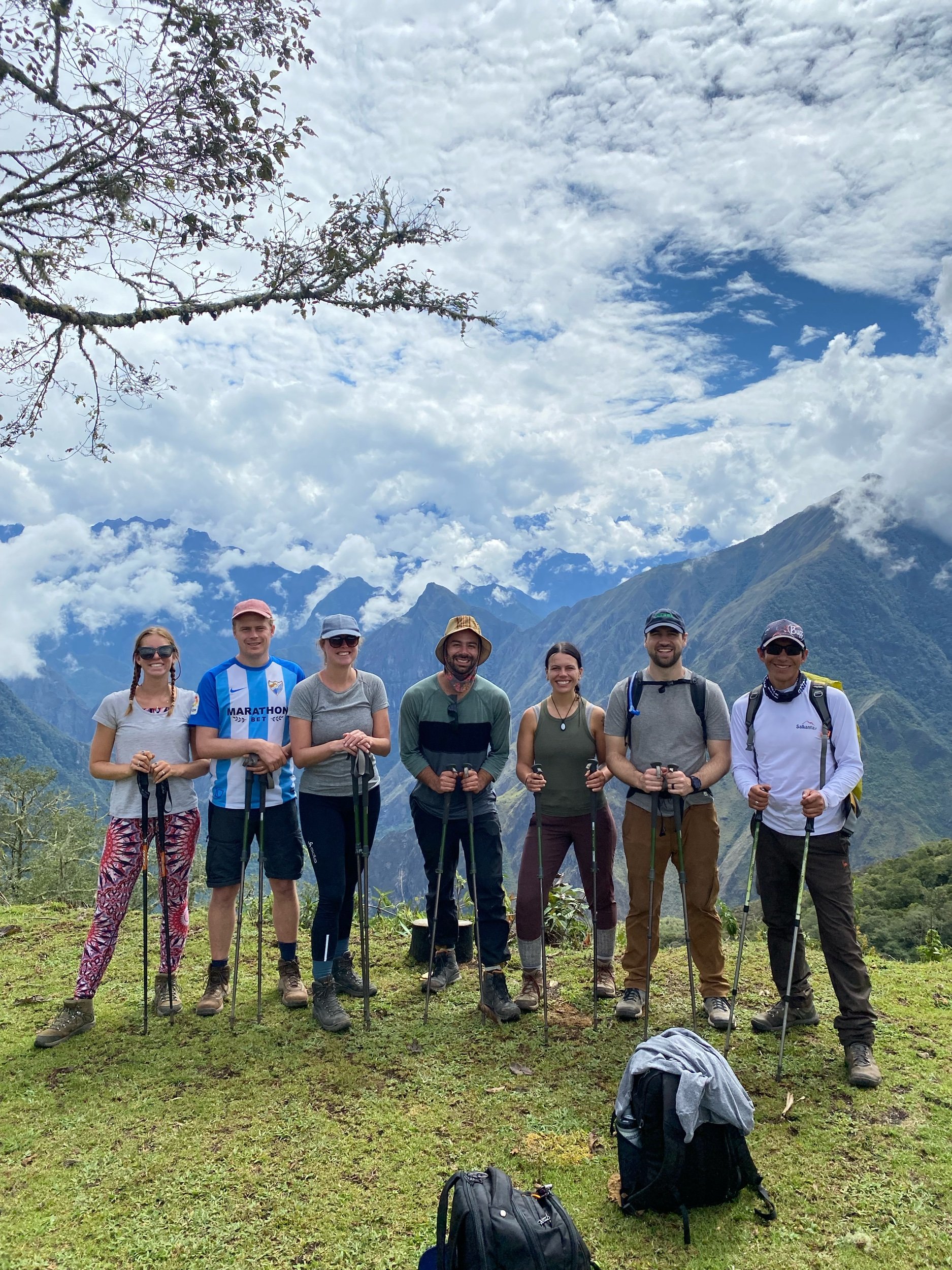
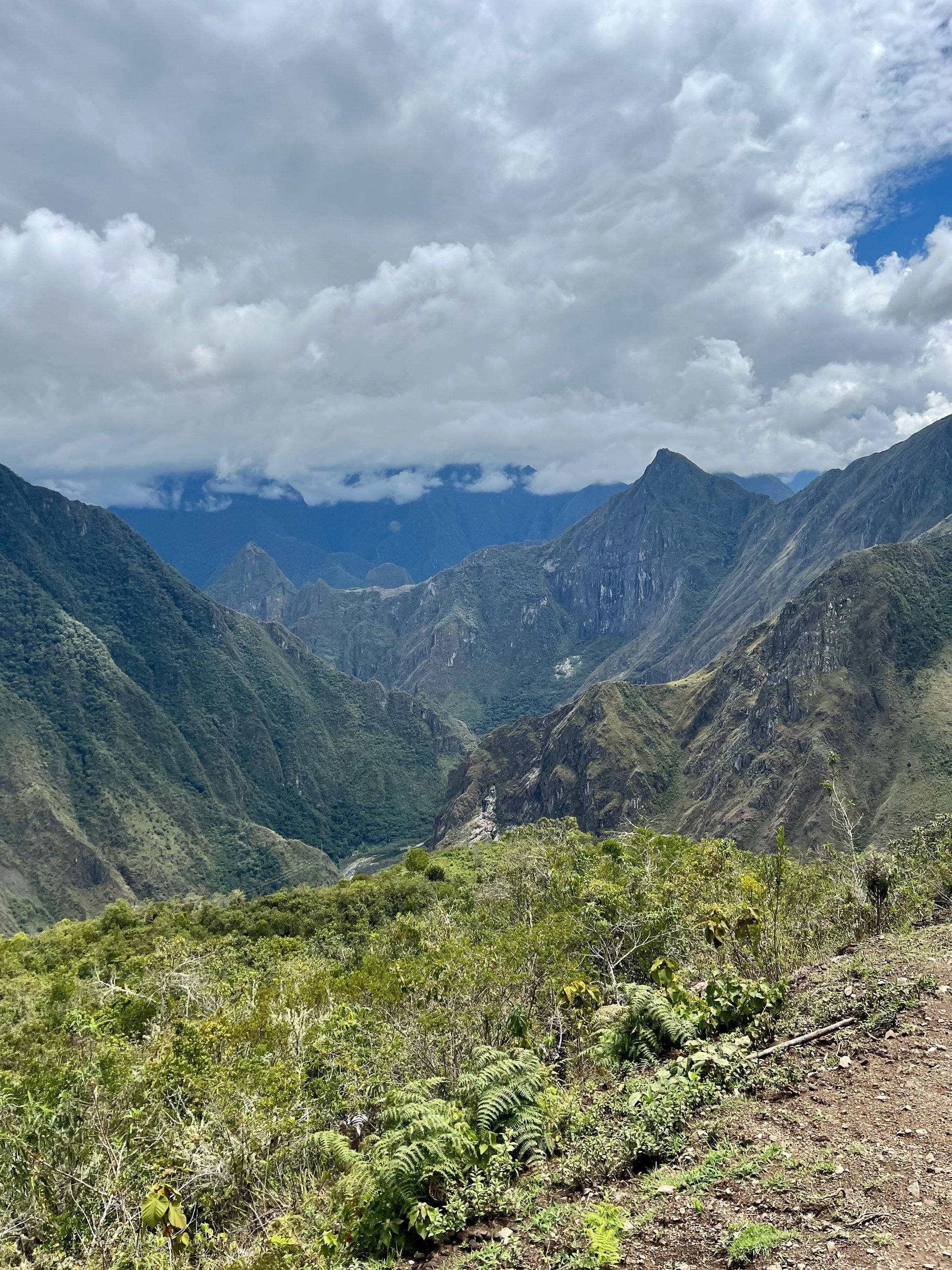



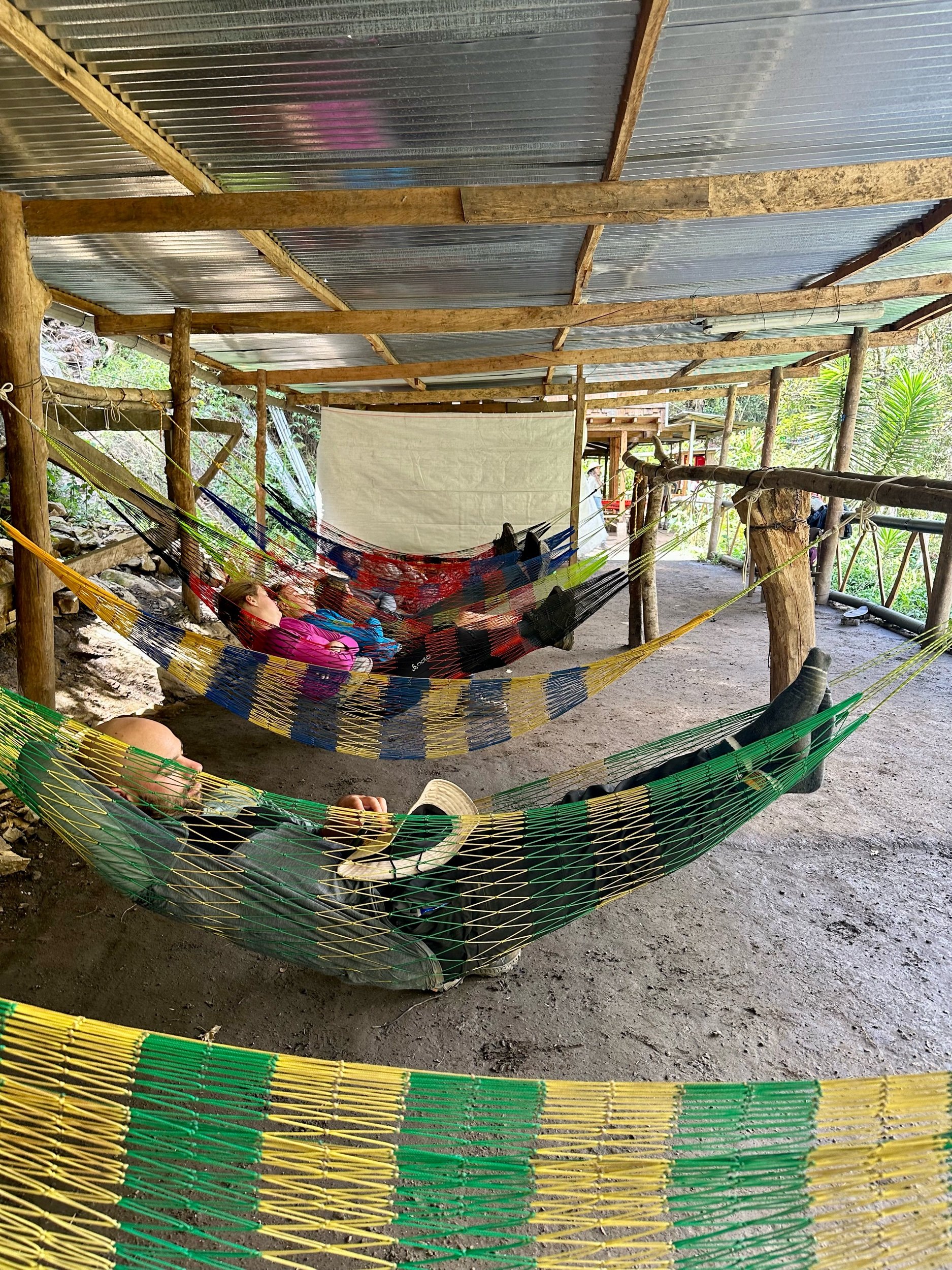
We then began our 4 hour hike along the Urubamba River to get to Aguas Calientes. Even though this stretch was flat and we were close to being done with our trek, we were struggling at this point. Everyone in our group was exhausted and we did our best to finish this up in one piece. Total distance hiked today: 15.6 miles. We were done with our trek to Machu Picchu though! We had dinner at a restaurant in Aguas Calientes and the food sucked compared to the food Chef Angel and Daniel had prepared for us so far, thanks to those guys for giving us the most delicious fuel for the long days! We were all excited for tomorrow’s day at Machu Picchu but could barely talk at dinner so bedtime was quick for all of us.
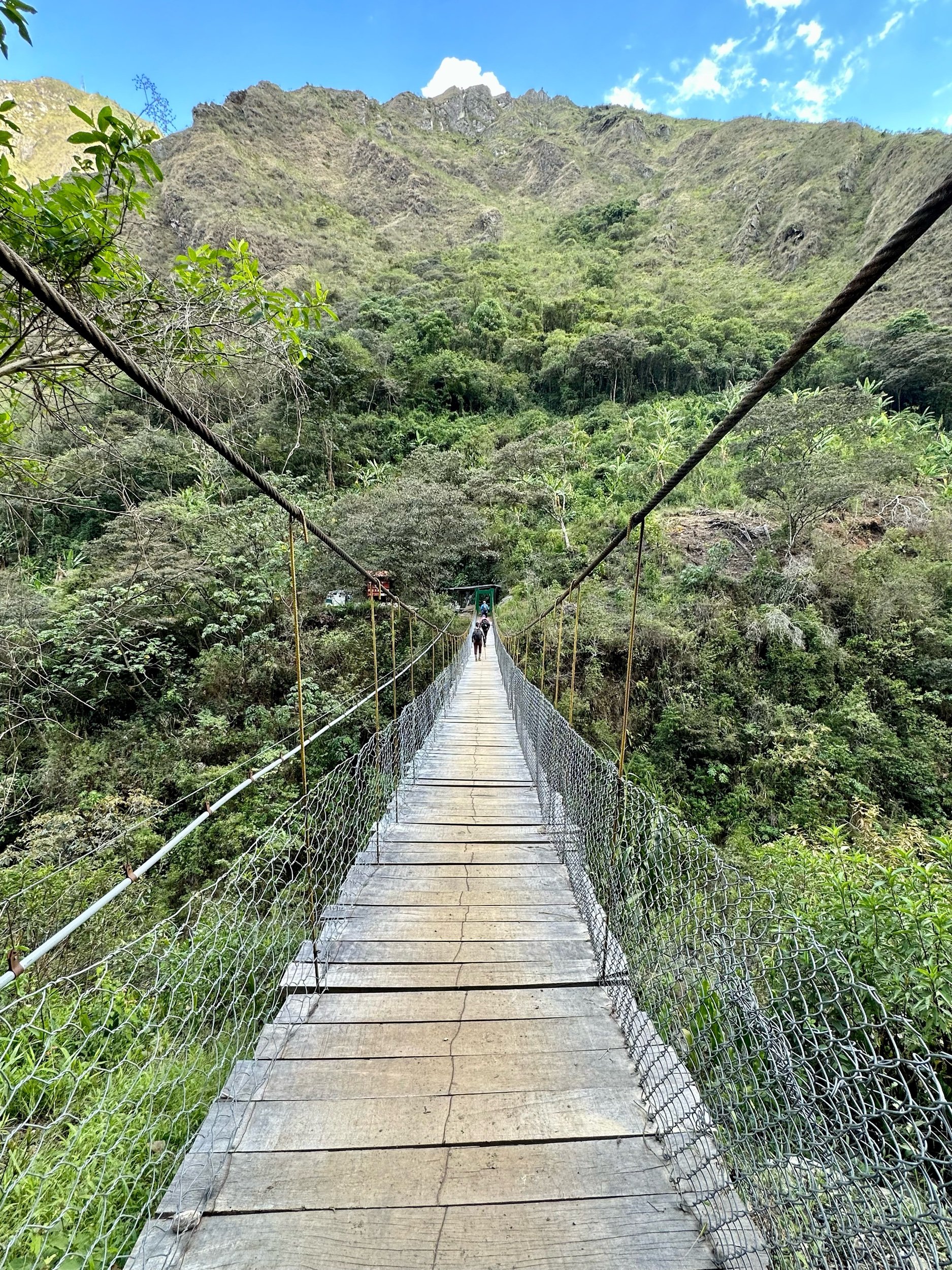
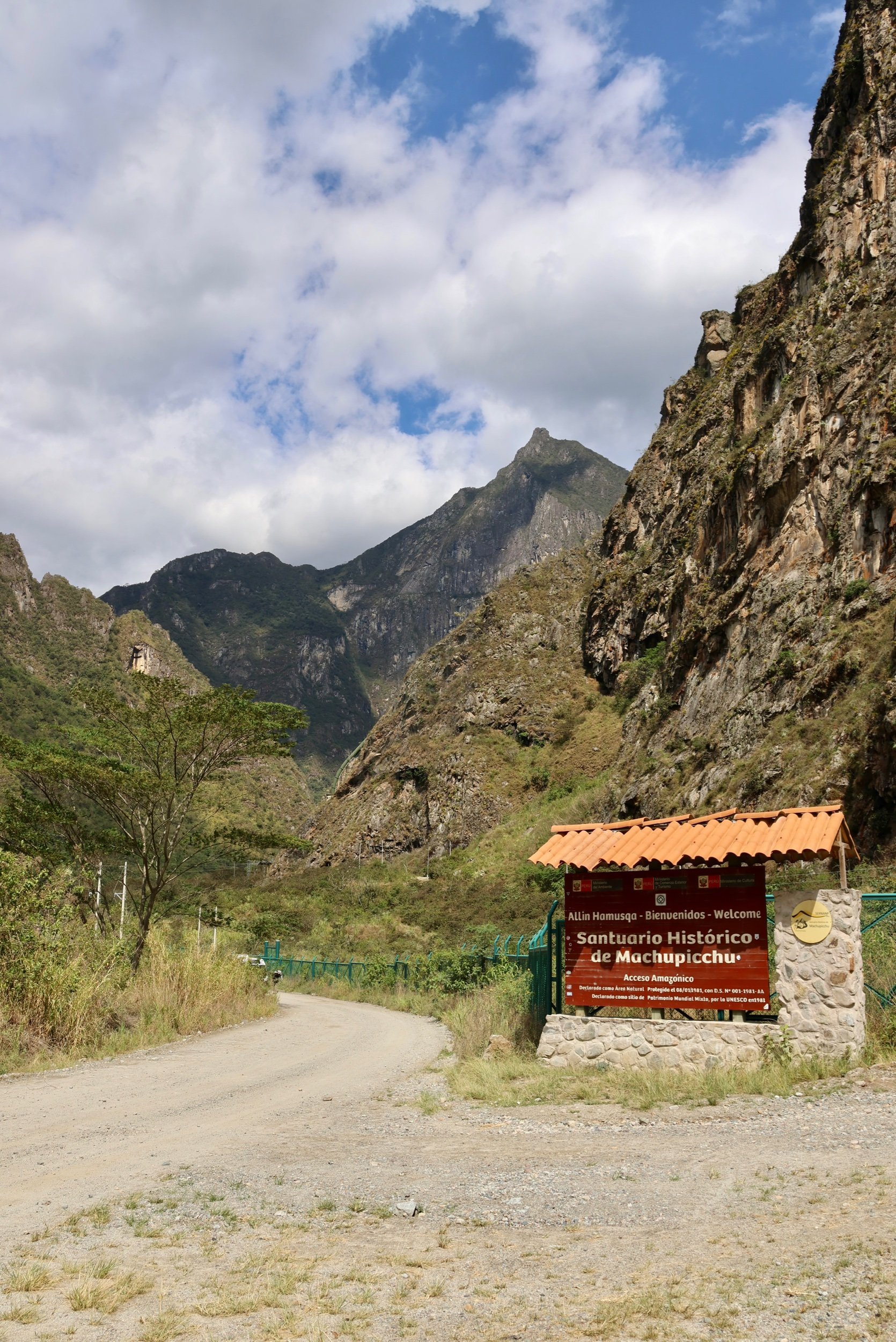
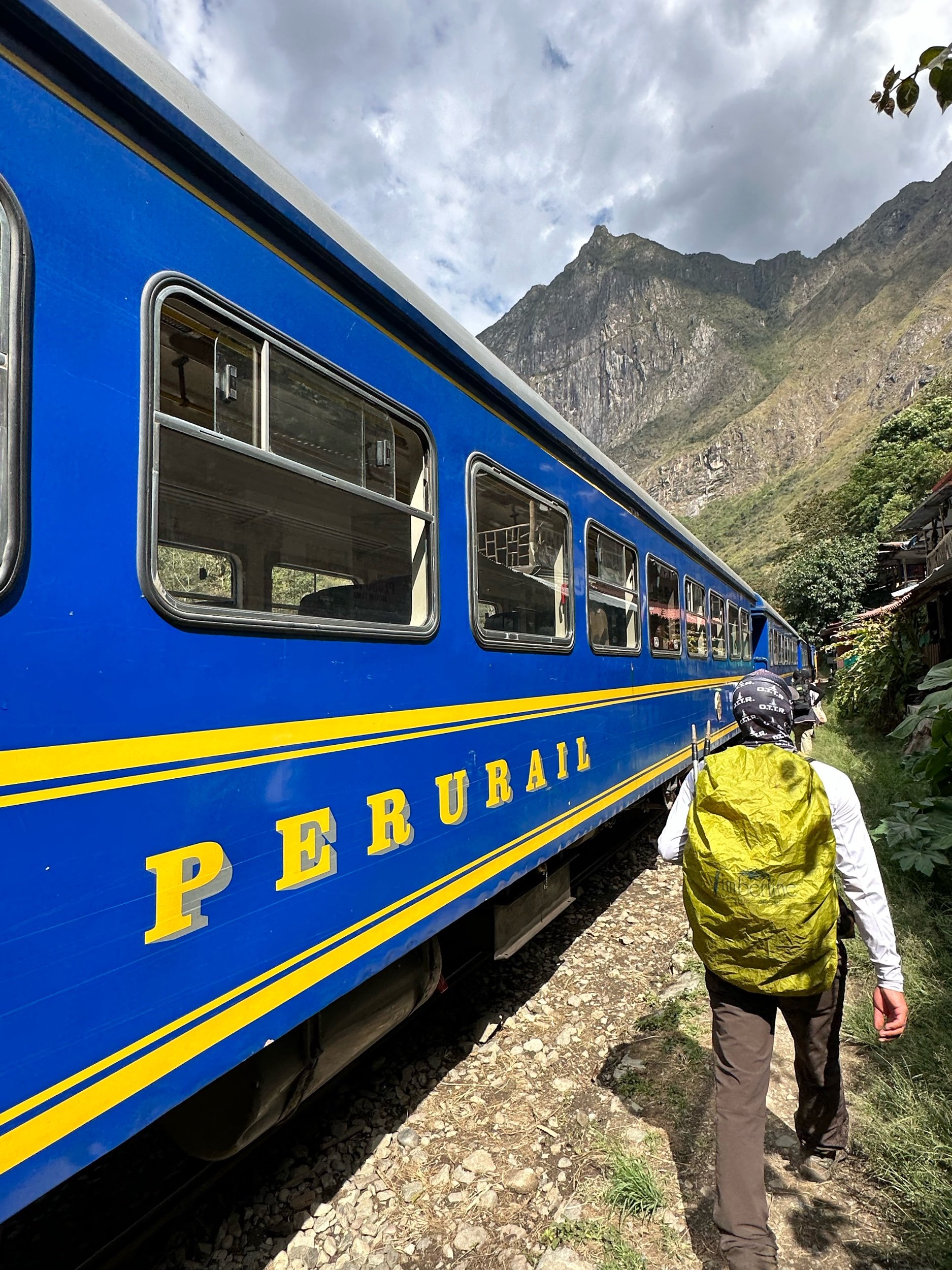
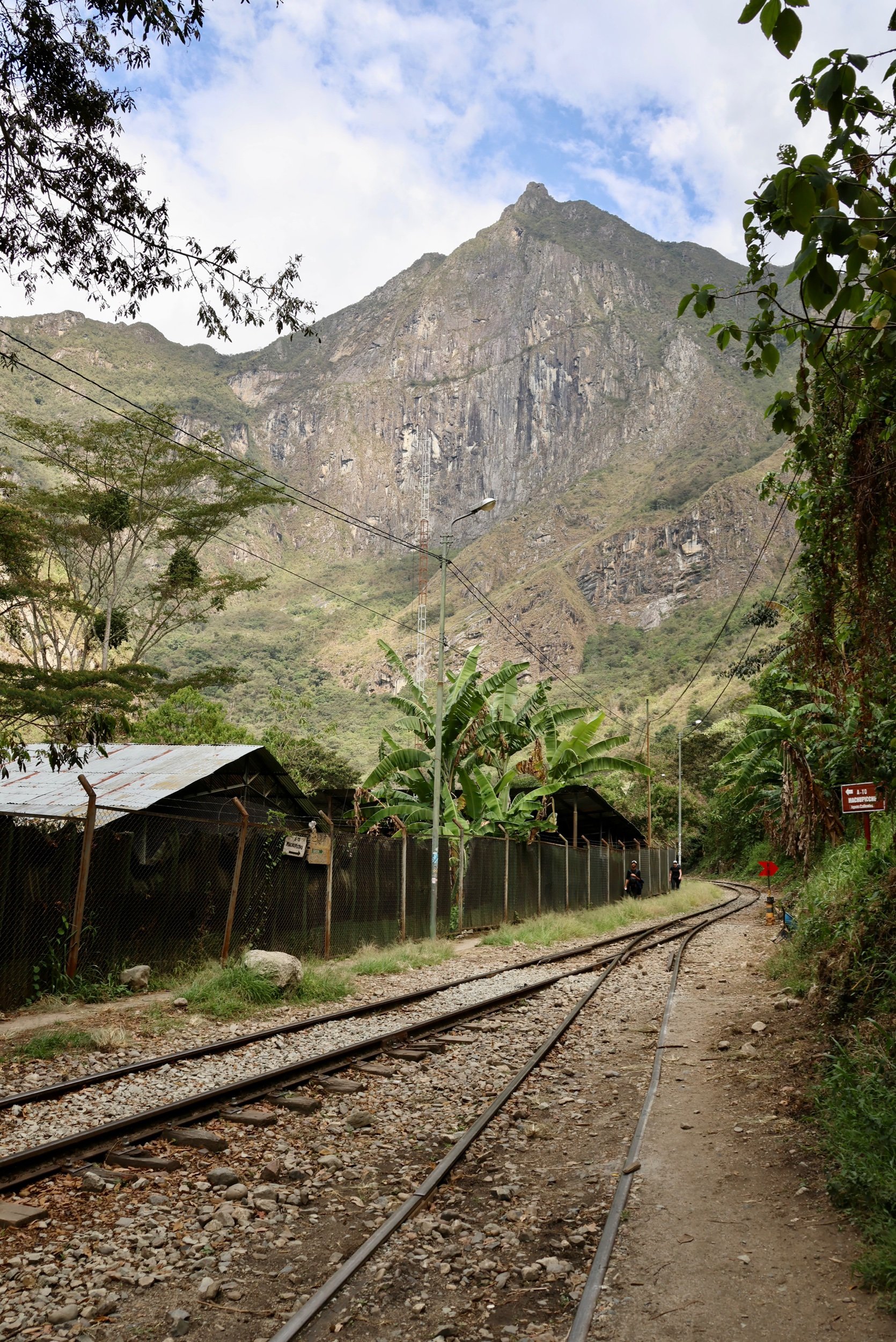


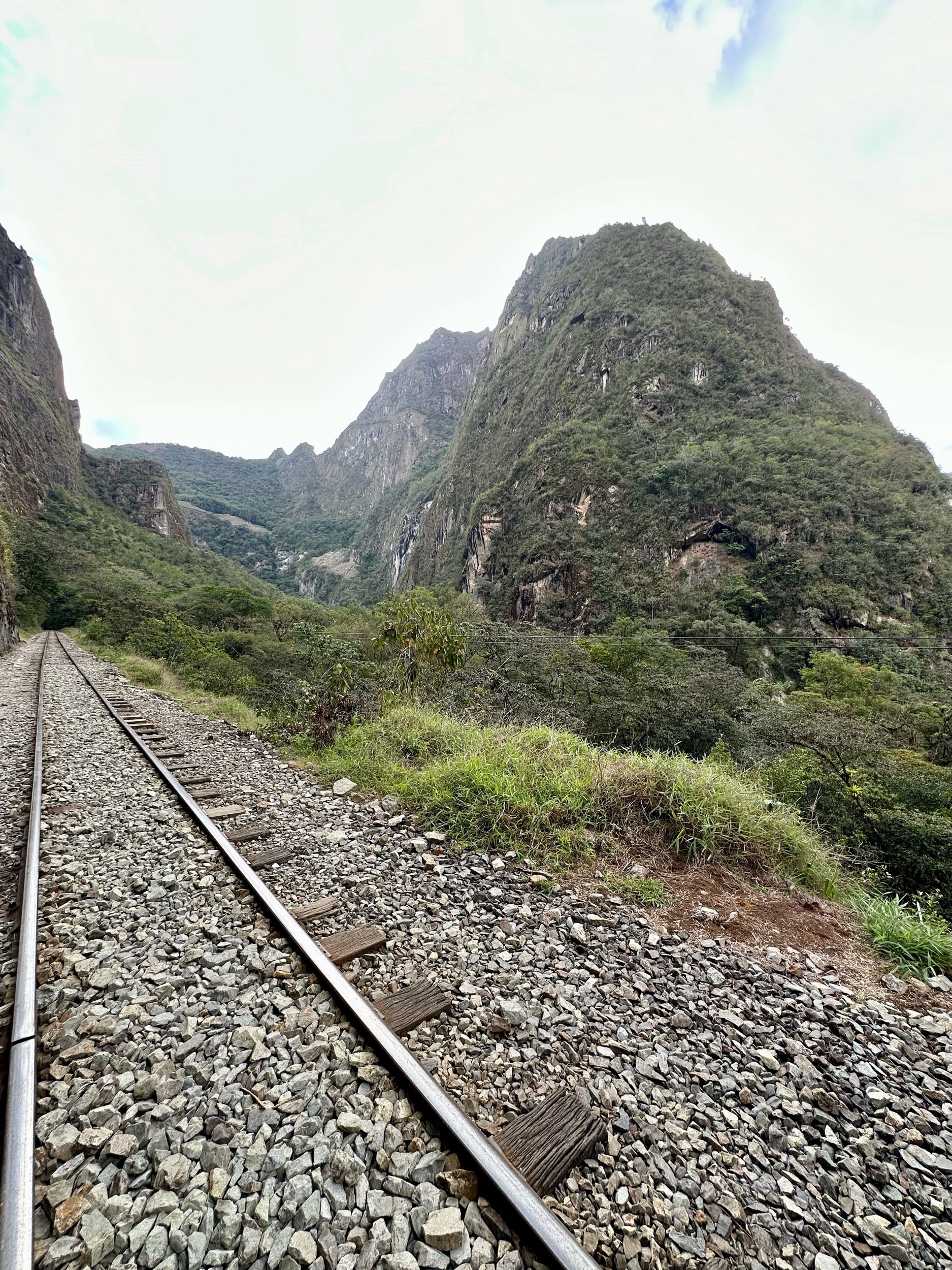
Our last day of our trek was just for us to explore Machu Picchu and then head back to Cusco, no more hiking! We had to wake up even earlier today (4:30am!) to be ready for the bus up to Machu Picchu. The ride up was 30 min of switchbacks up the Hiram Bingham road. Hiram Bingham was the American archeologist who first publicized Machu Picchu and performed the first excavations in 1911, though we now know other explorers “found” Machu Picchu before he did and really the whole concept of “found Machu Picchu” doesn’t quite make sense because local people still knew about it through the years, it just wasn’t used for anything anymore. Machu Picchu was the most sacred city in the Inca empire. They performed sacred rituals here and had important meetings with leaders. When the Spanish began invading, the Inca empire destroyed all roads leading to Machu Picchu in order to protect it. It worked since the Spanish never found the city and the ruins were peacefully covered by the jungle for the next 400 years.
We made it into the ruins and were glad we did early, we basically had the place to ourselves! Erik, our guide, took us through the ruins and taught us many facts about the city. It was a magical place that contained so much awe and history. The scenery itself was also incredible; Machu Picchu is located between two mountains, on a river bend, surrounded by other mountains on all sides. It was impossible to capture the beauty and majesty of the setting; I can definitely tell why the Incas deemed this place Sacred. We learned about the agricultural terraces, the retaining walls built for drainage and support, the temples they used, and saw more incredible stone masonry. The rest of the day was a slog getting back to Cusco; we started with a beautiful train ride back to Ollantaytambo and then a small bus back to Cusco. We mostly slept when we could and chatted about our incredible week! Learning about the Inca culture during our week in Cusco and our week hiking to Machu Picchu was such a rich and rewarding experience. We got a deep appreciation for the Inca people and culture, and even learned some things about the current struggles in Peru between the descendants of the Incas and the Spanish. Machu Picchu was a great reminder of the power of the human spirit and connection, and also about what can be lost when we forget we are all more similar than different.
